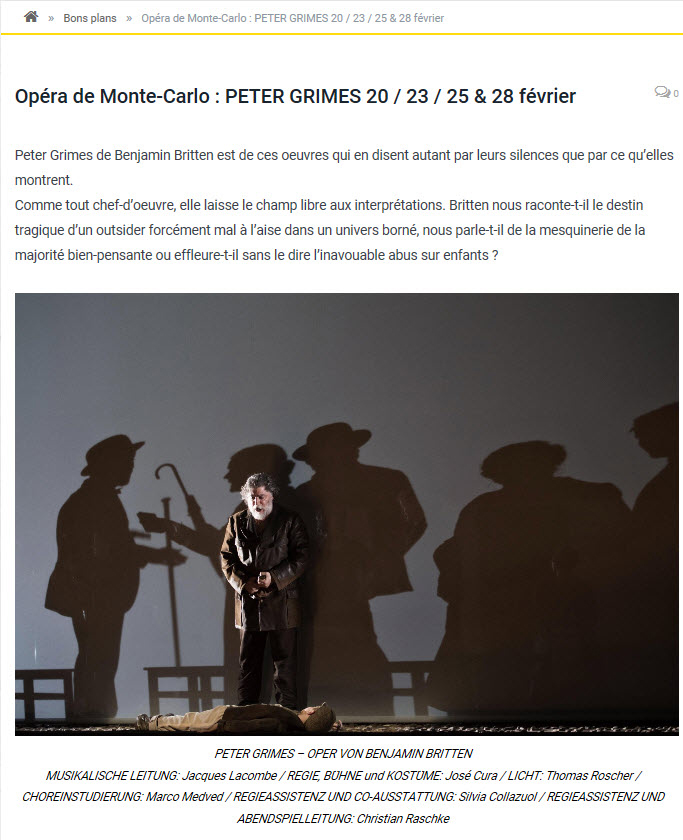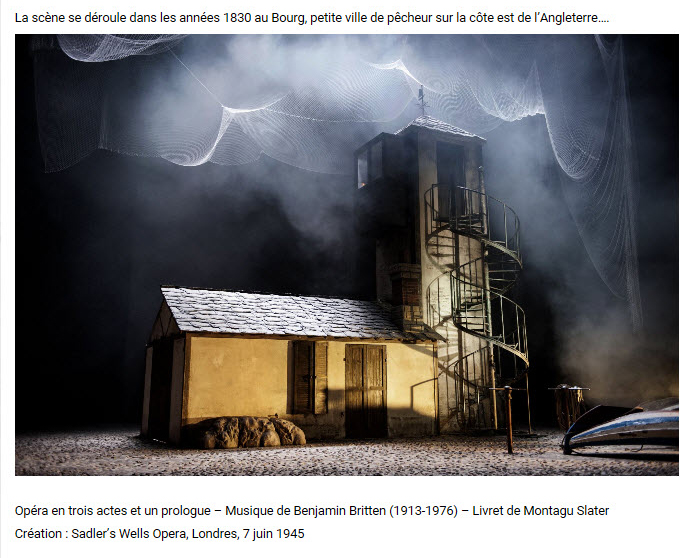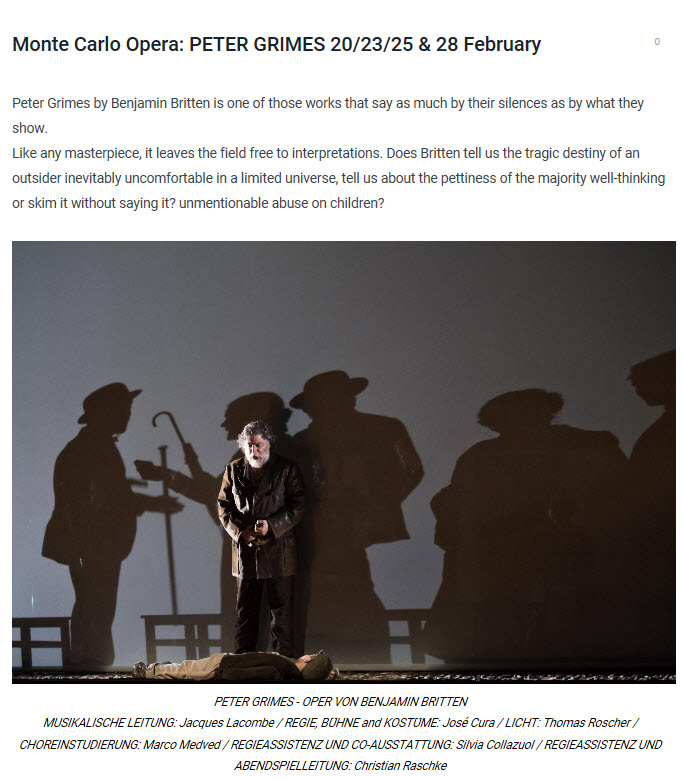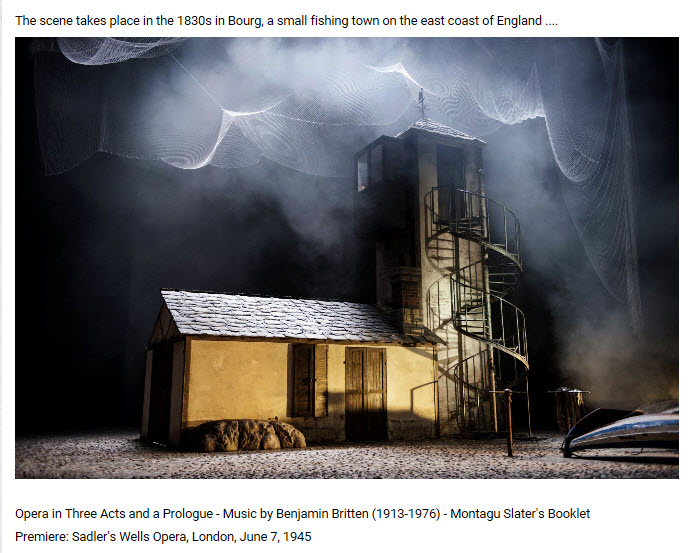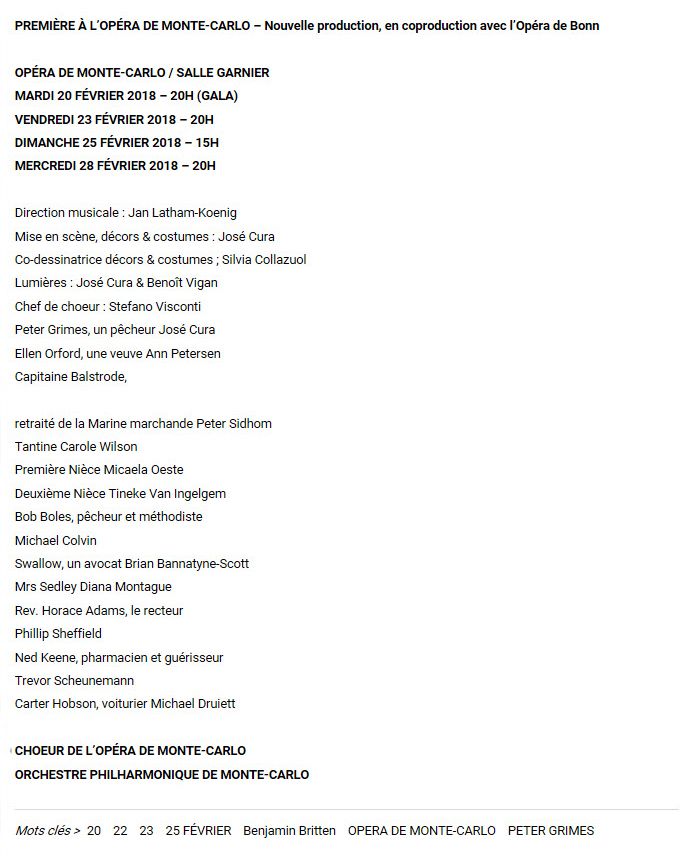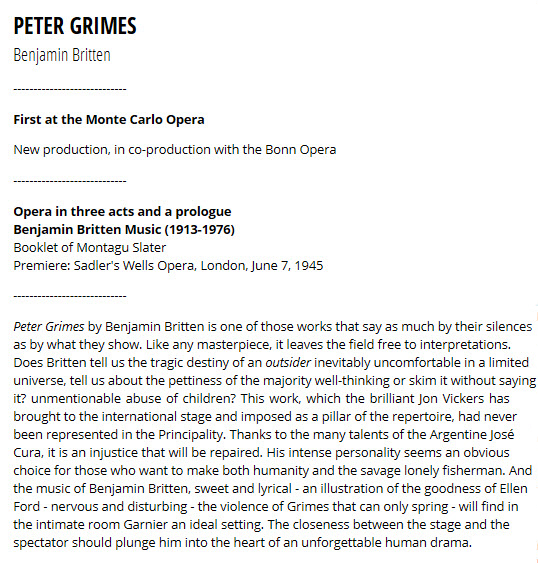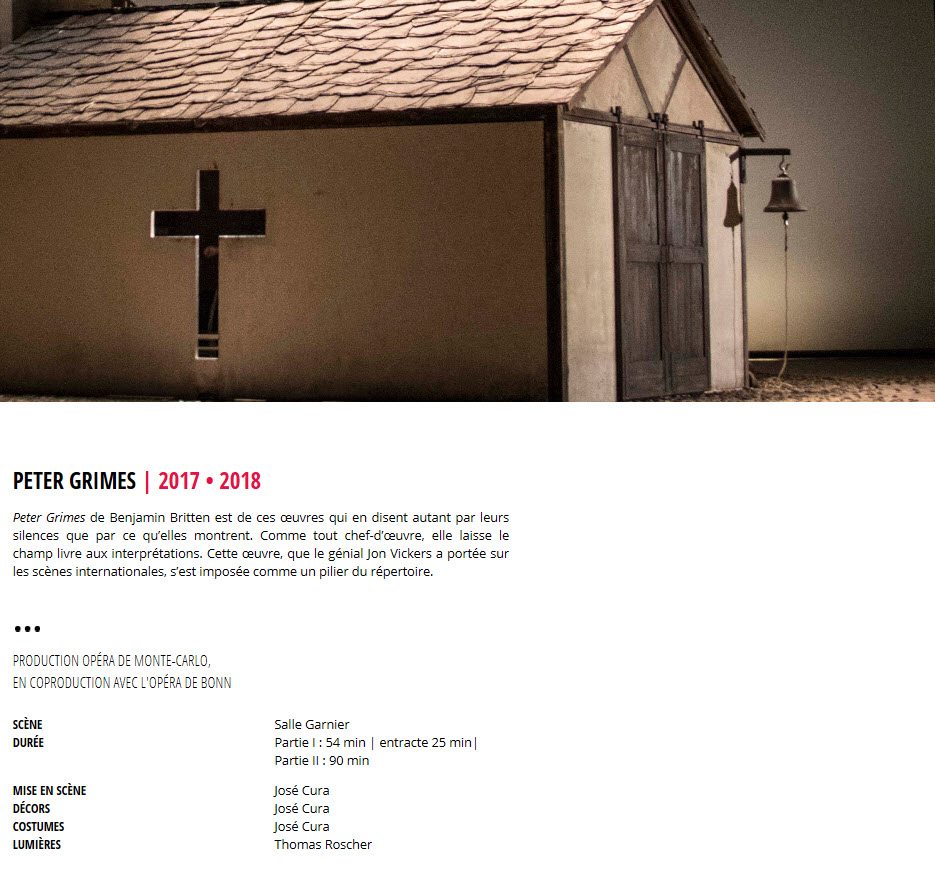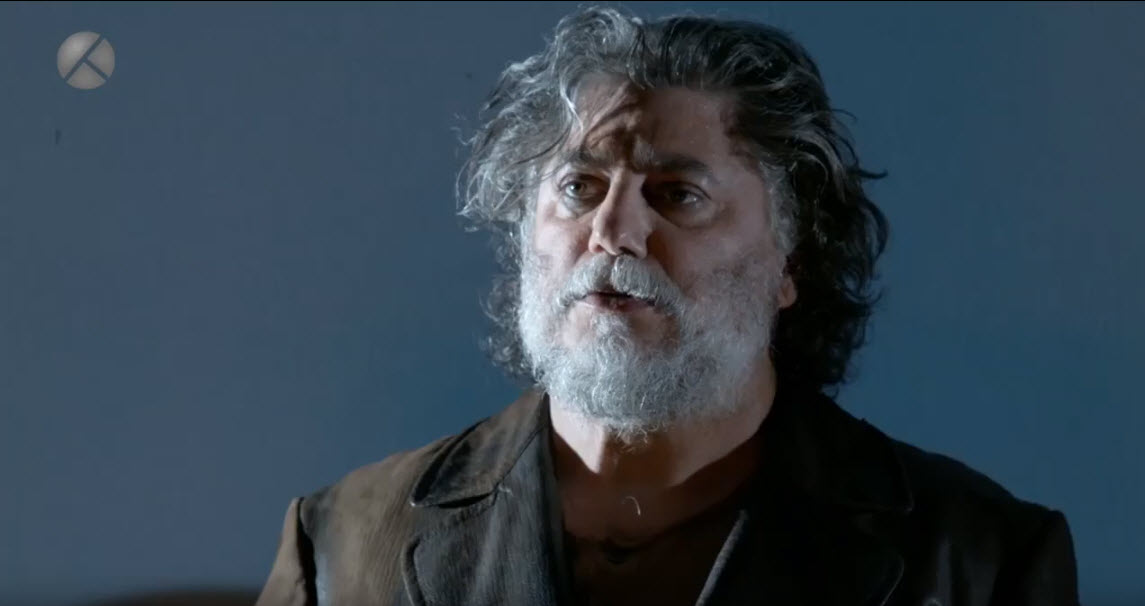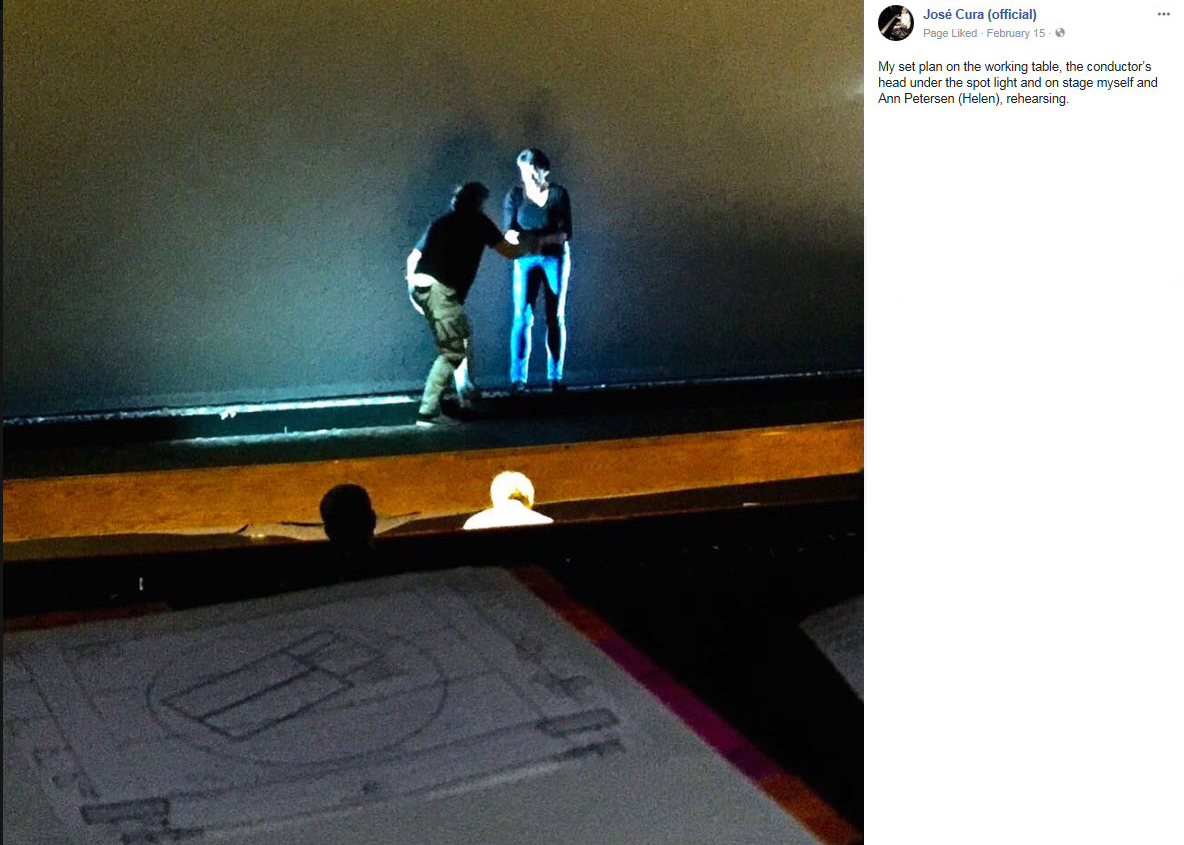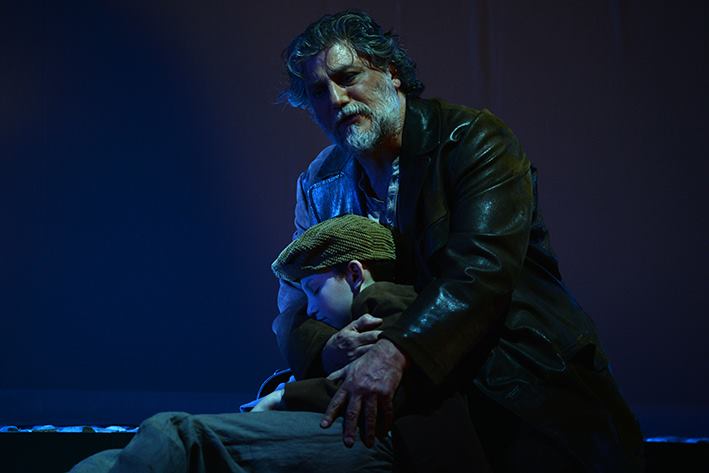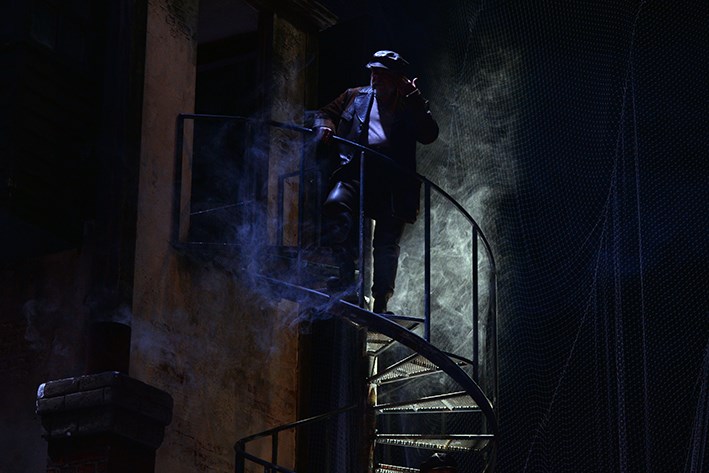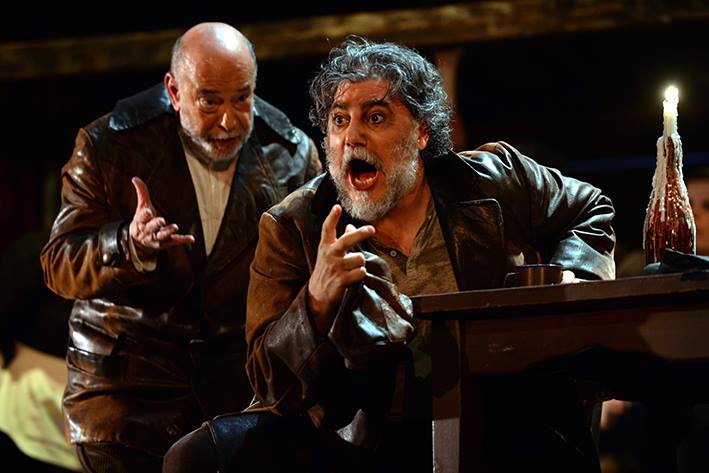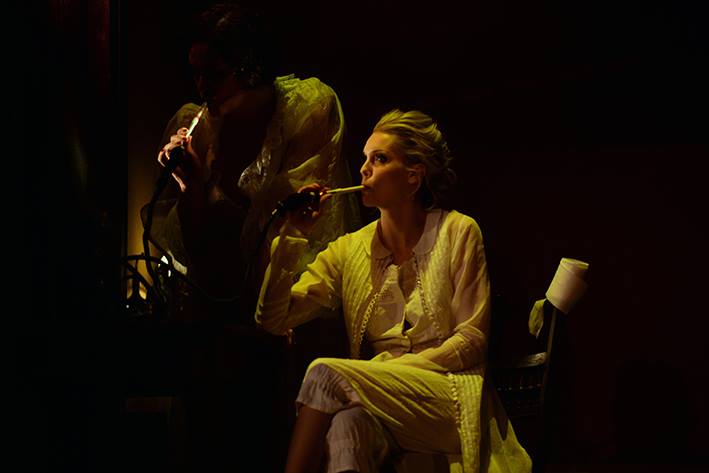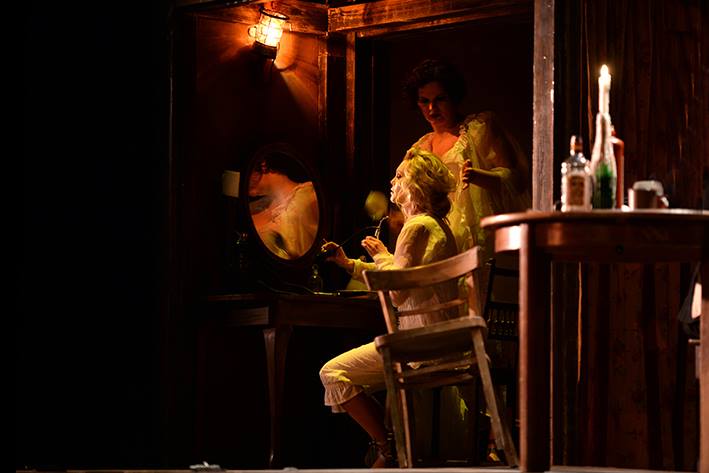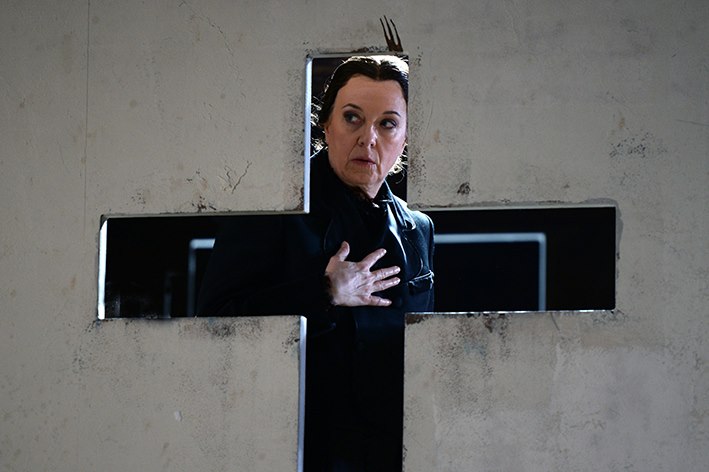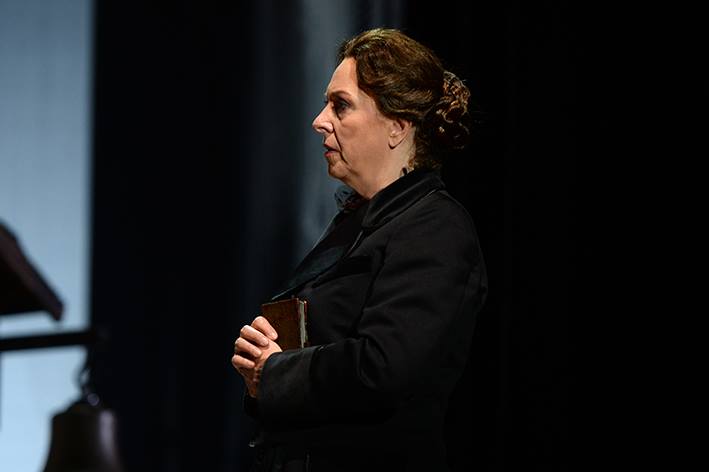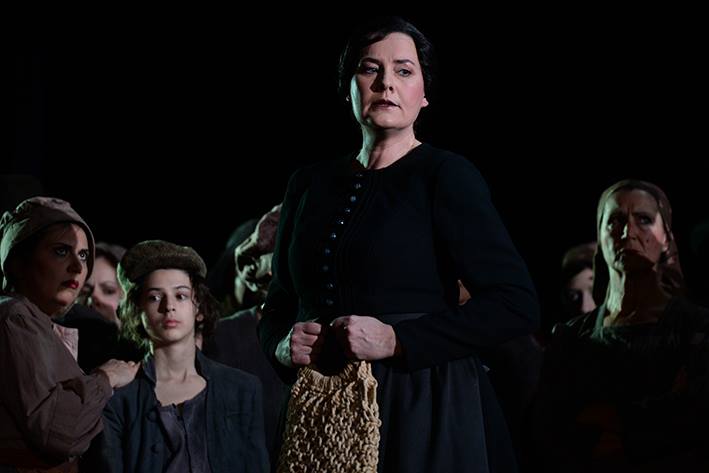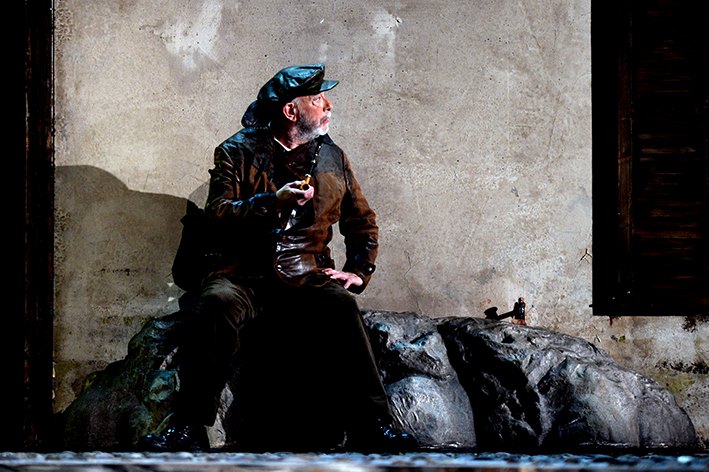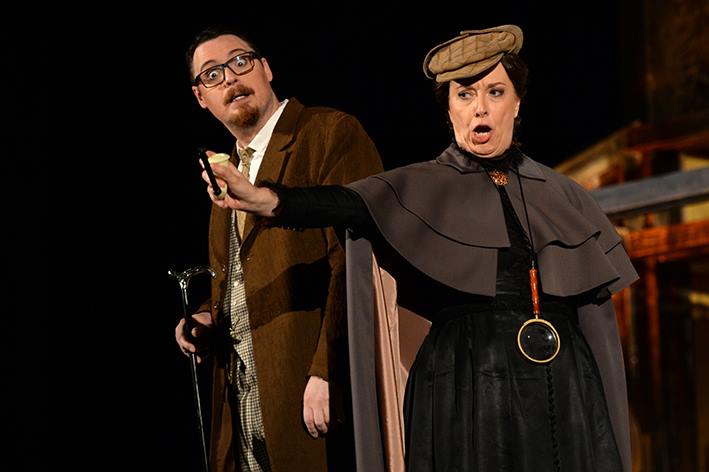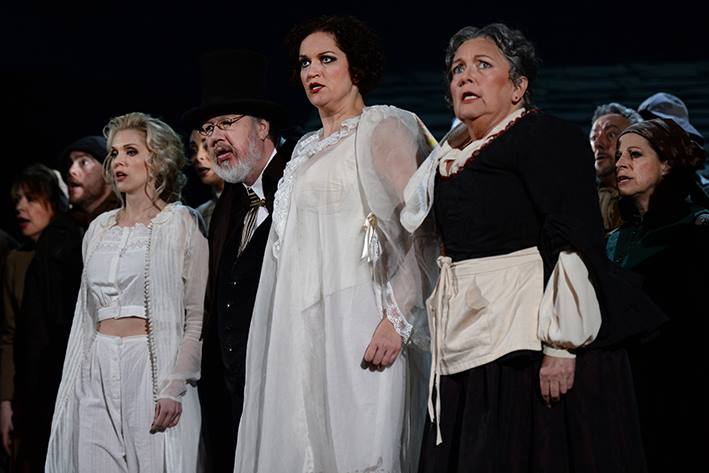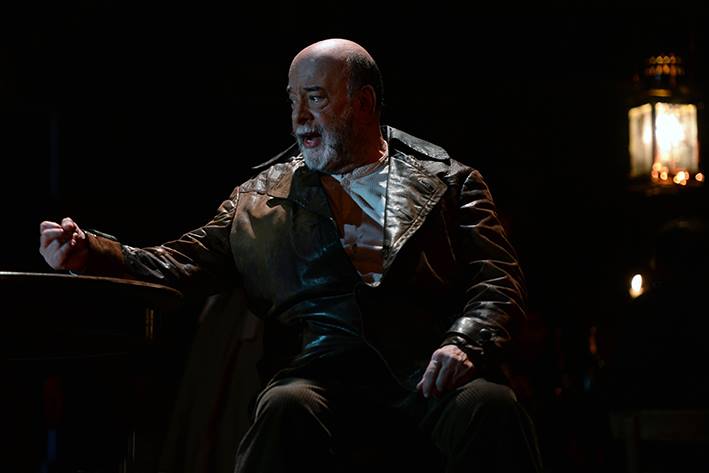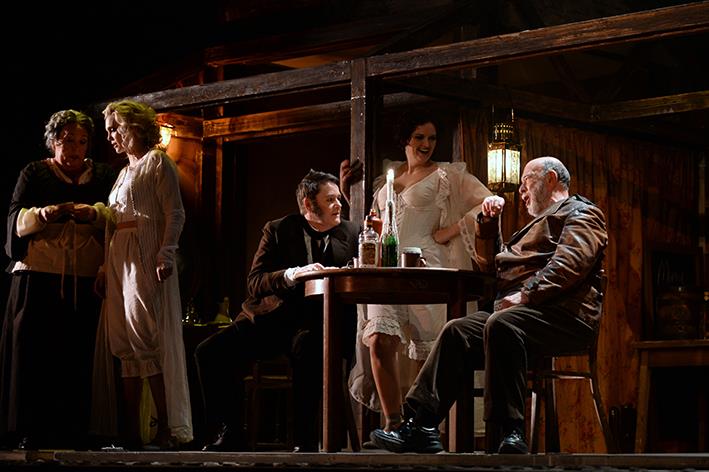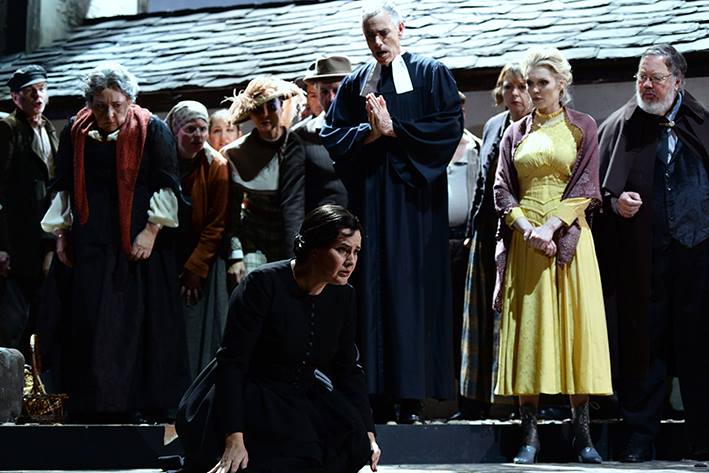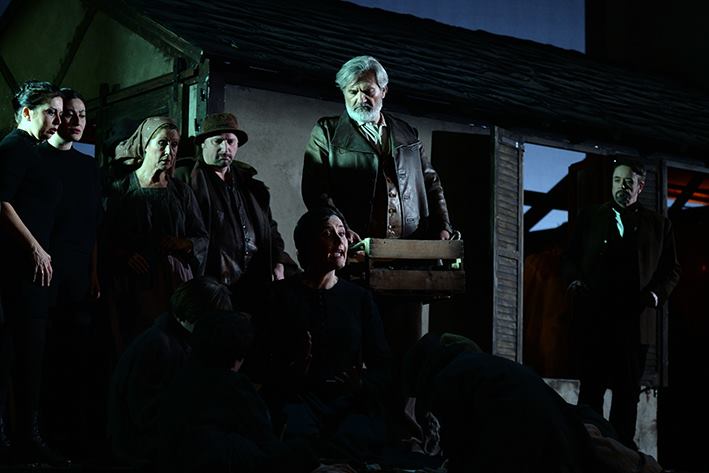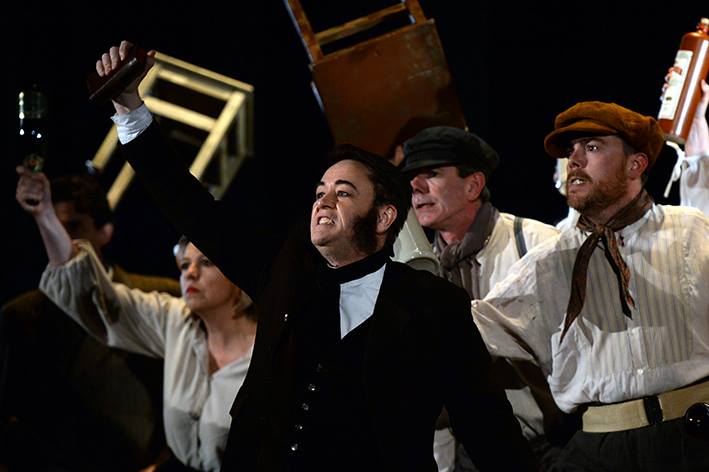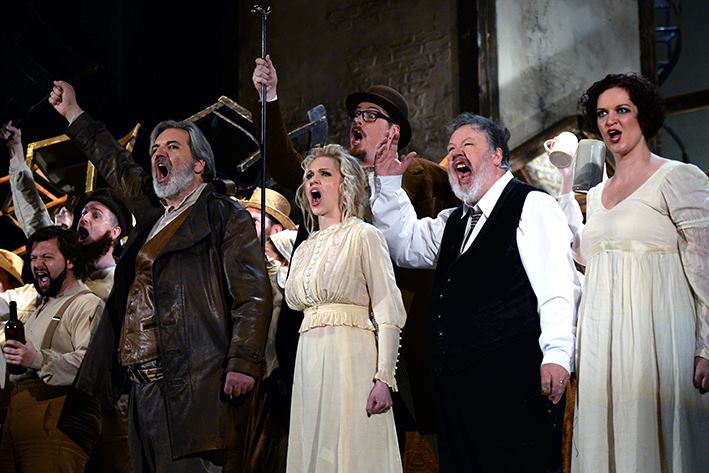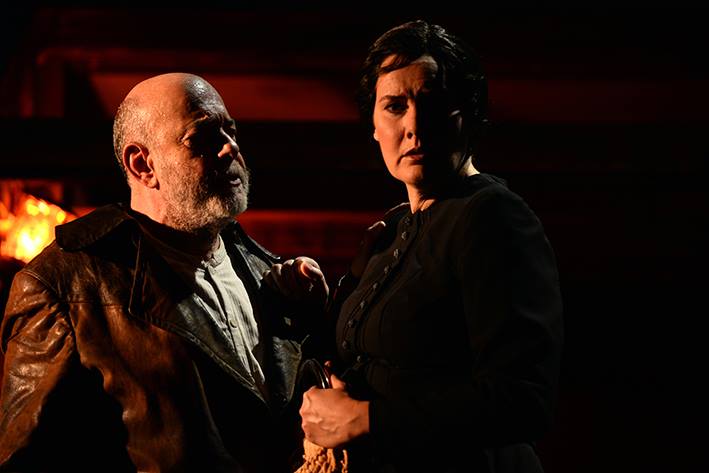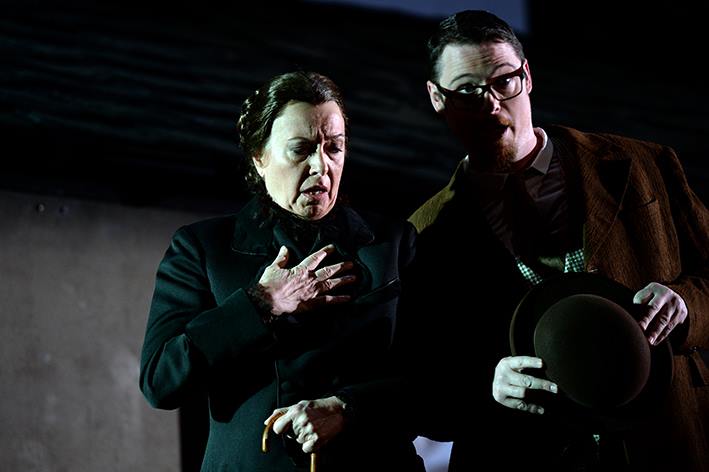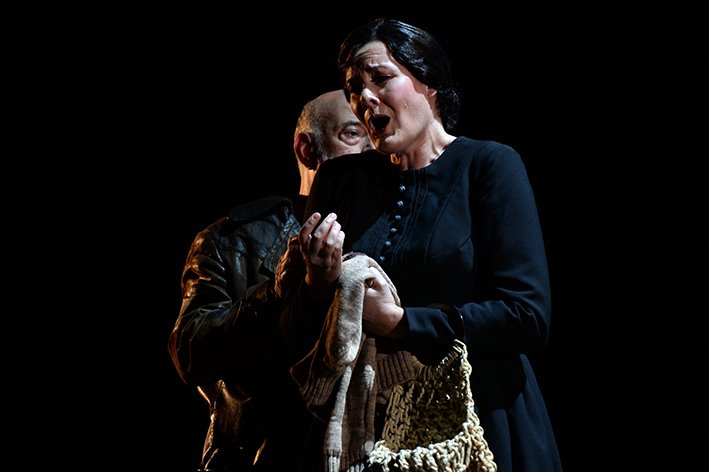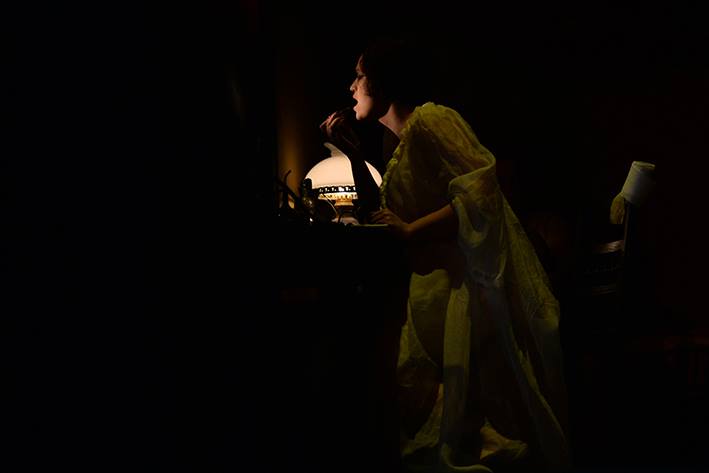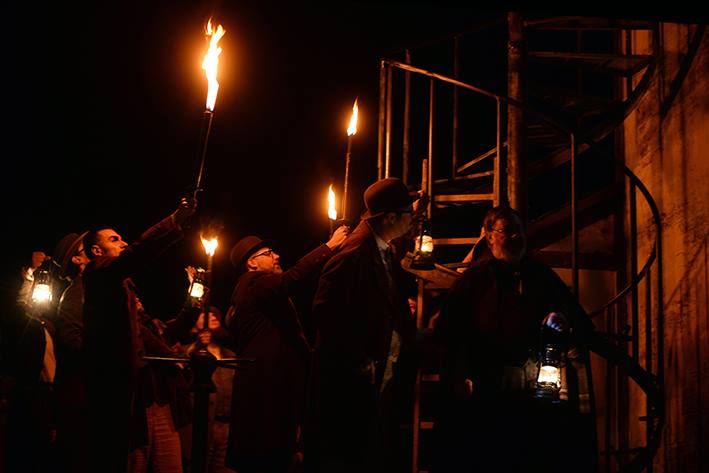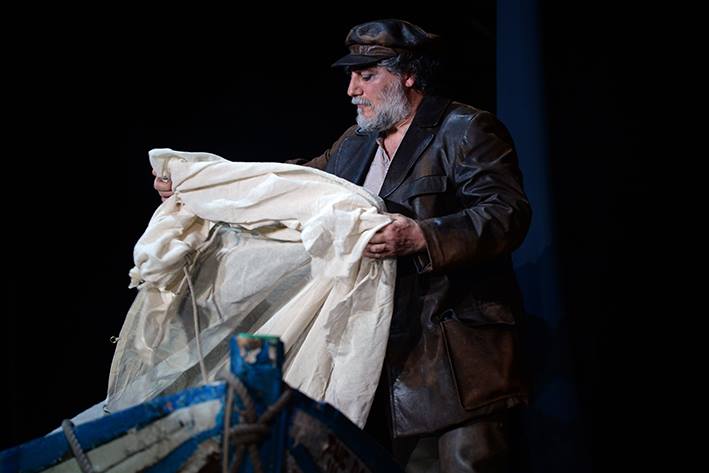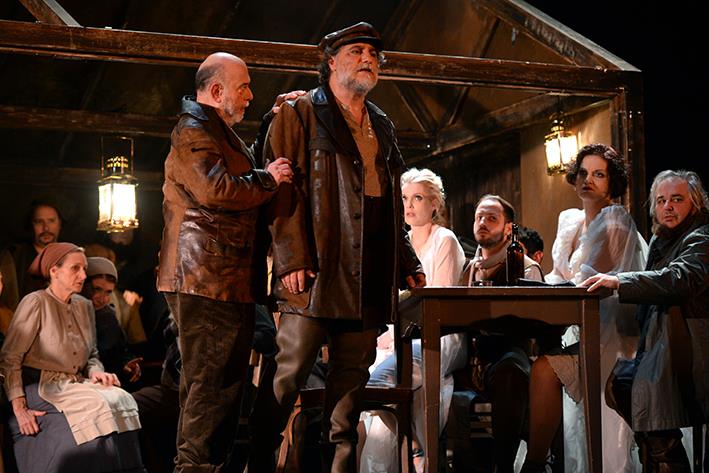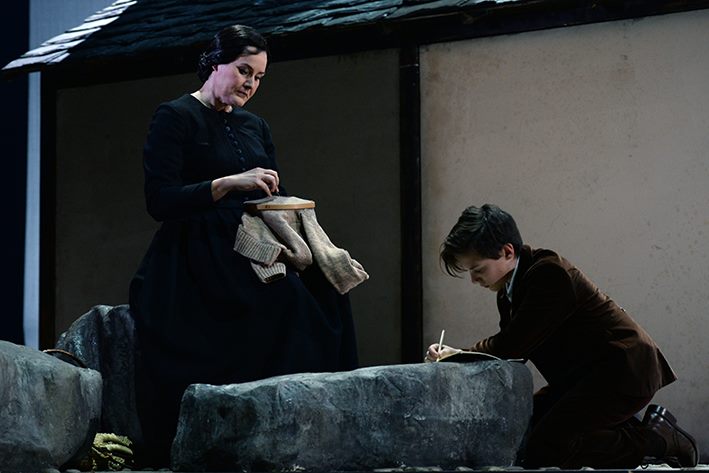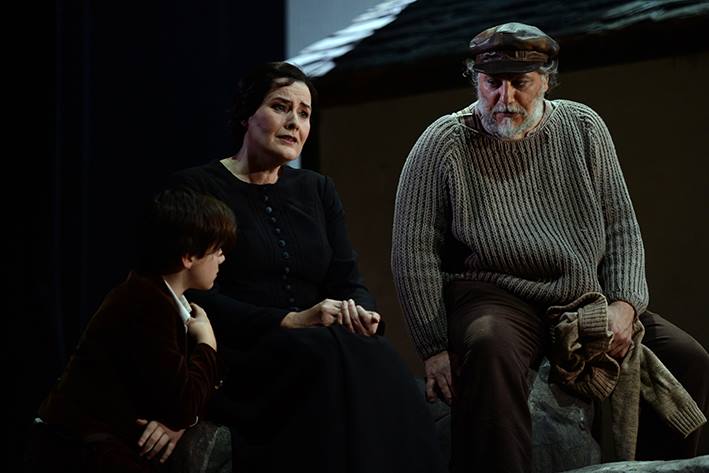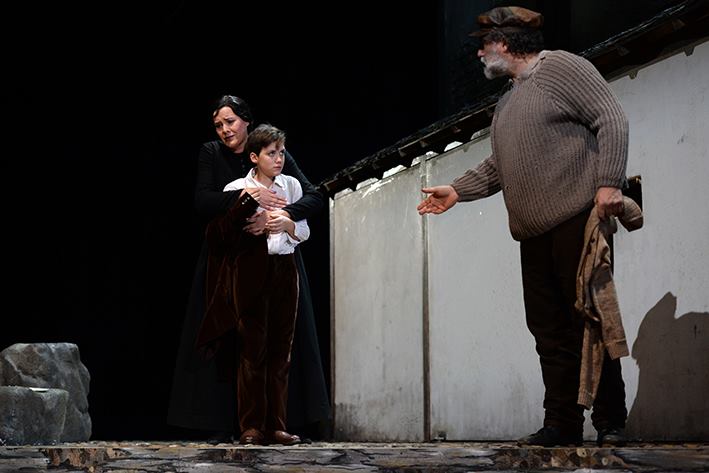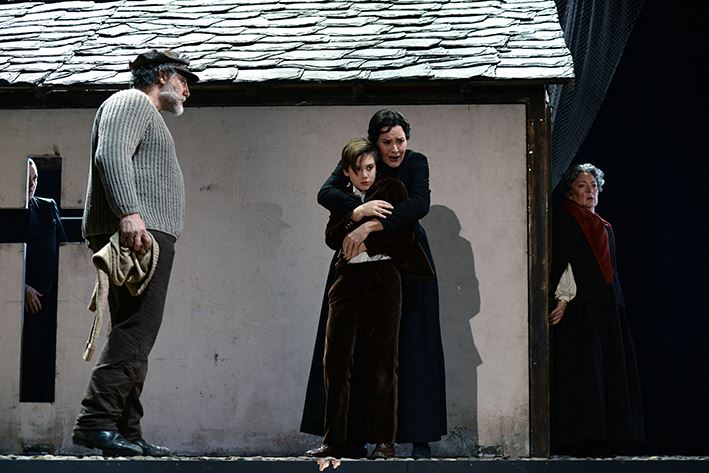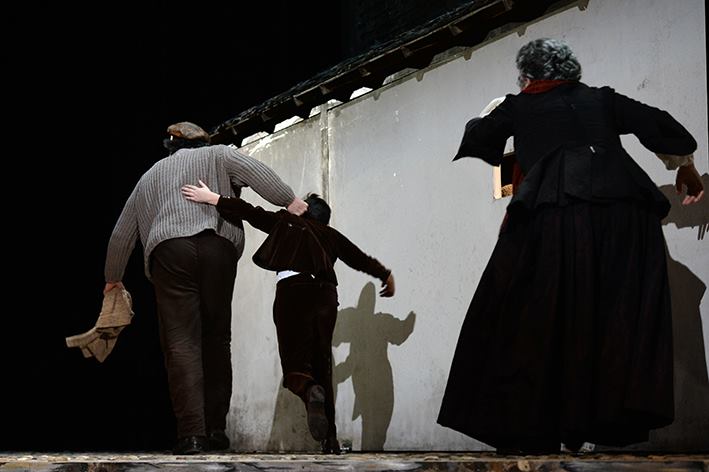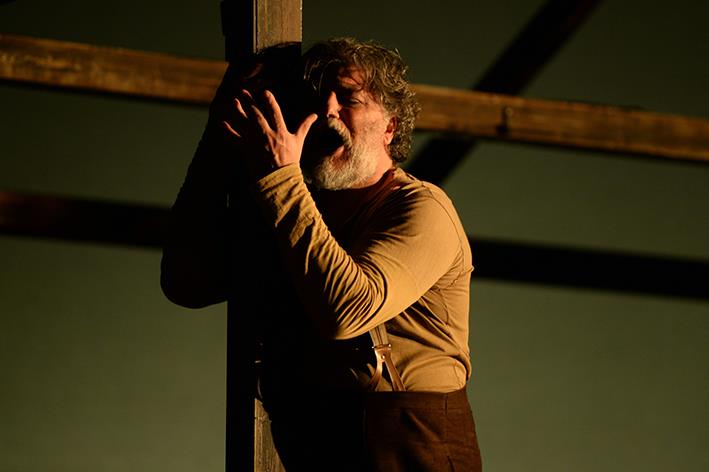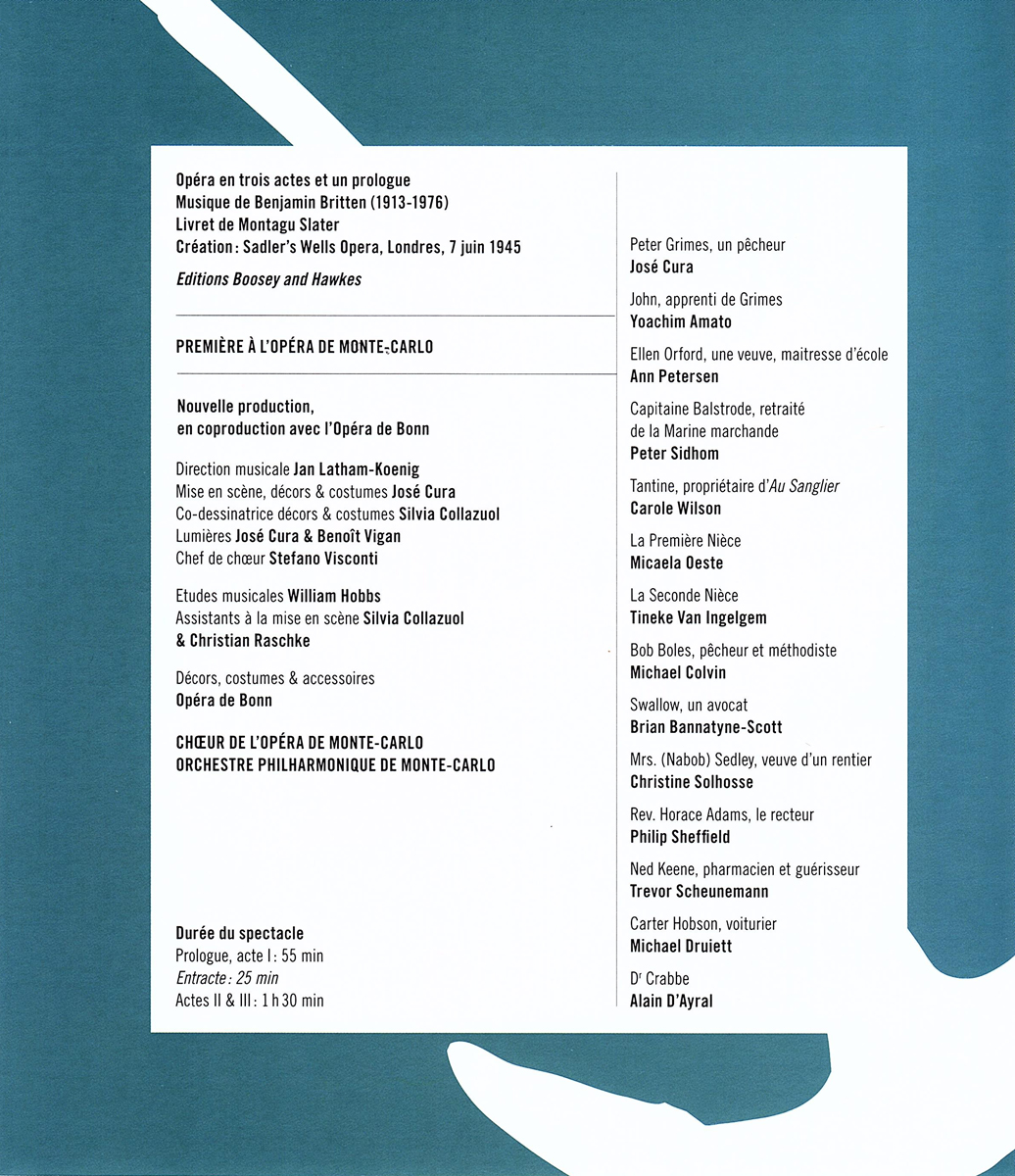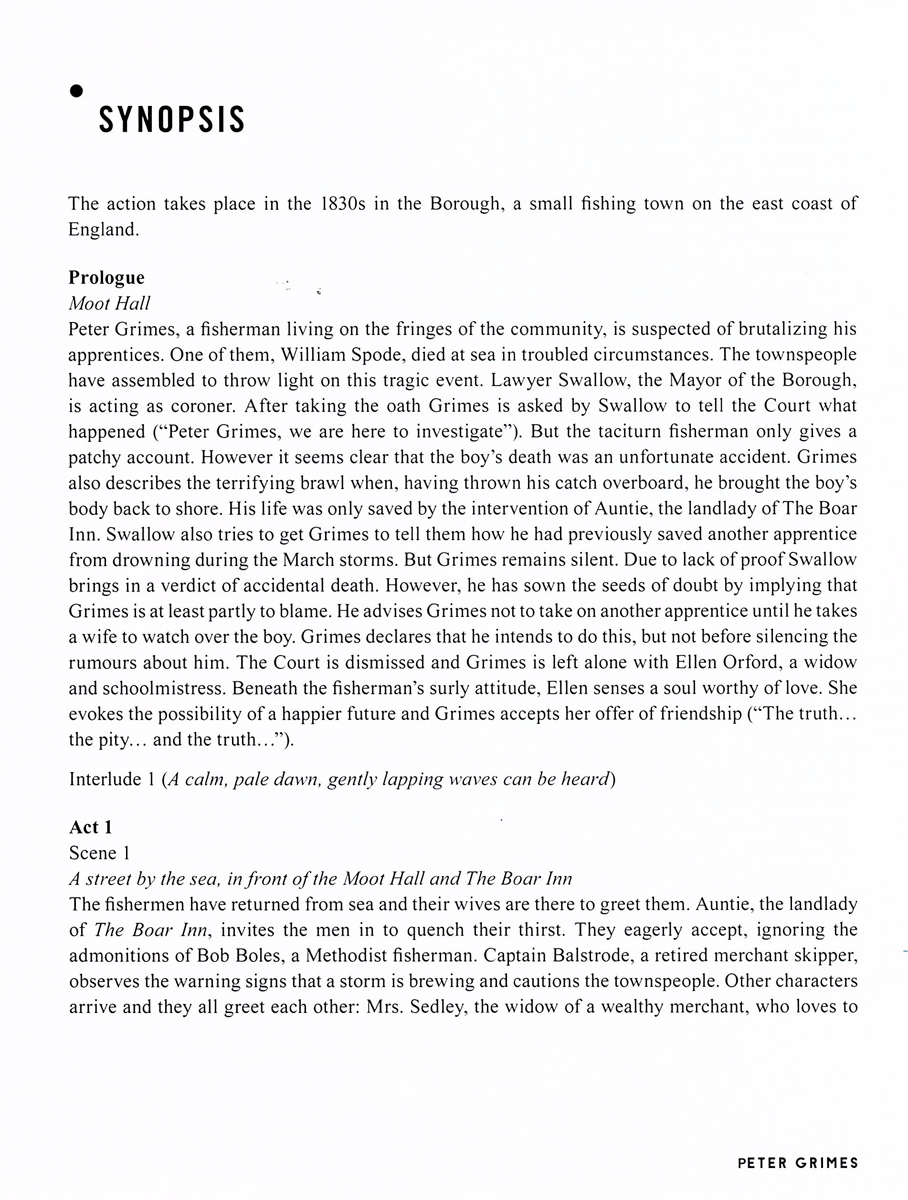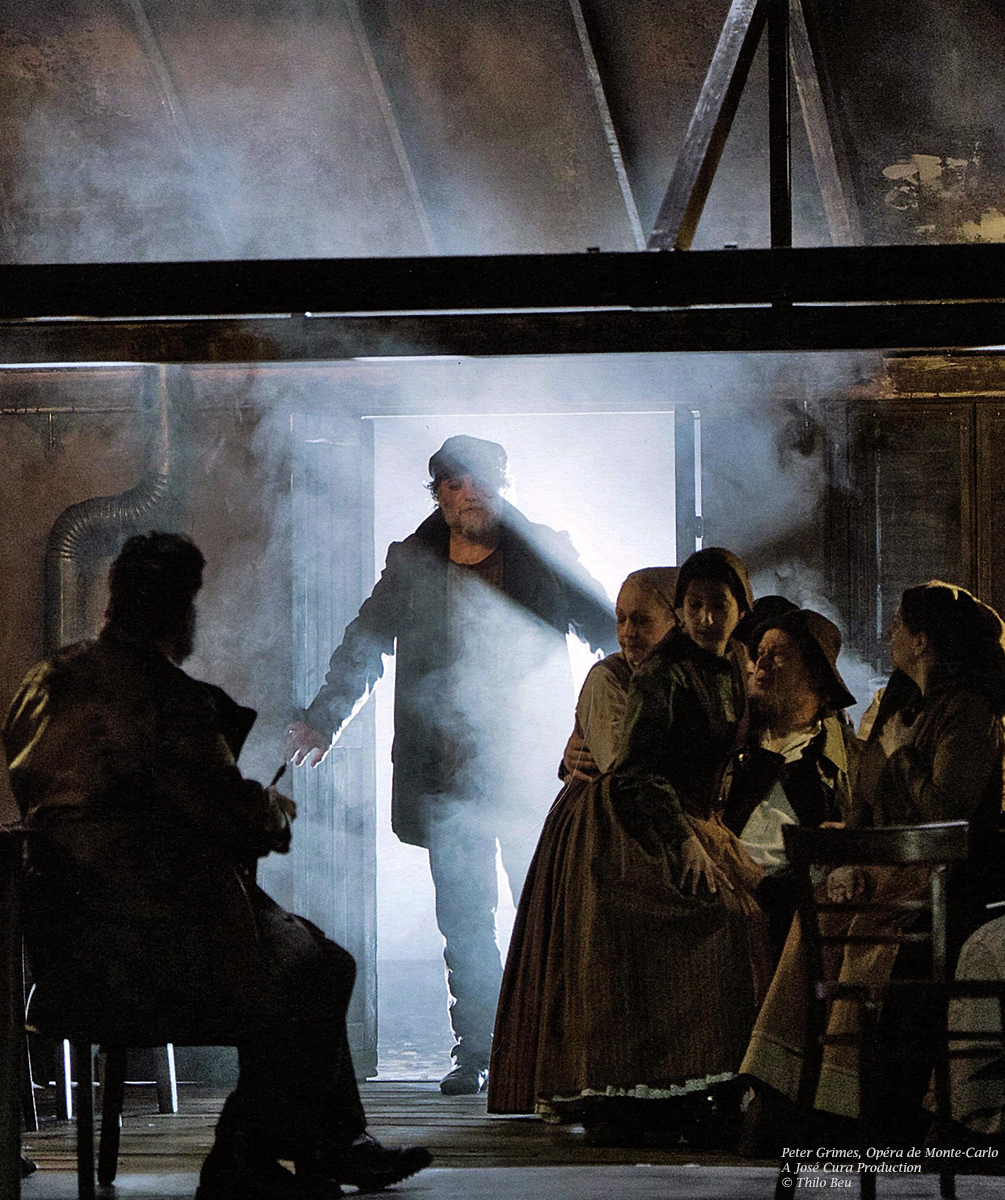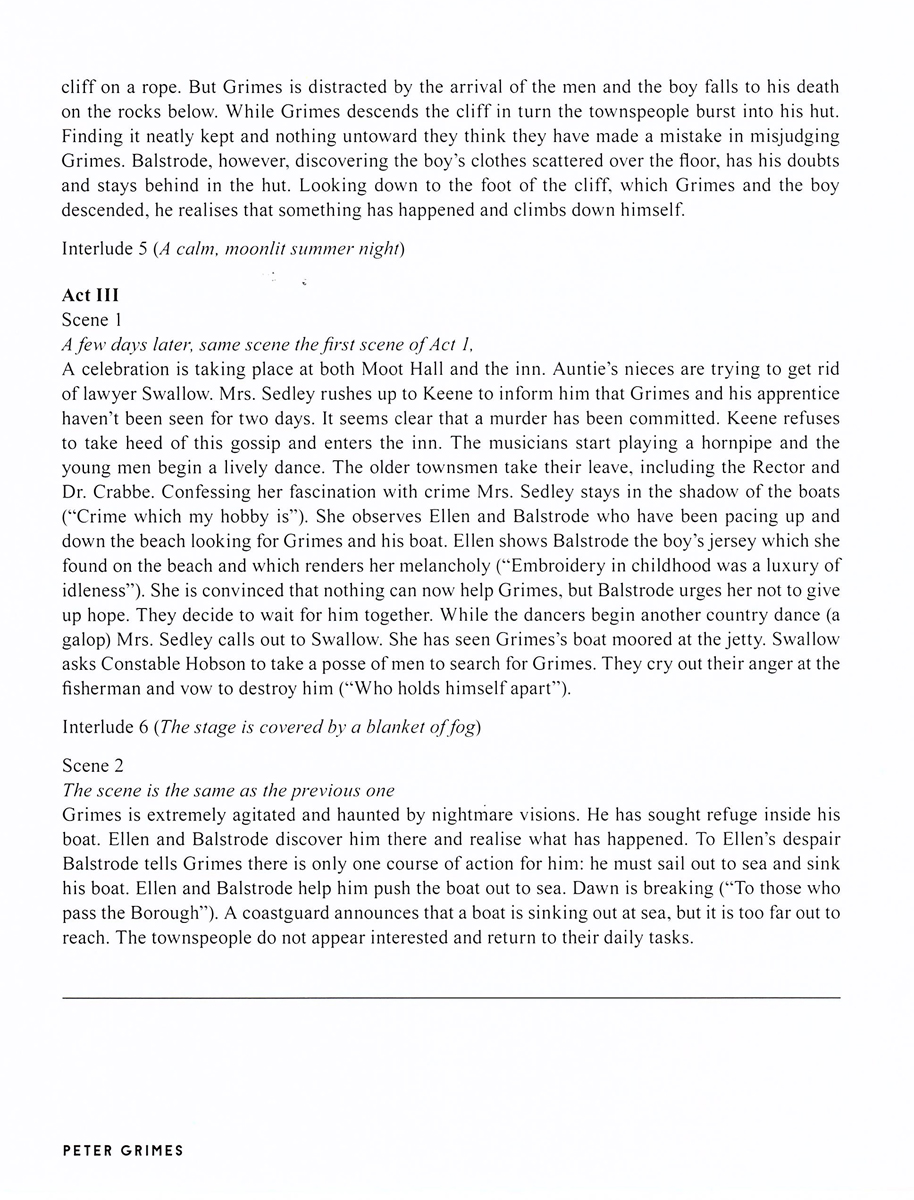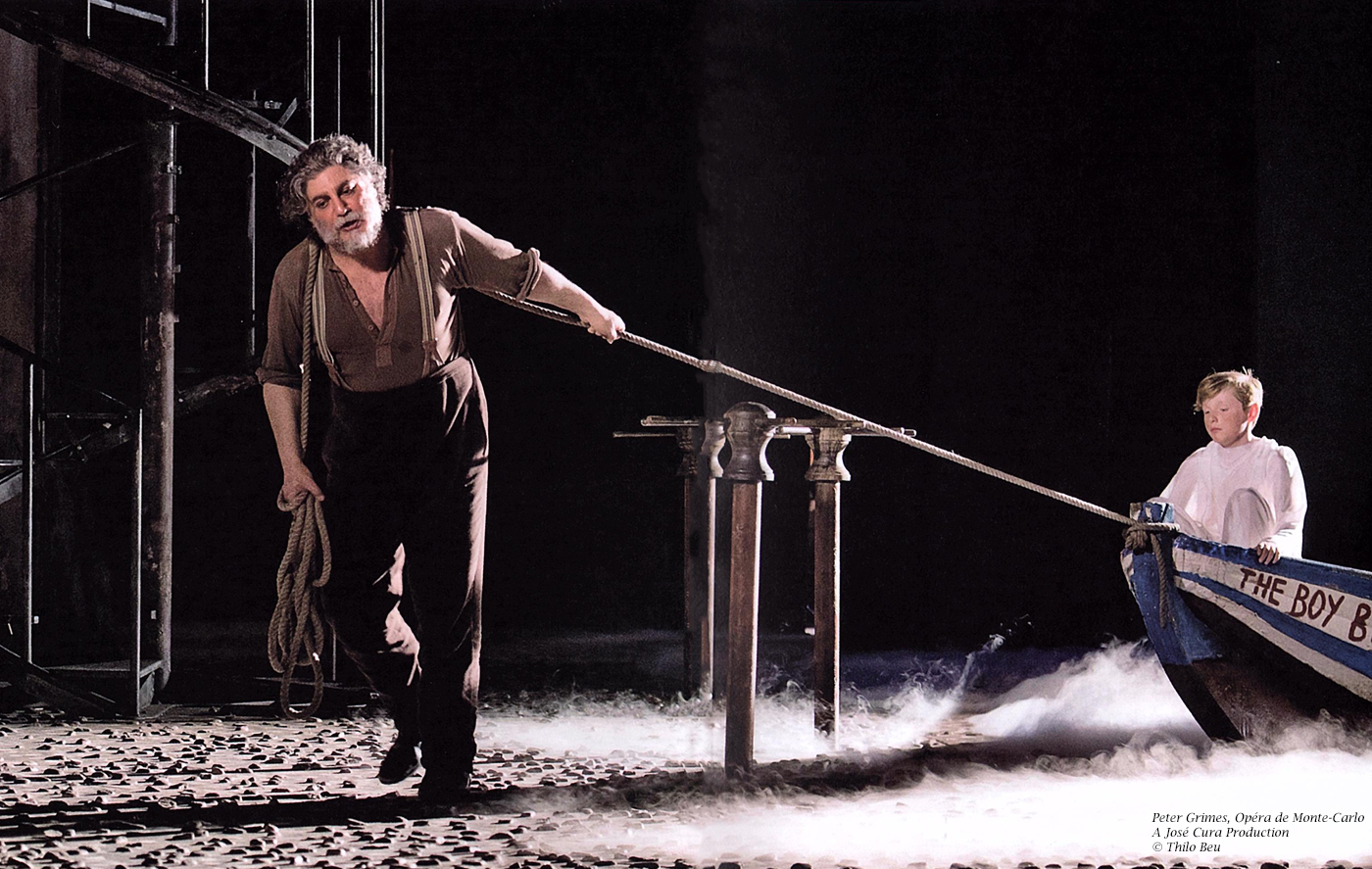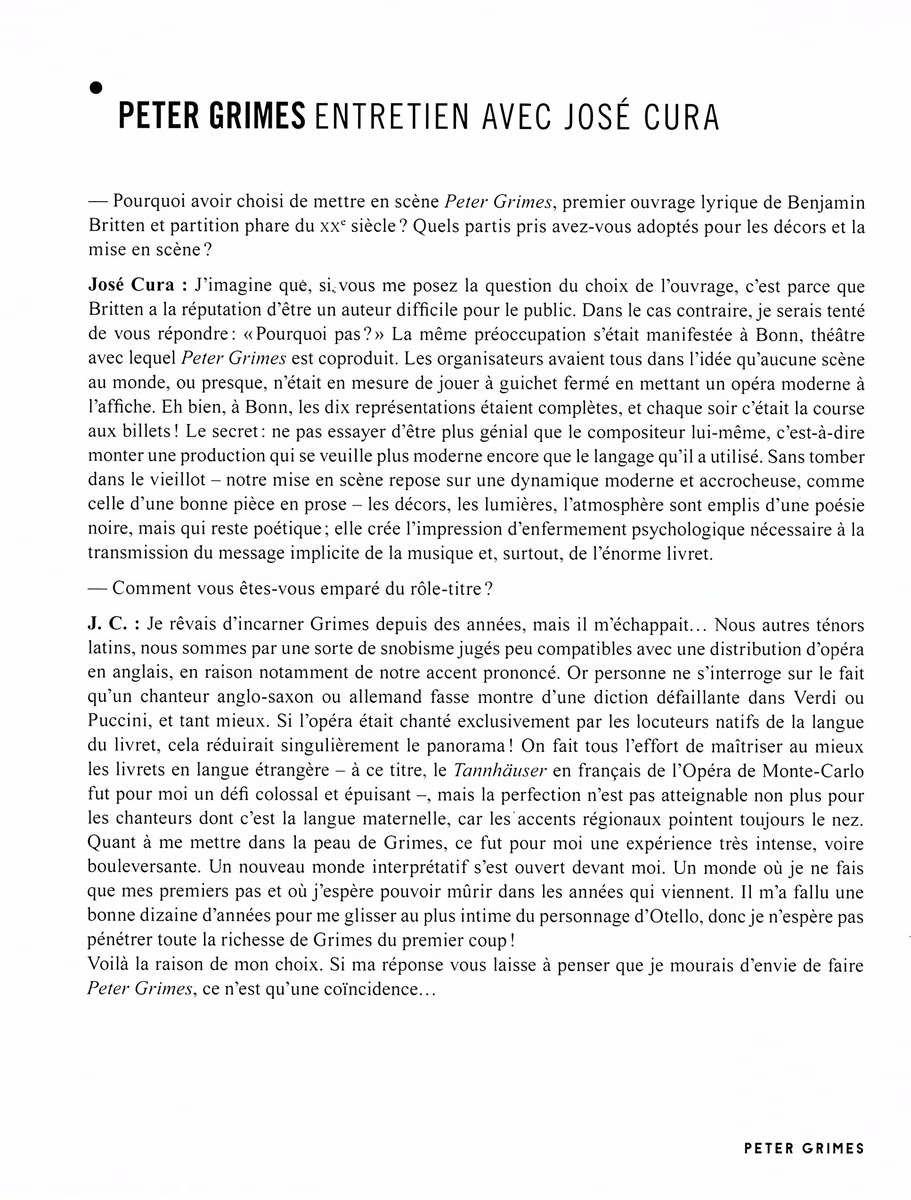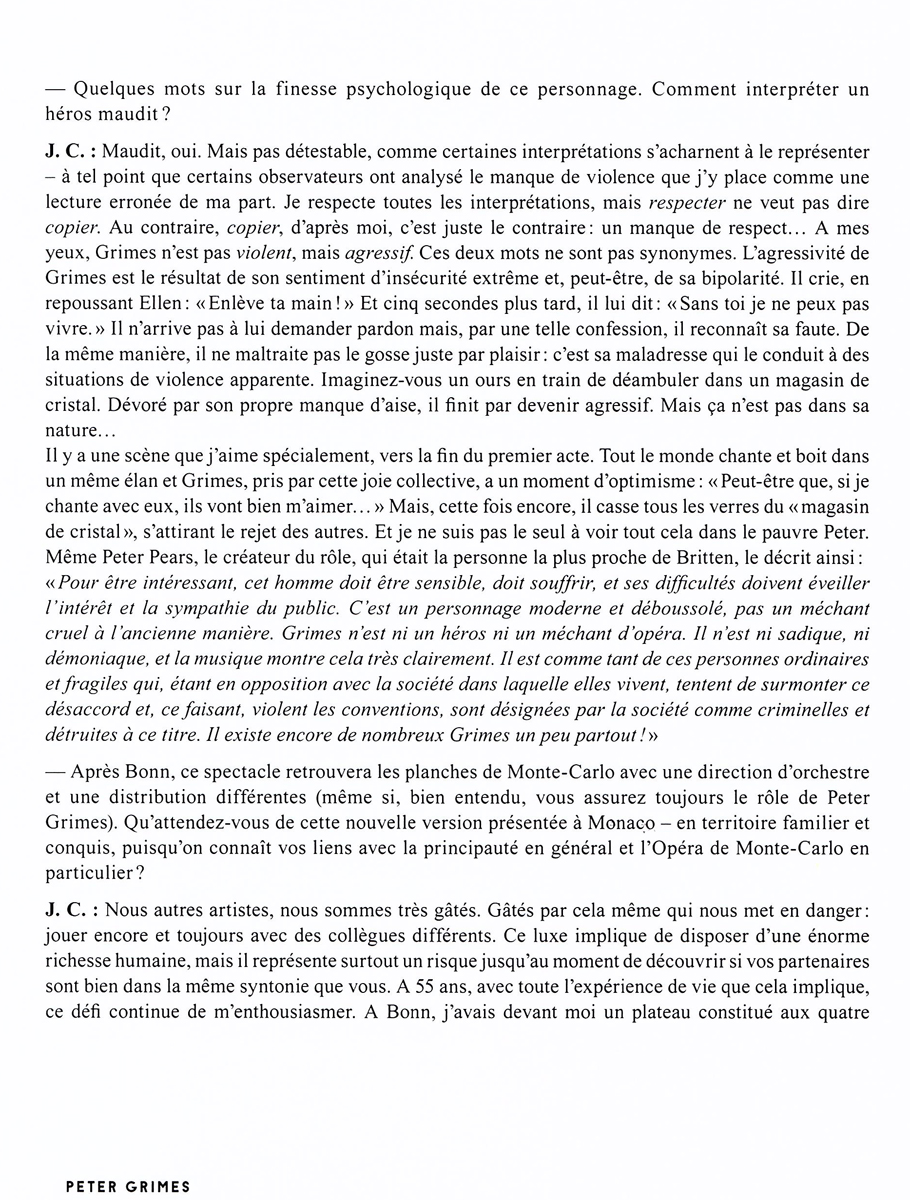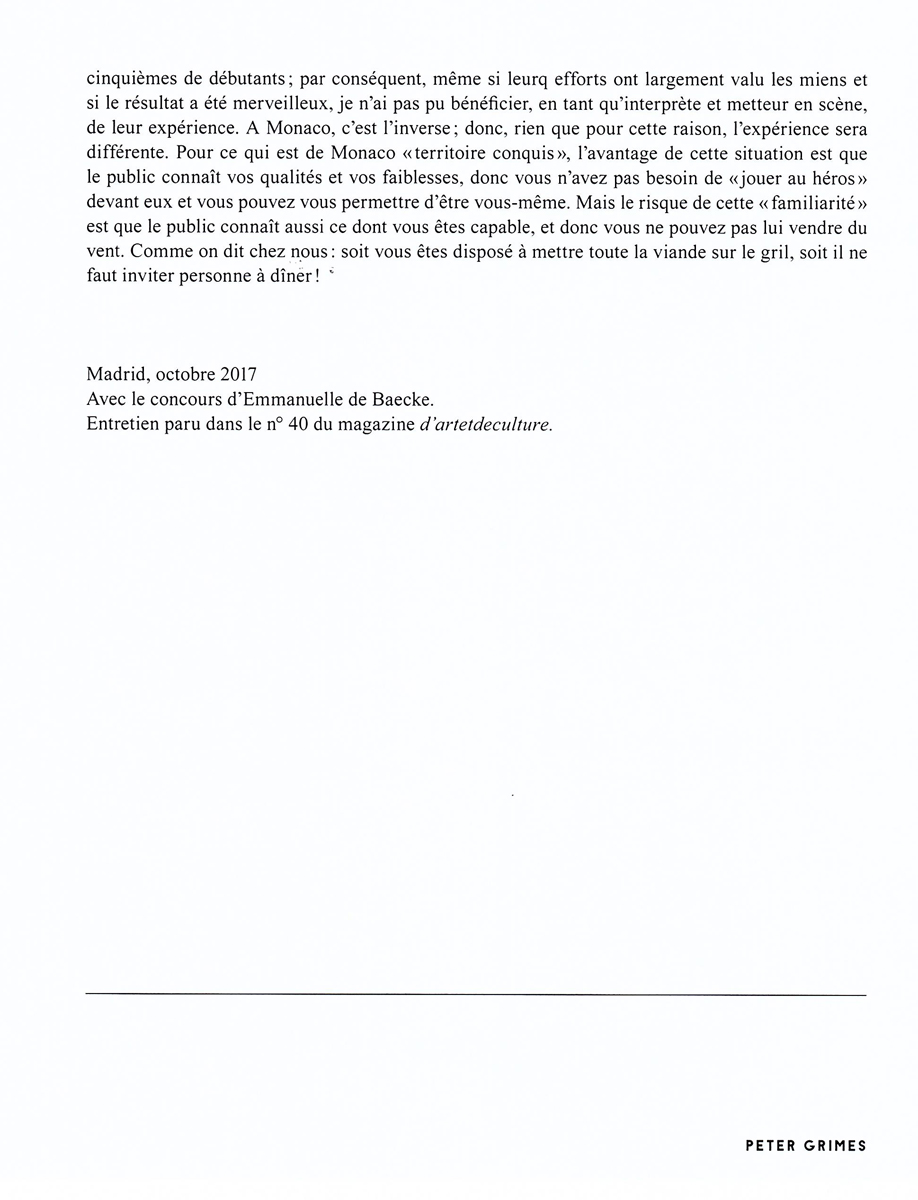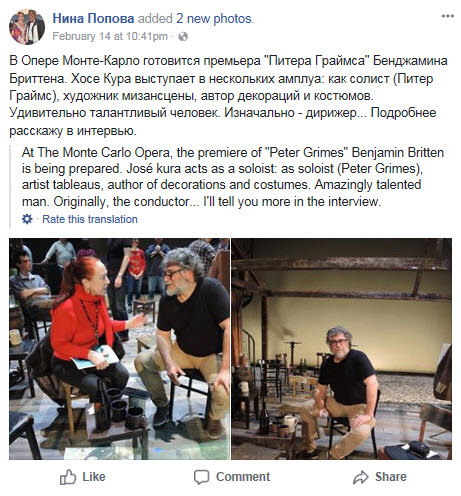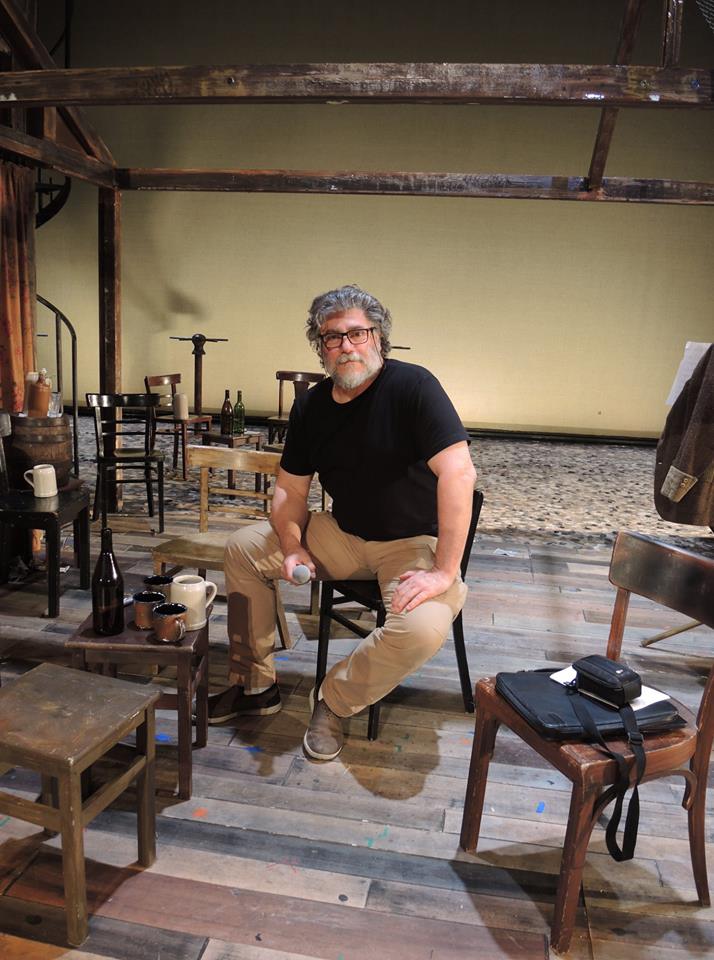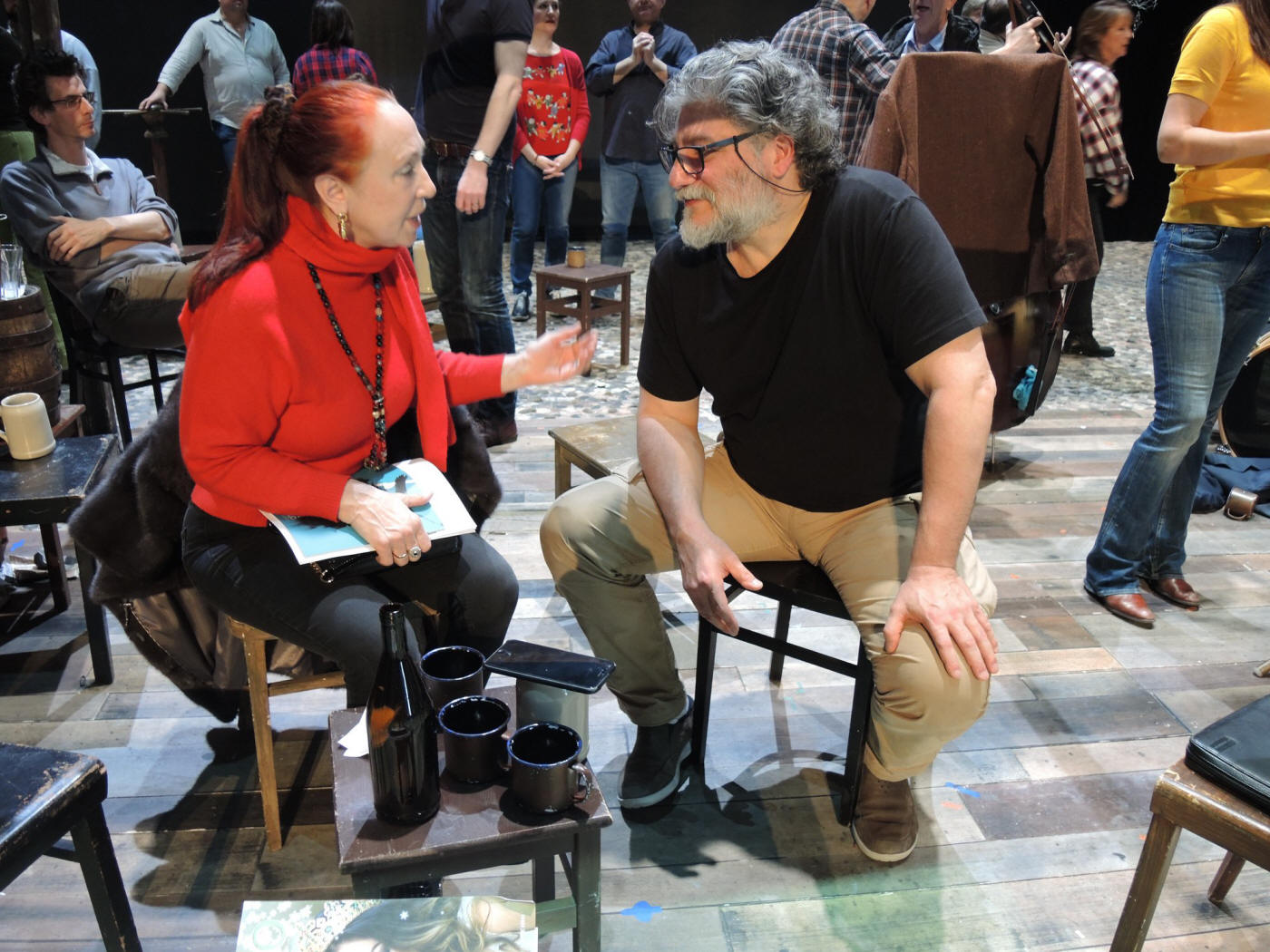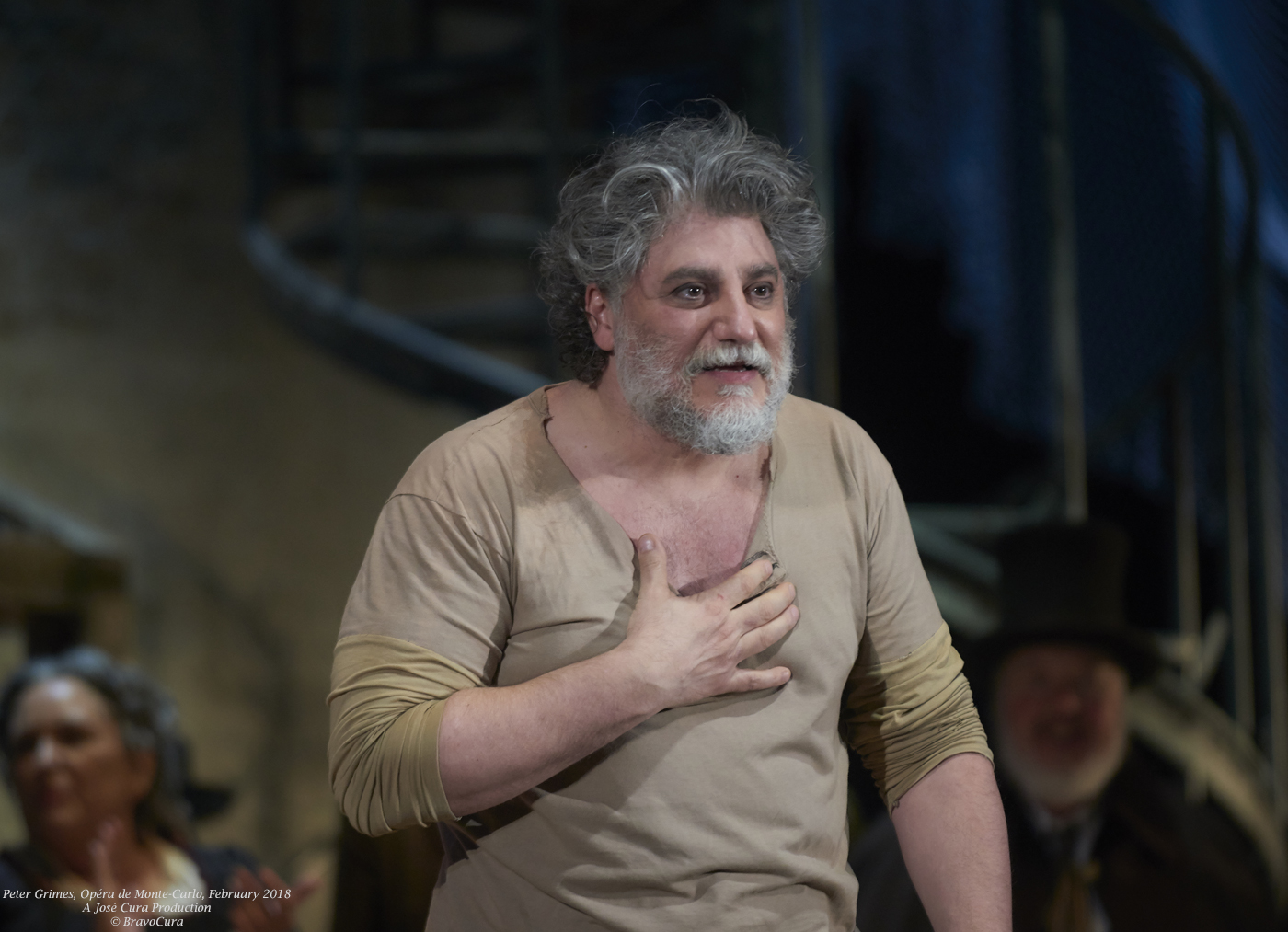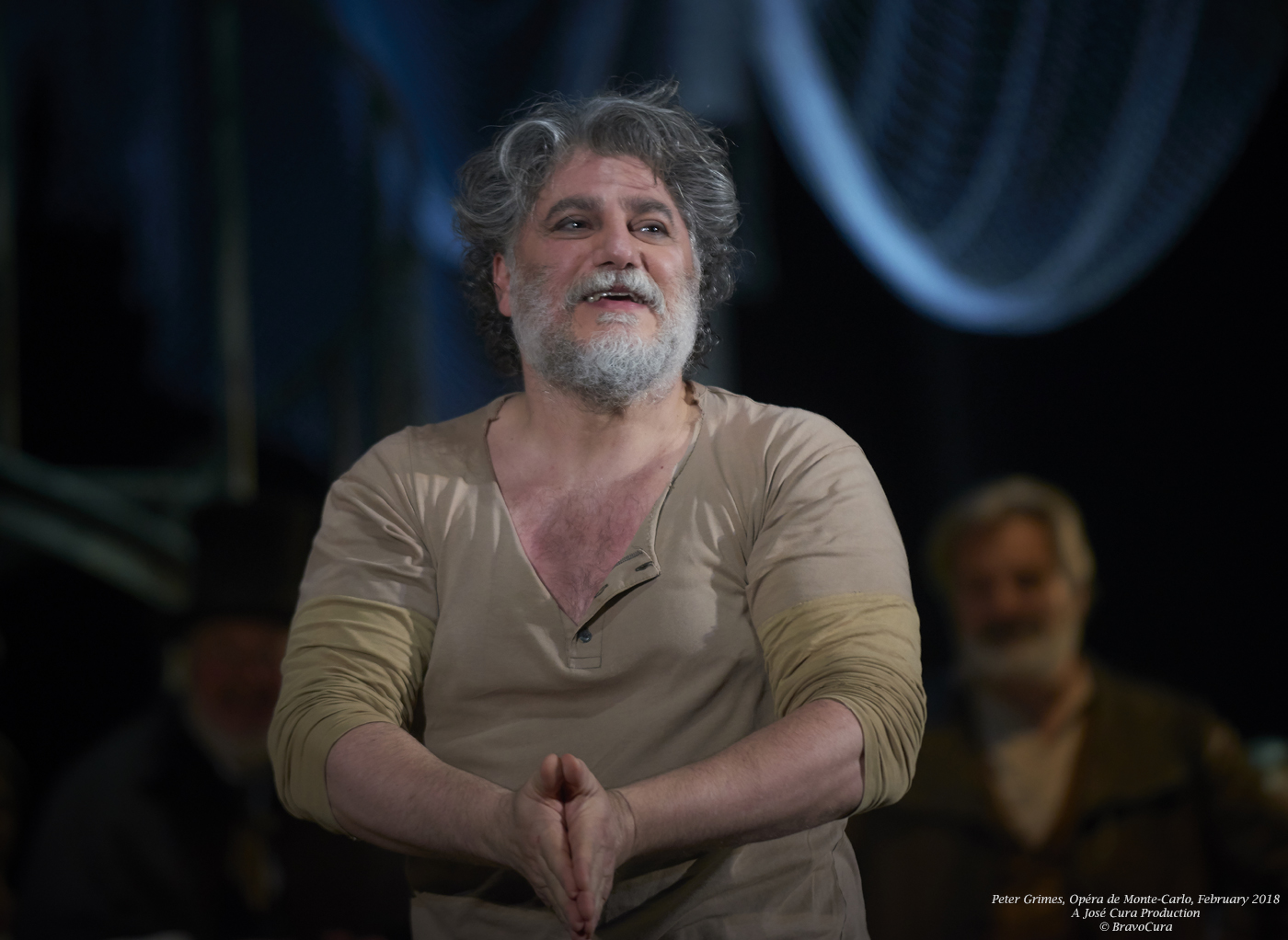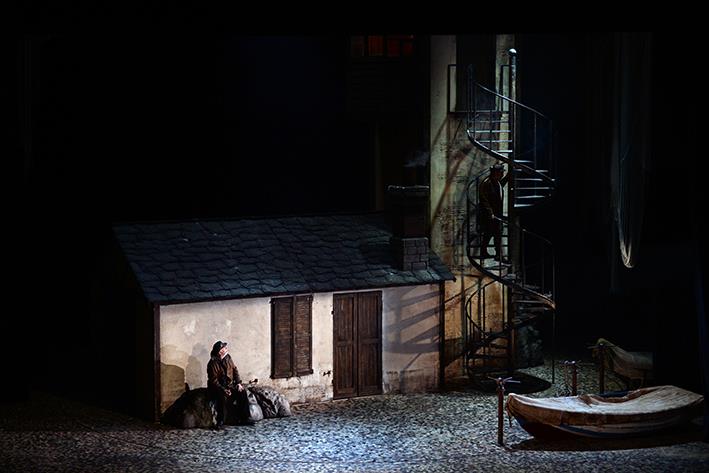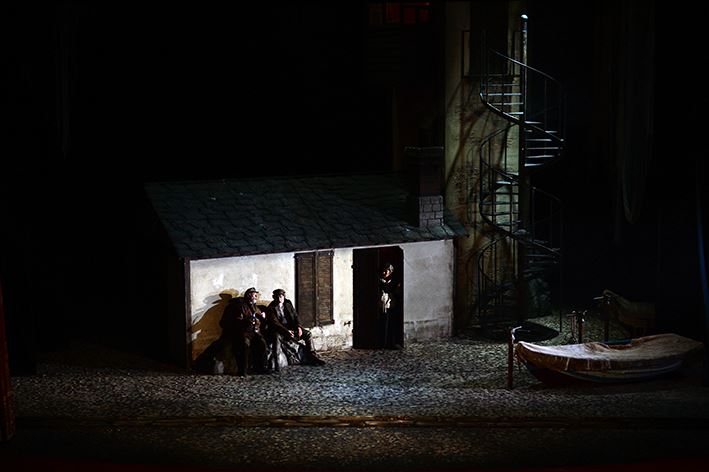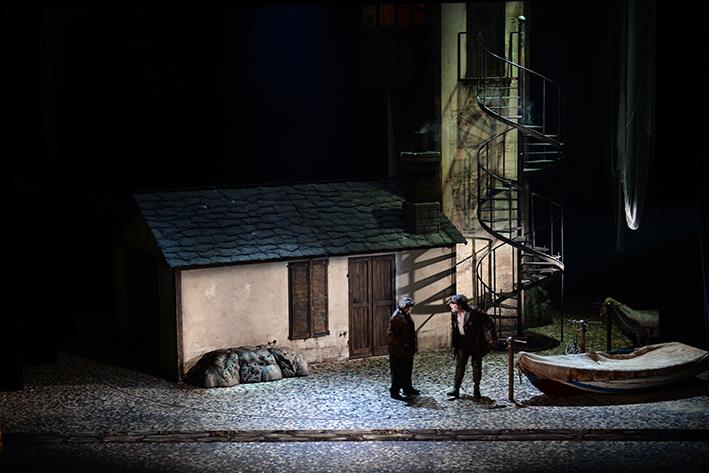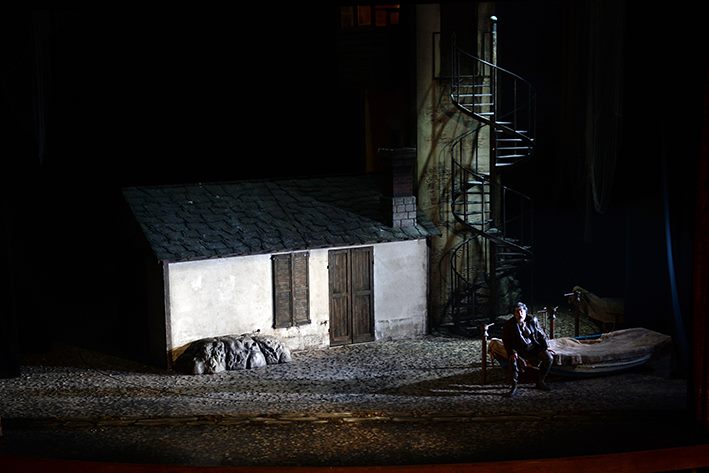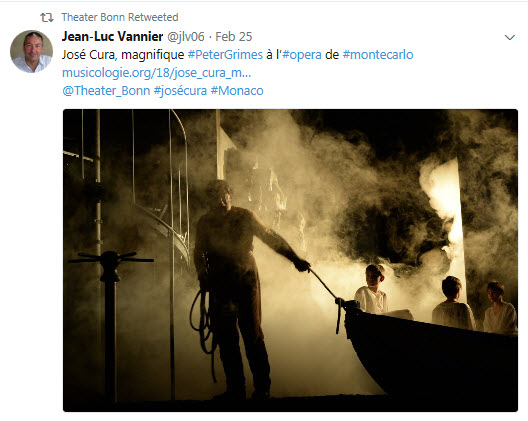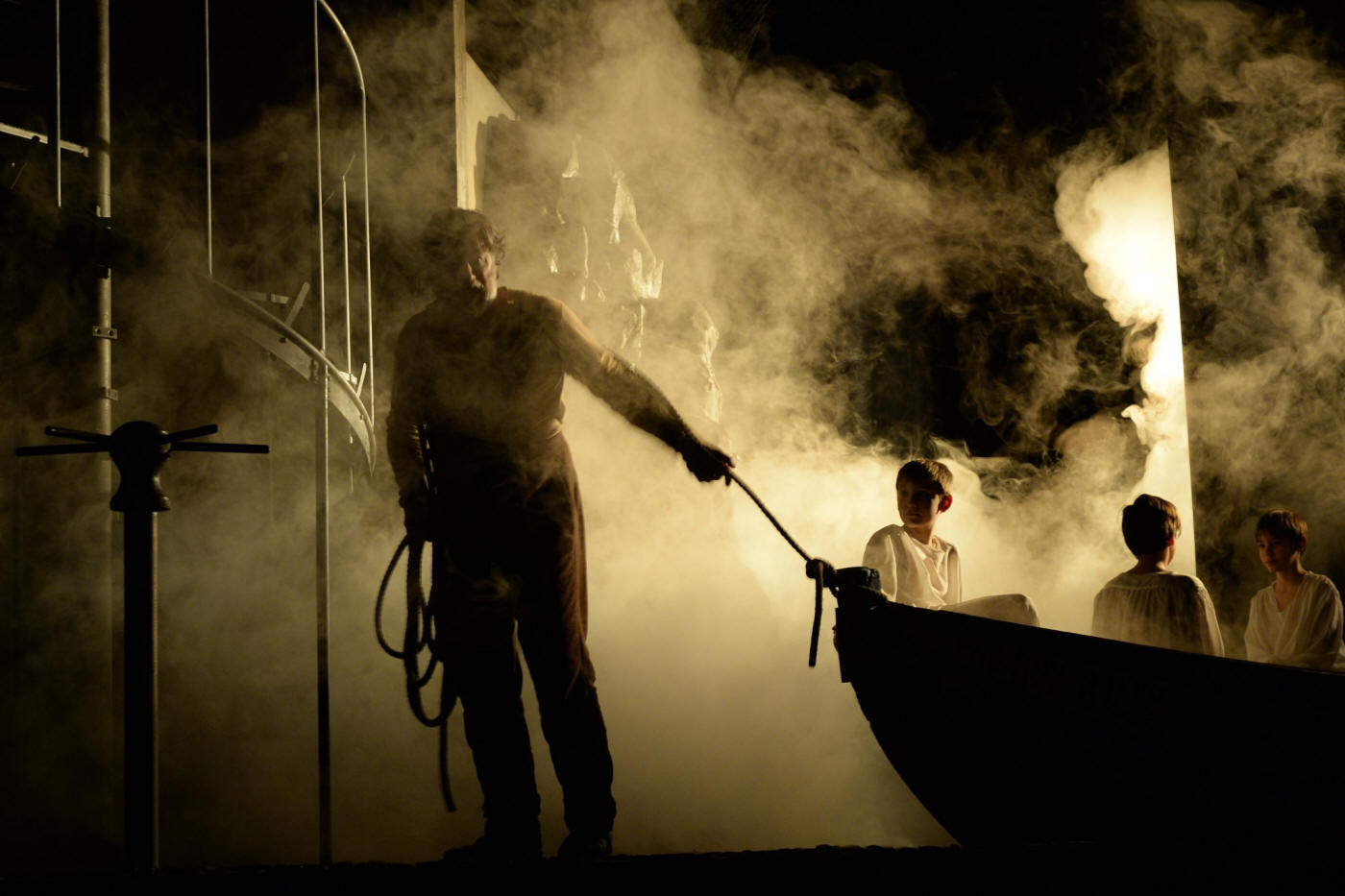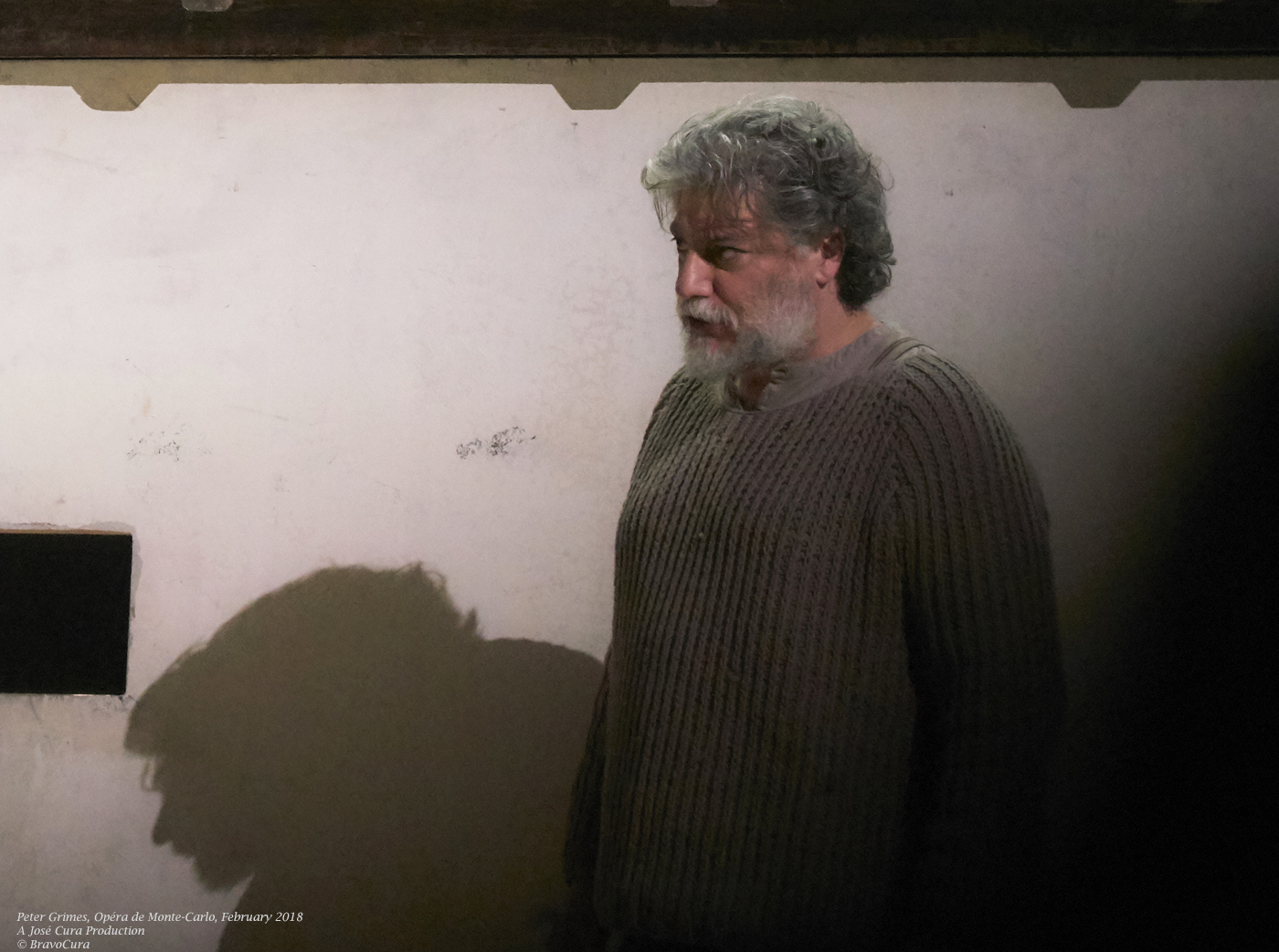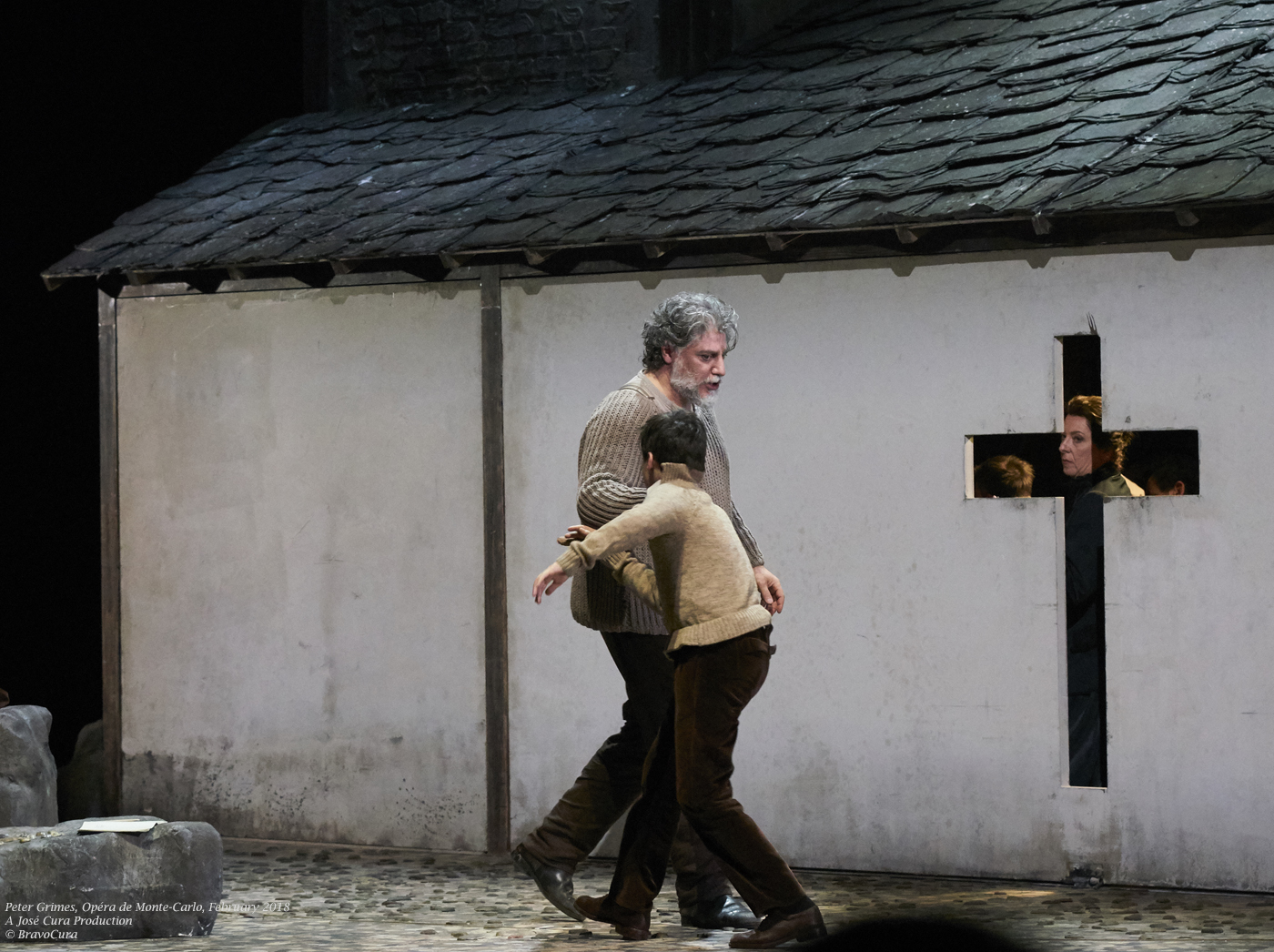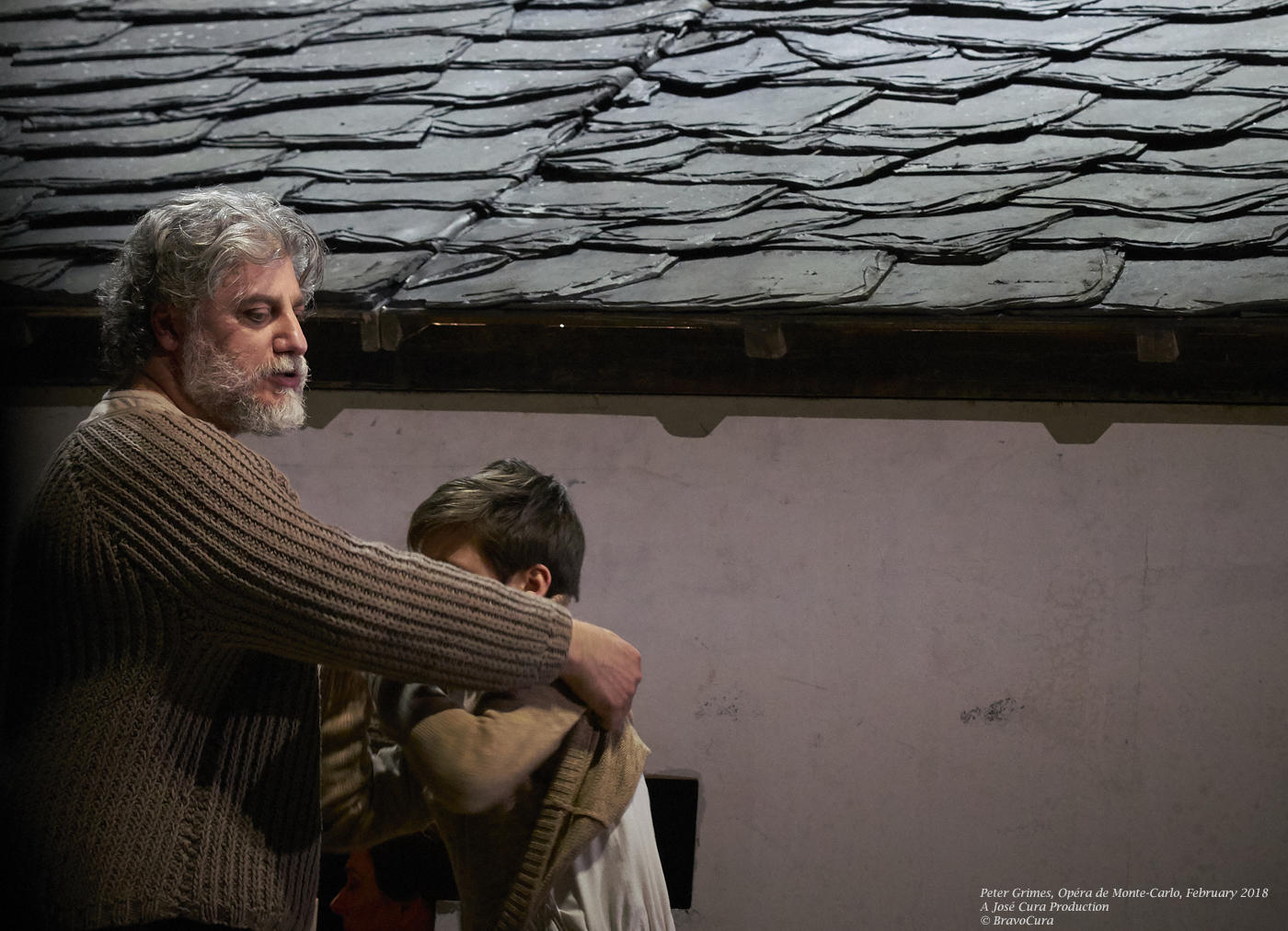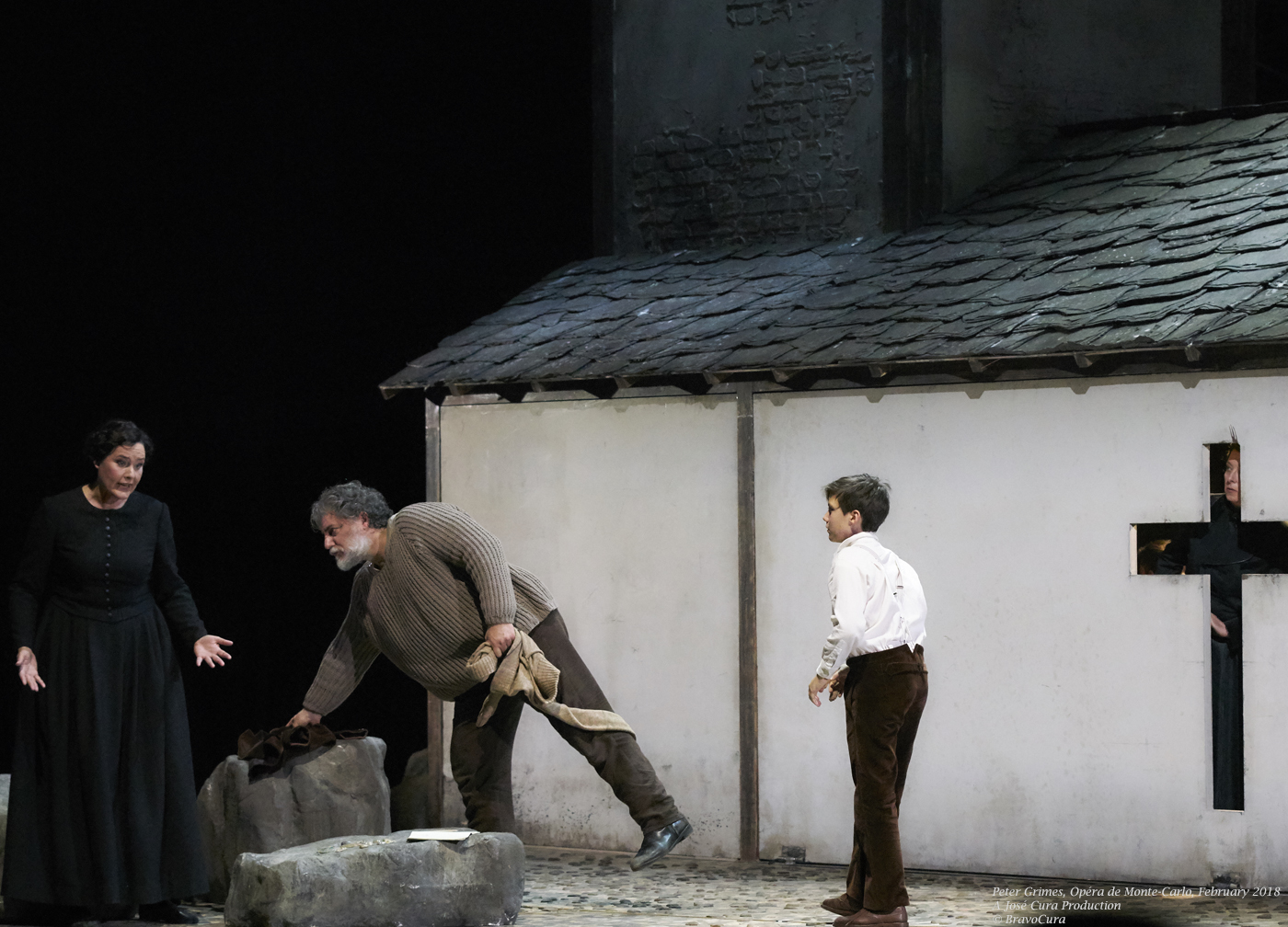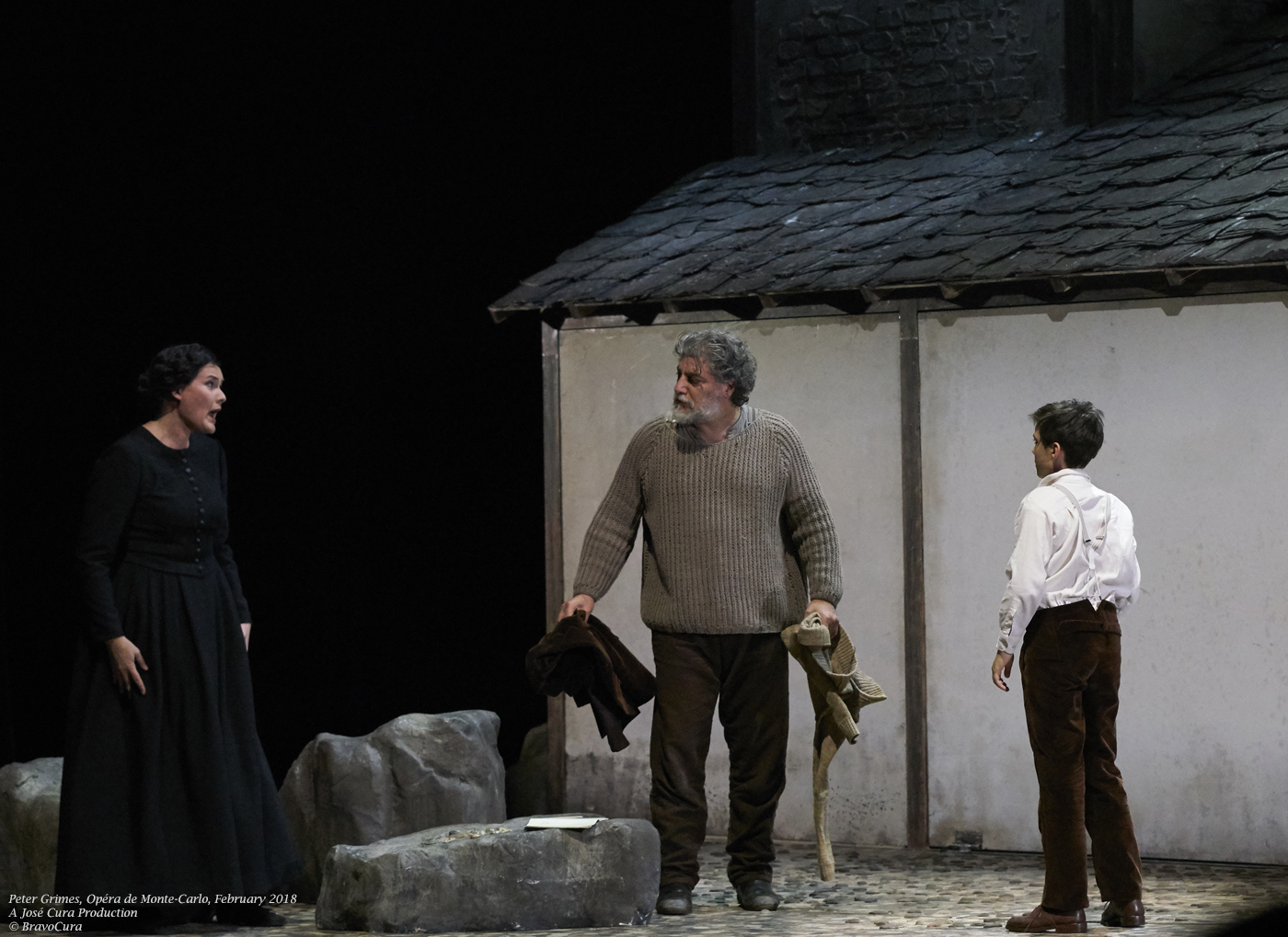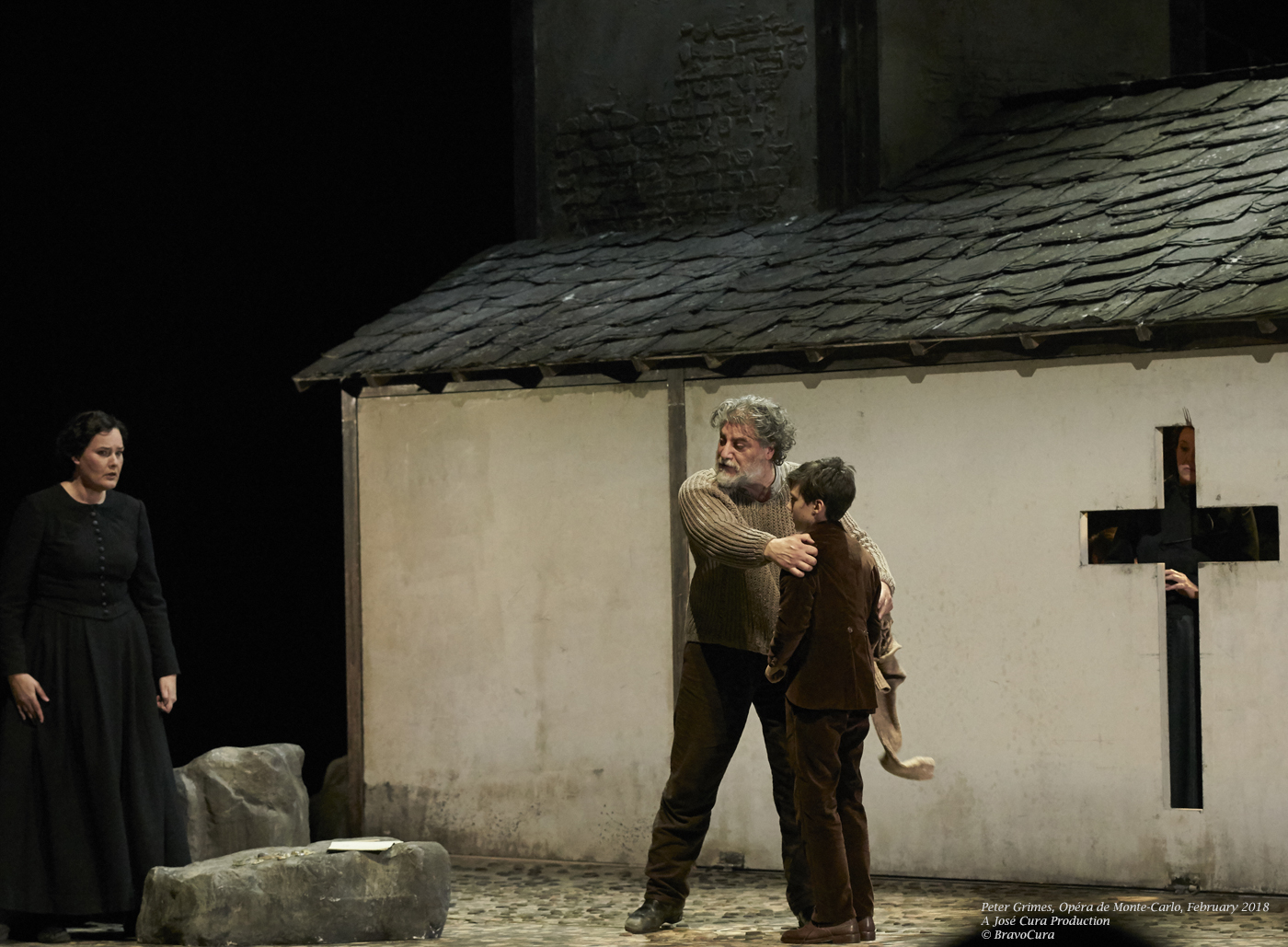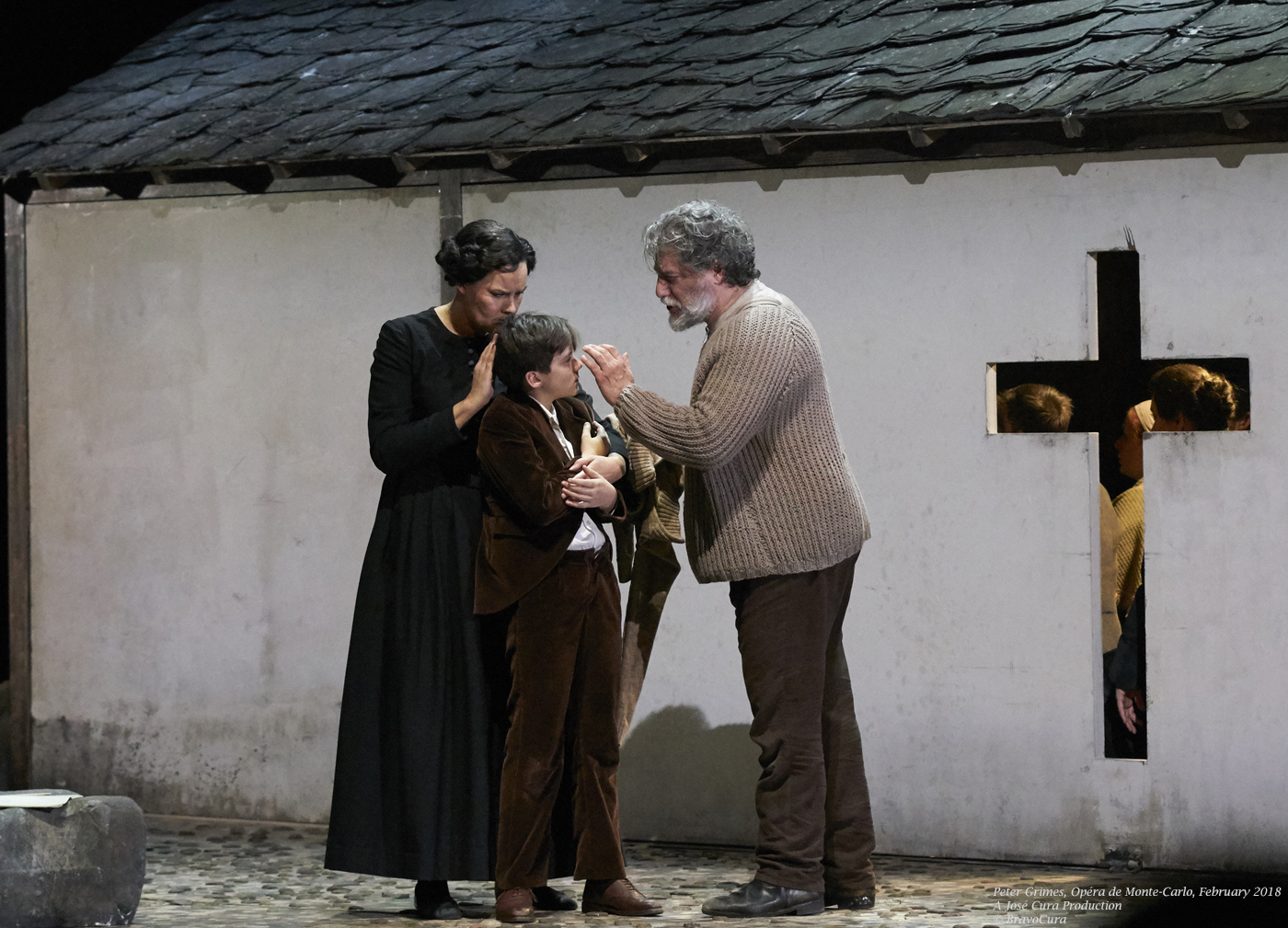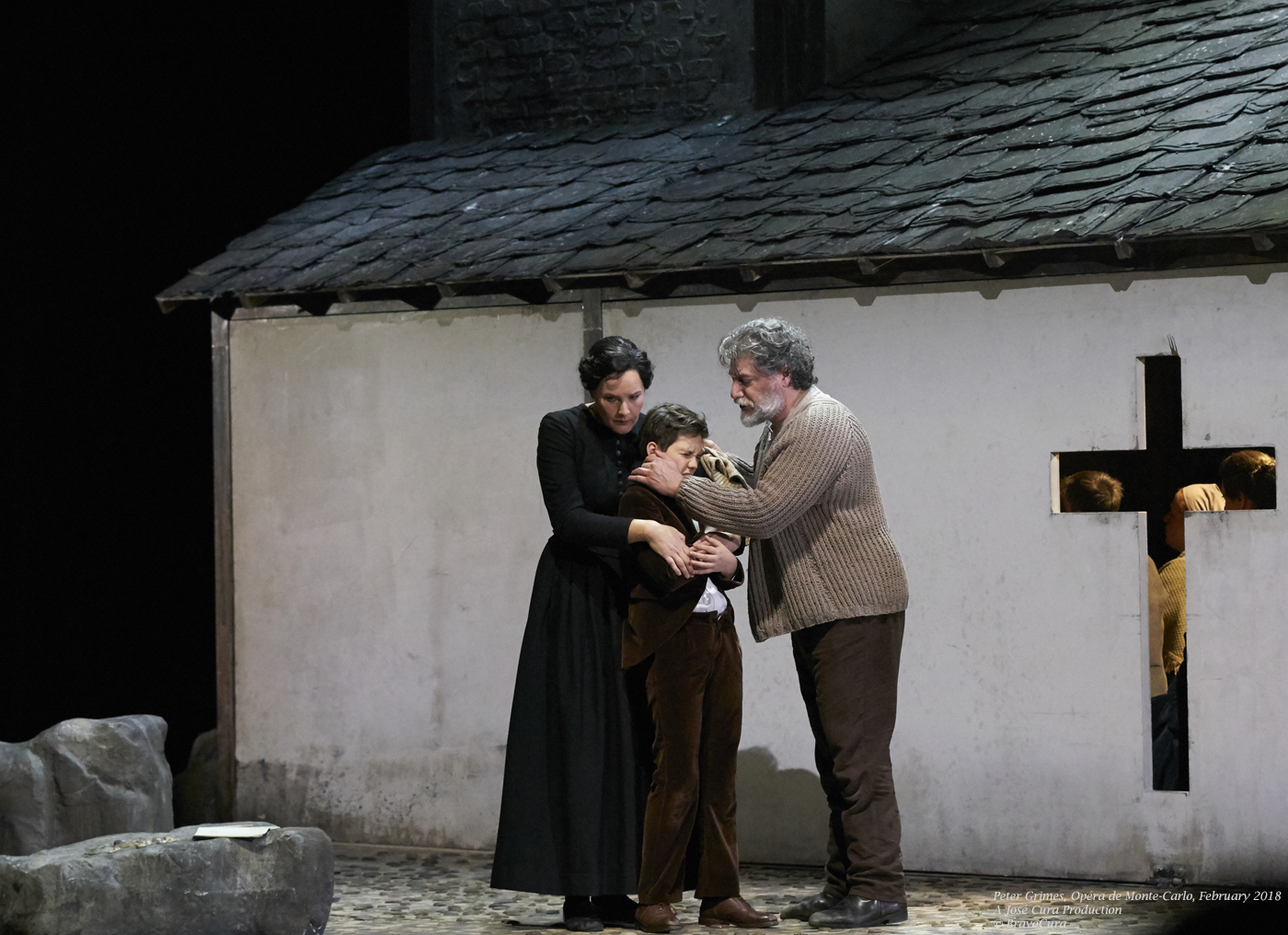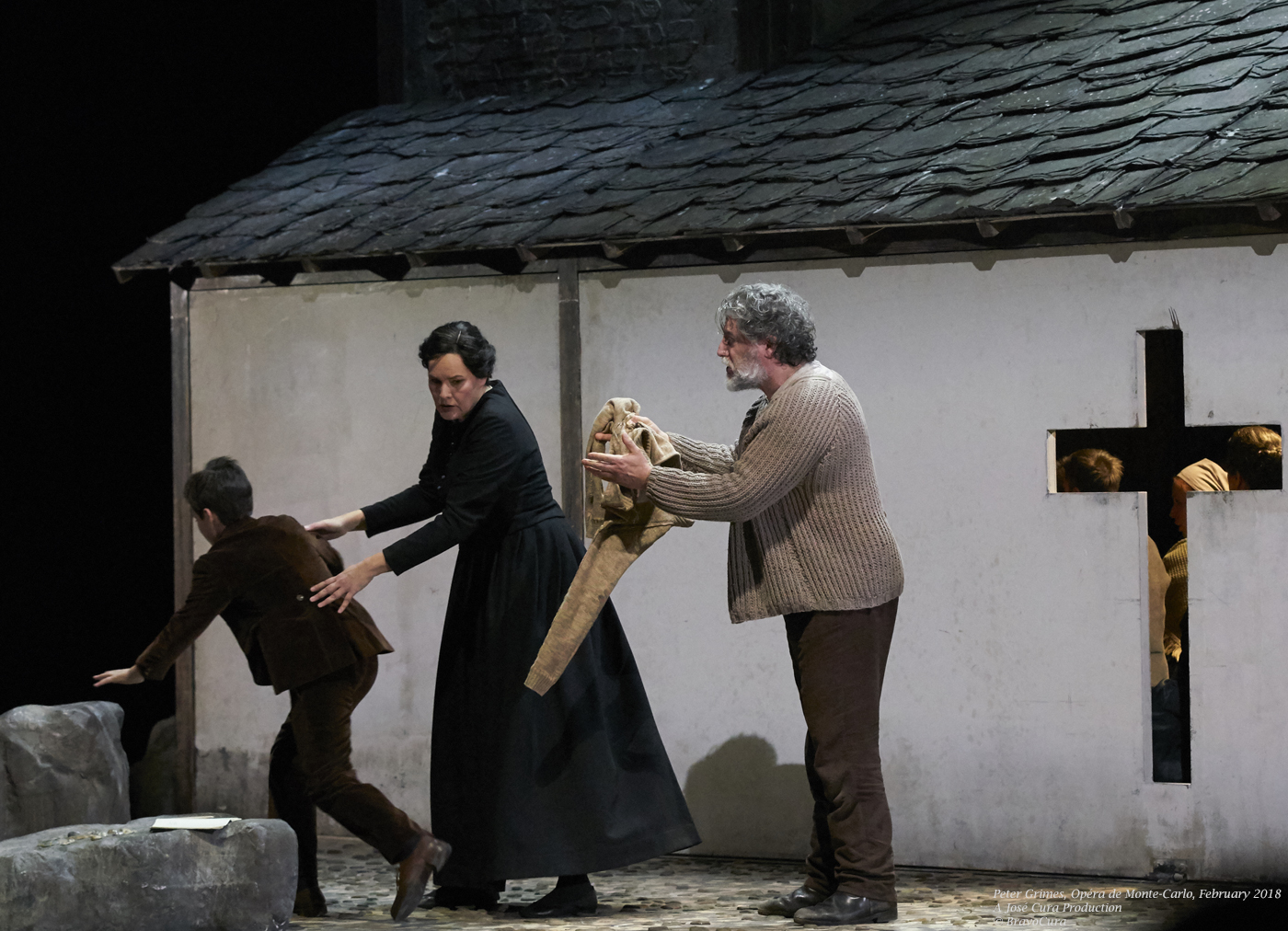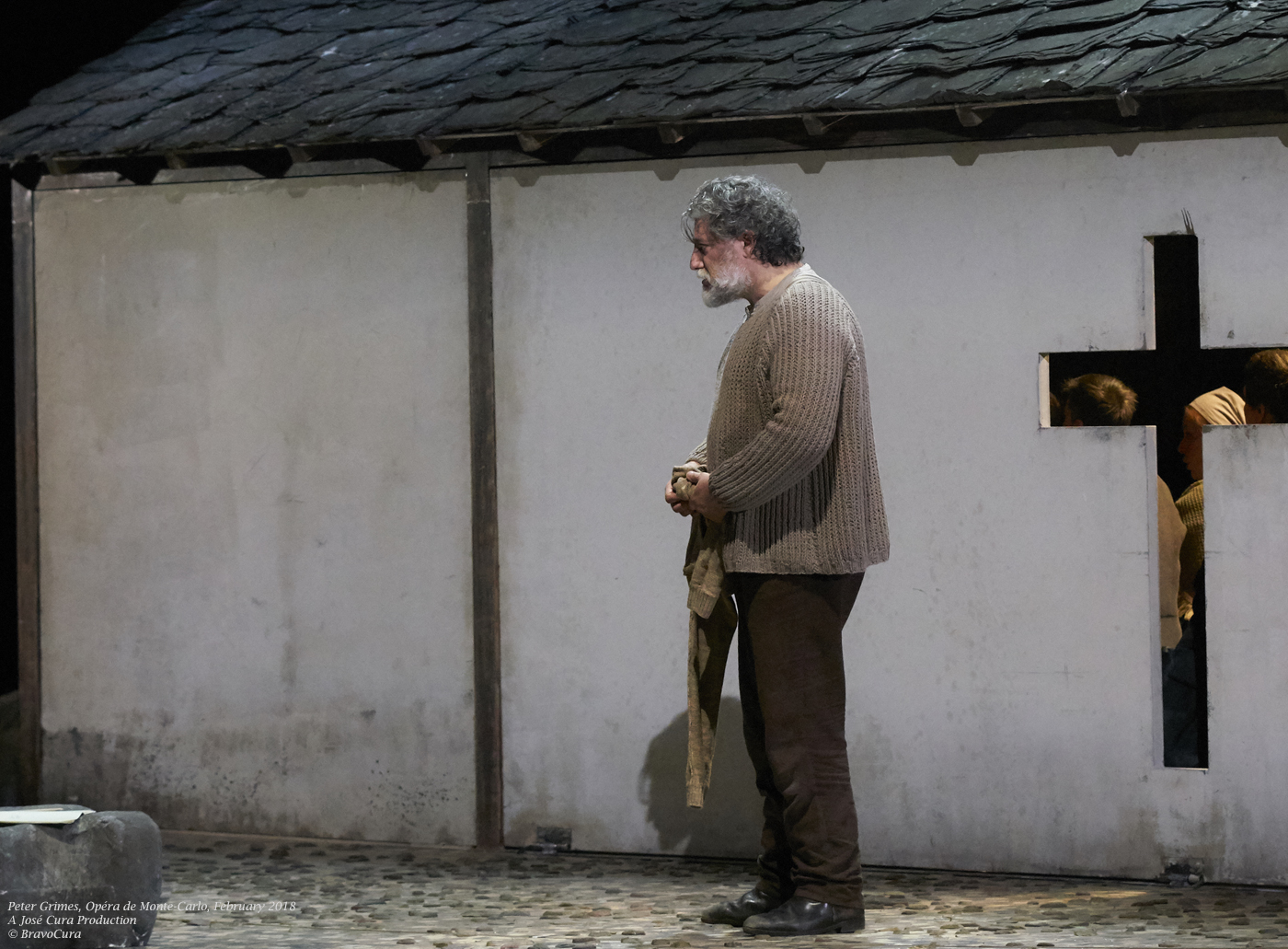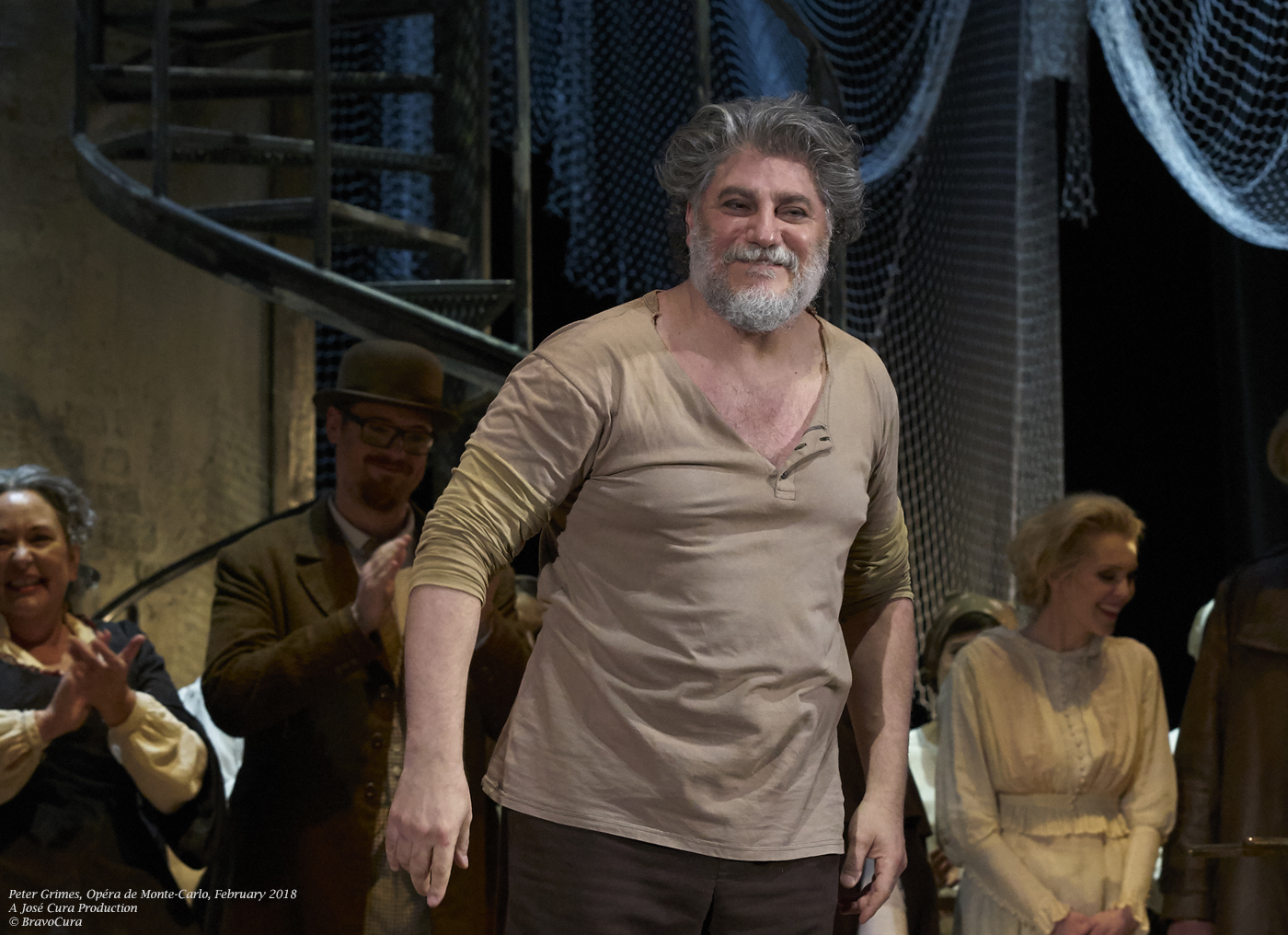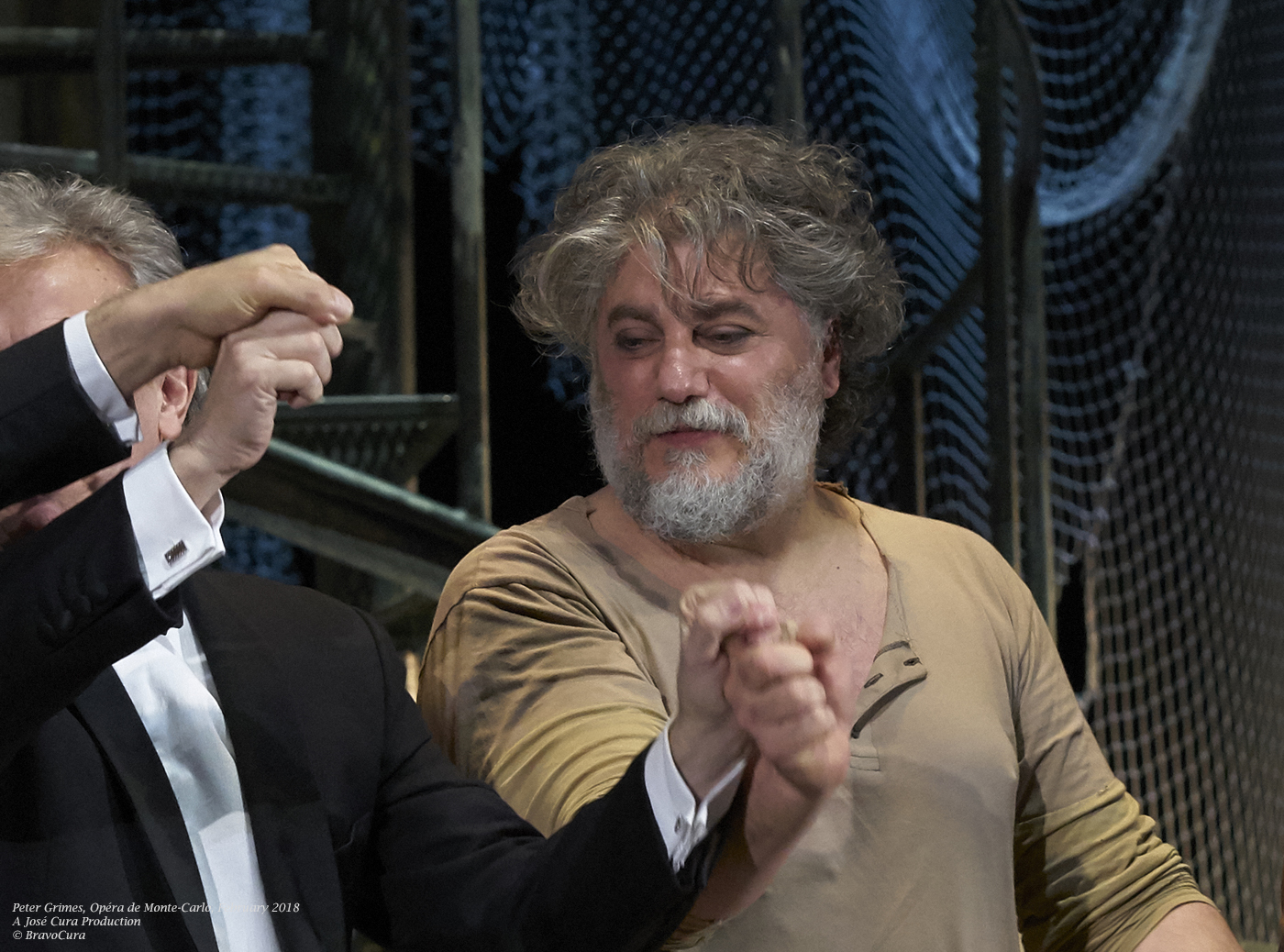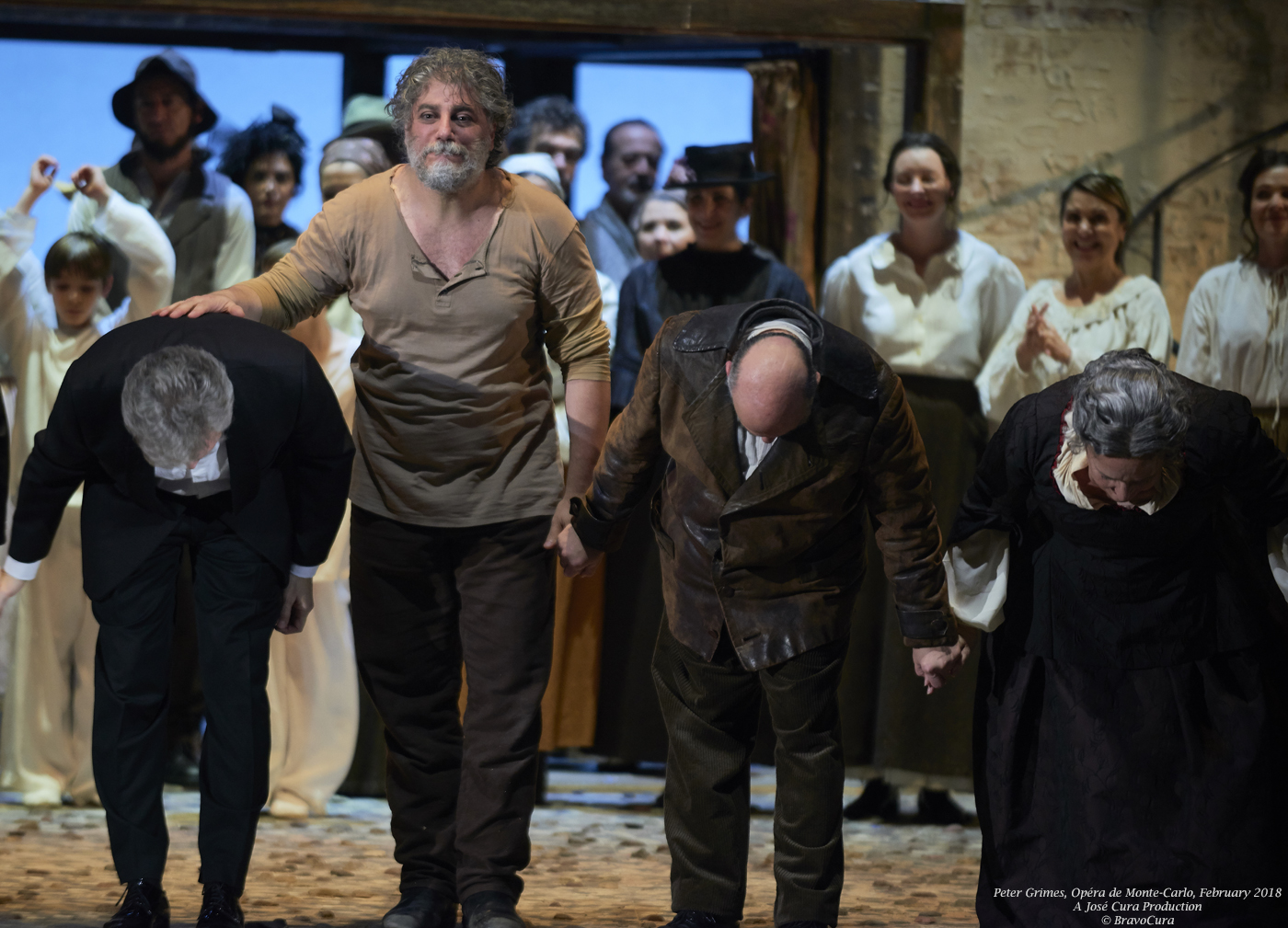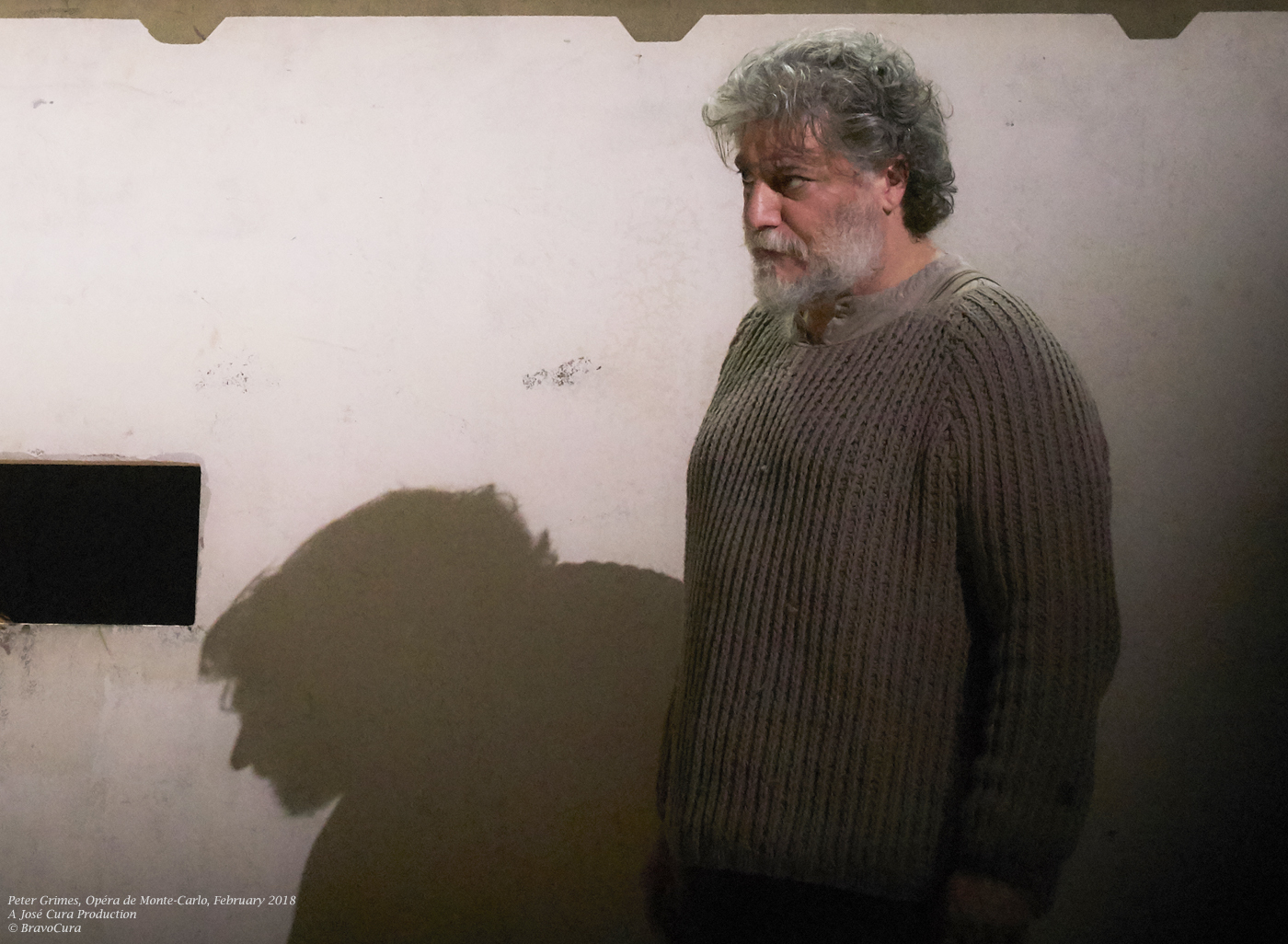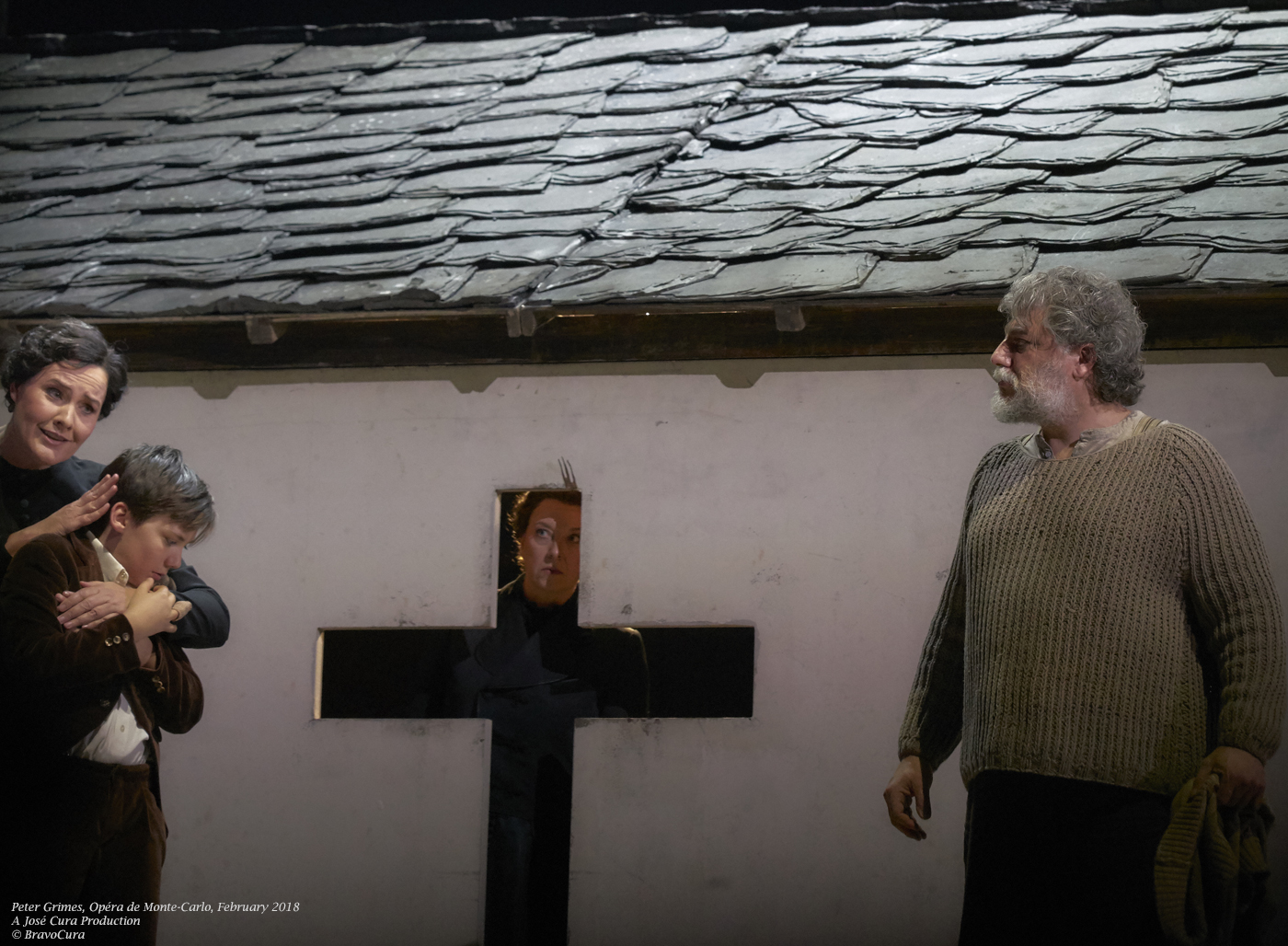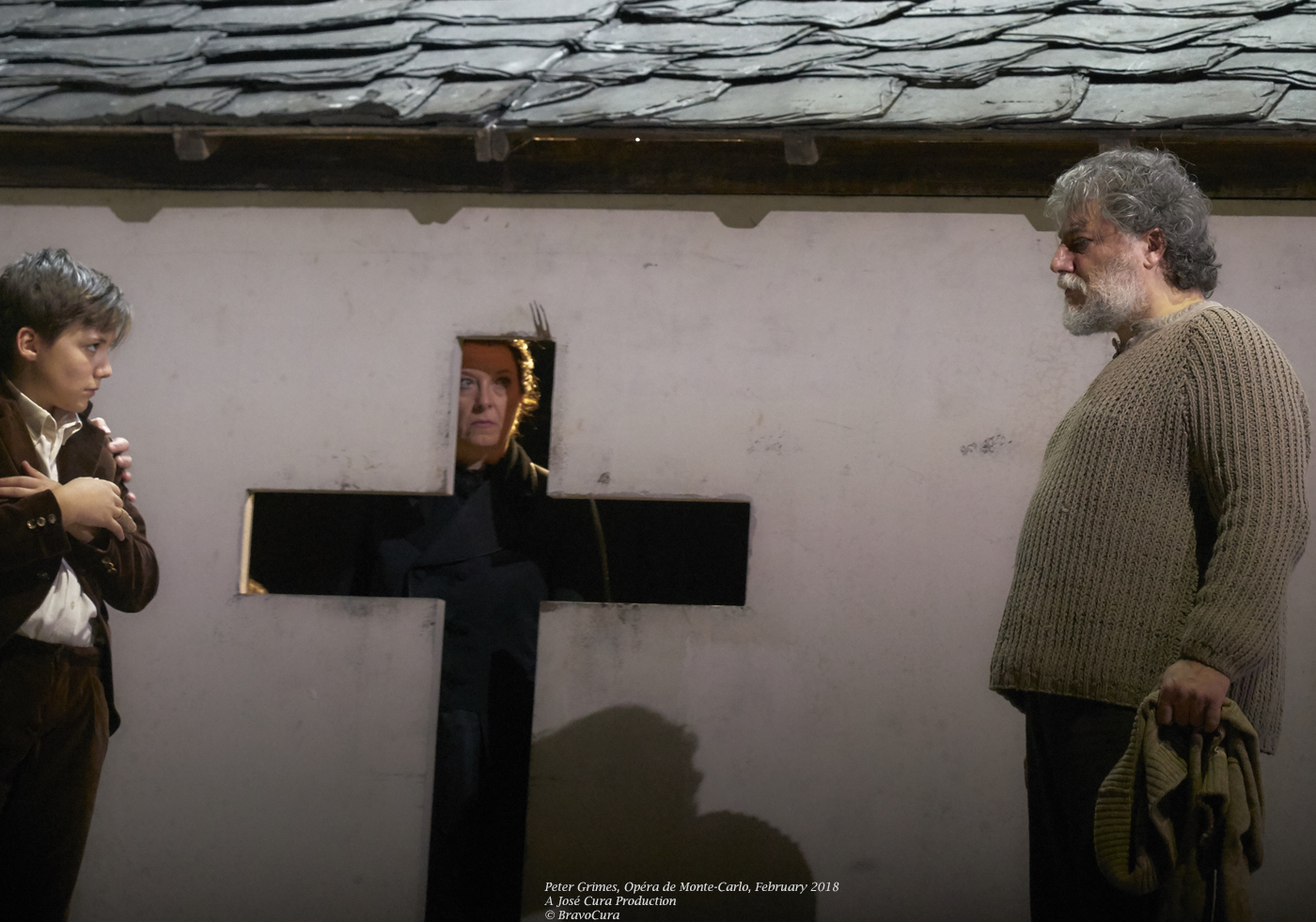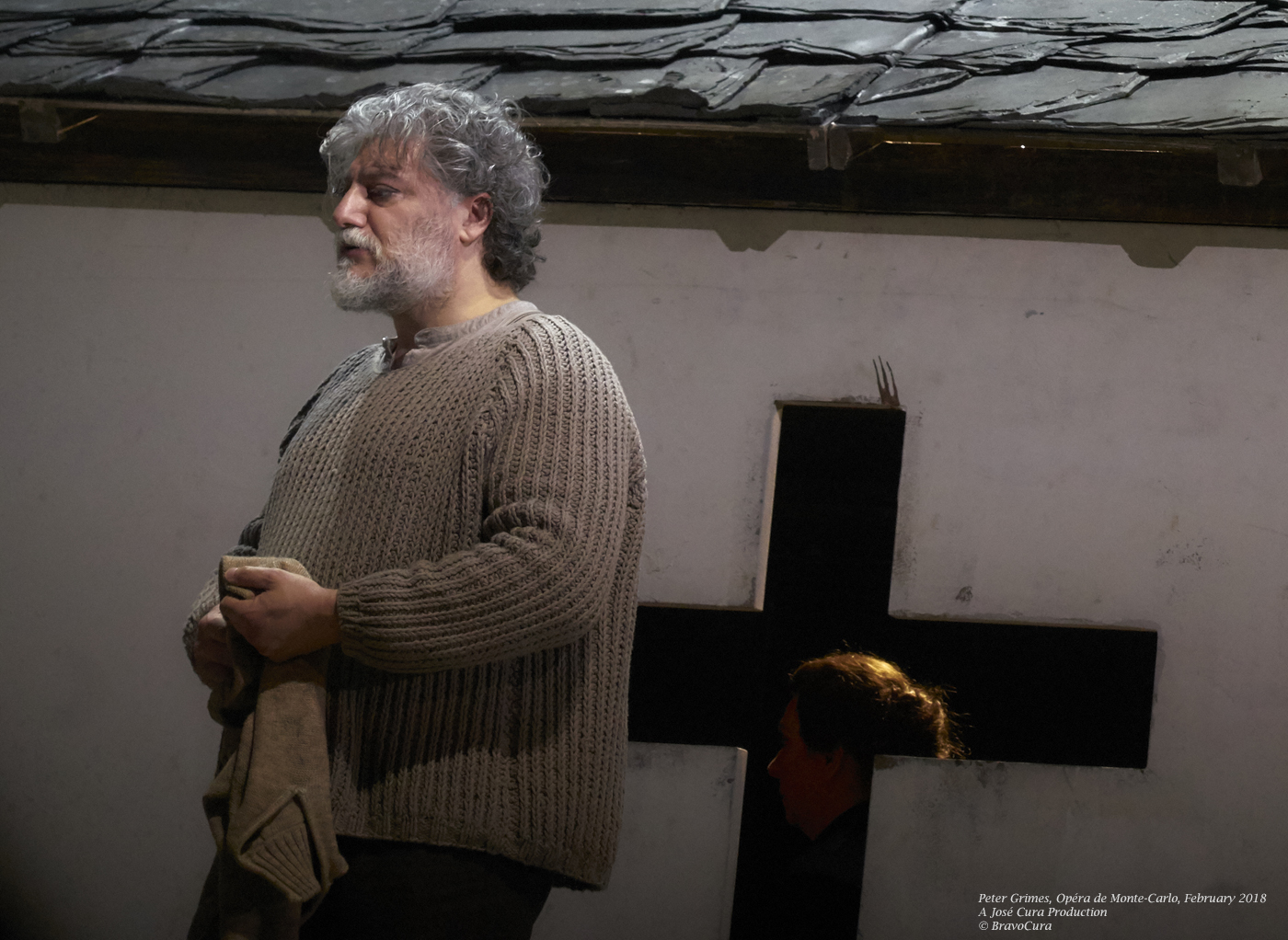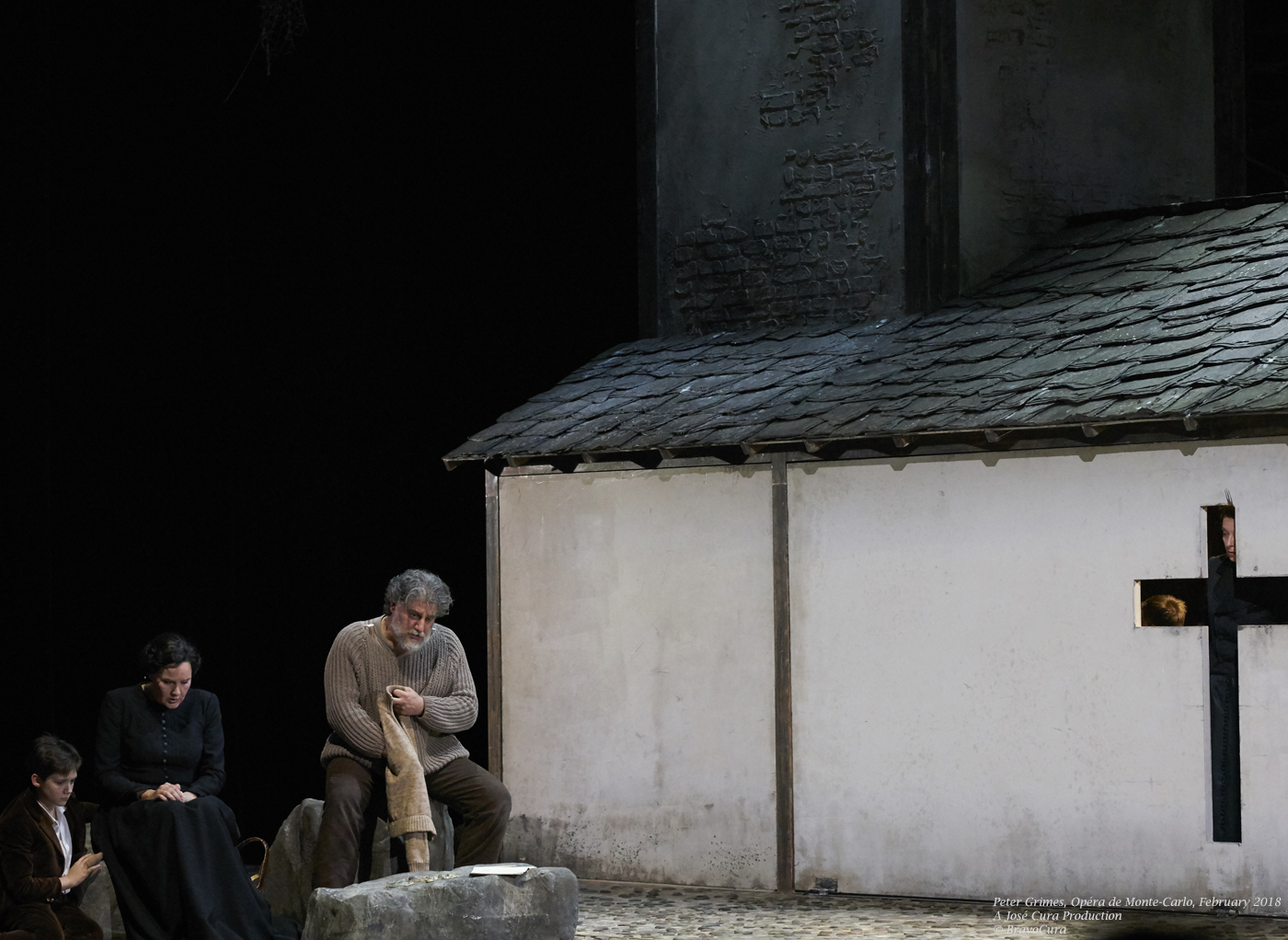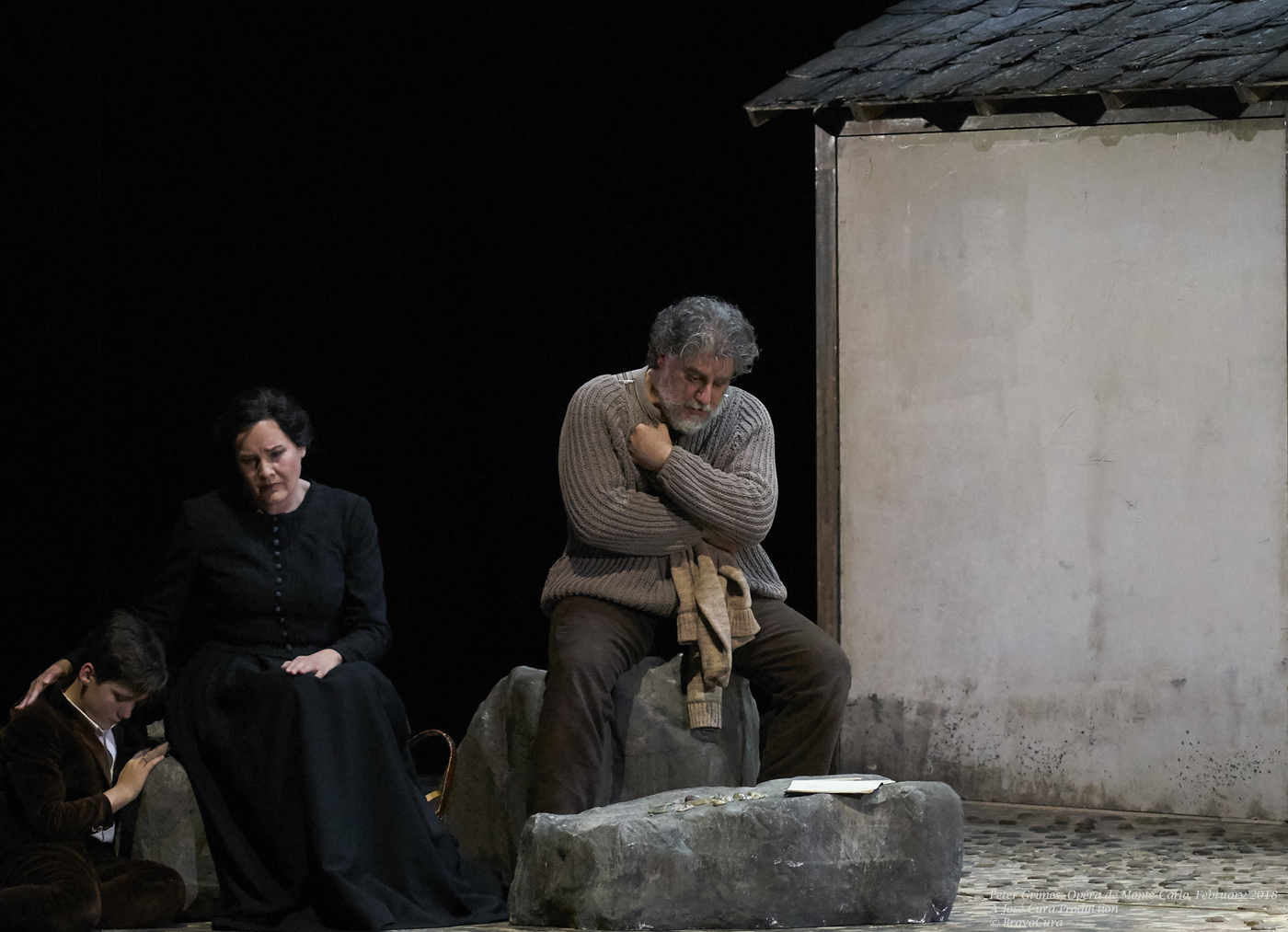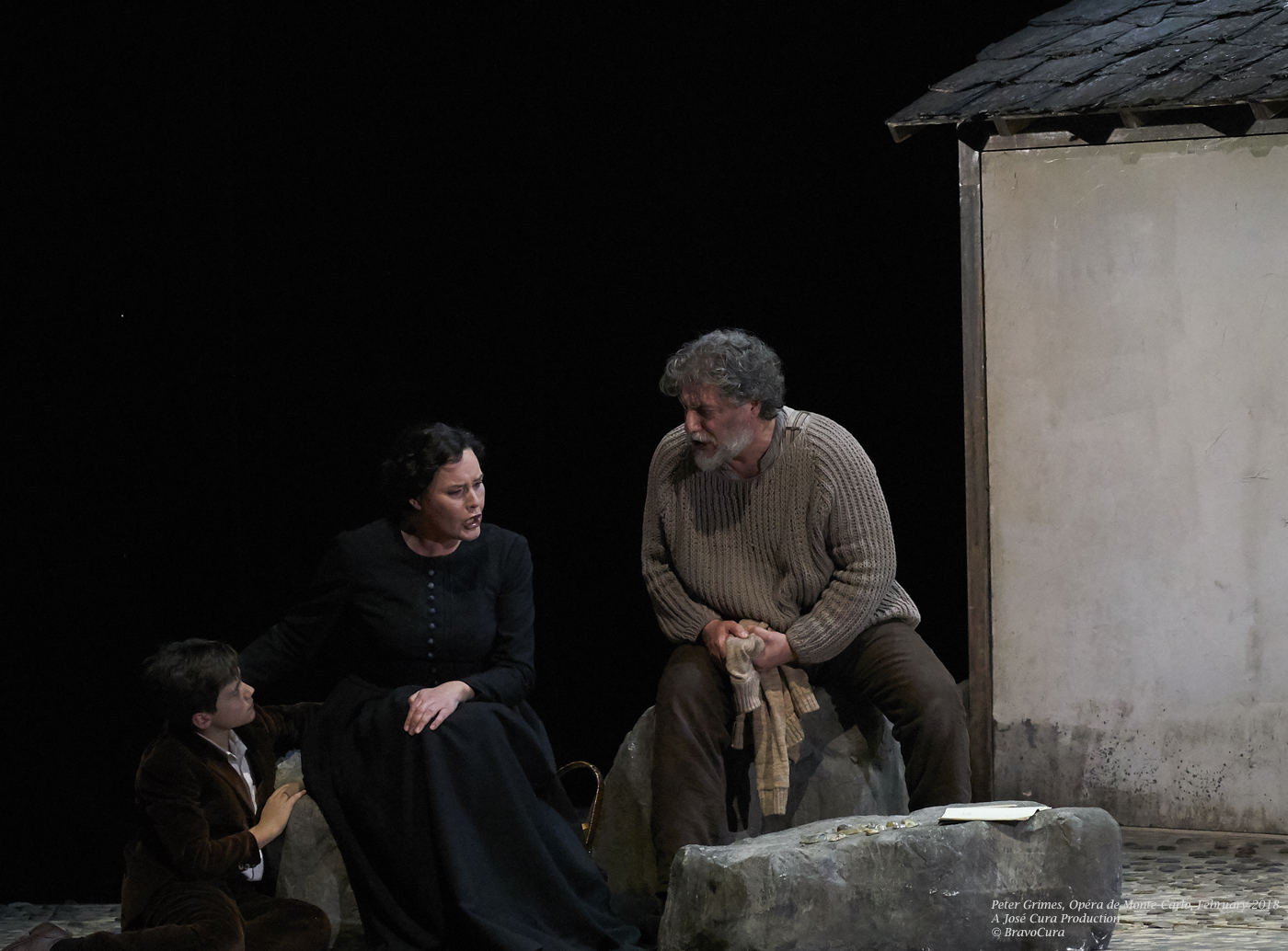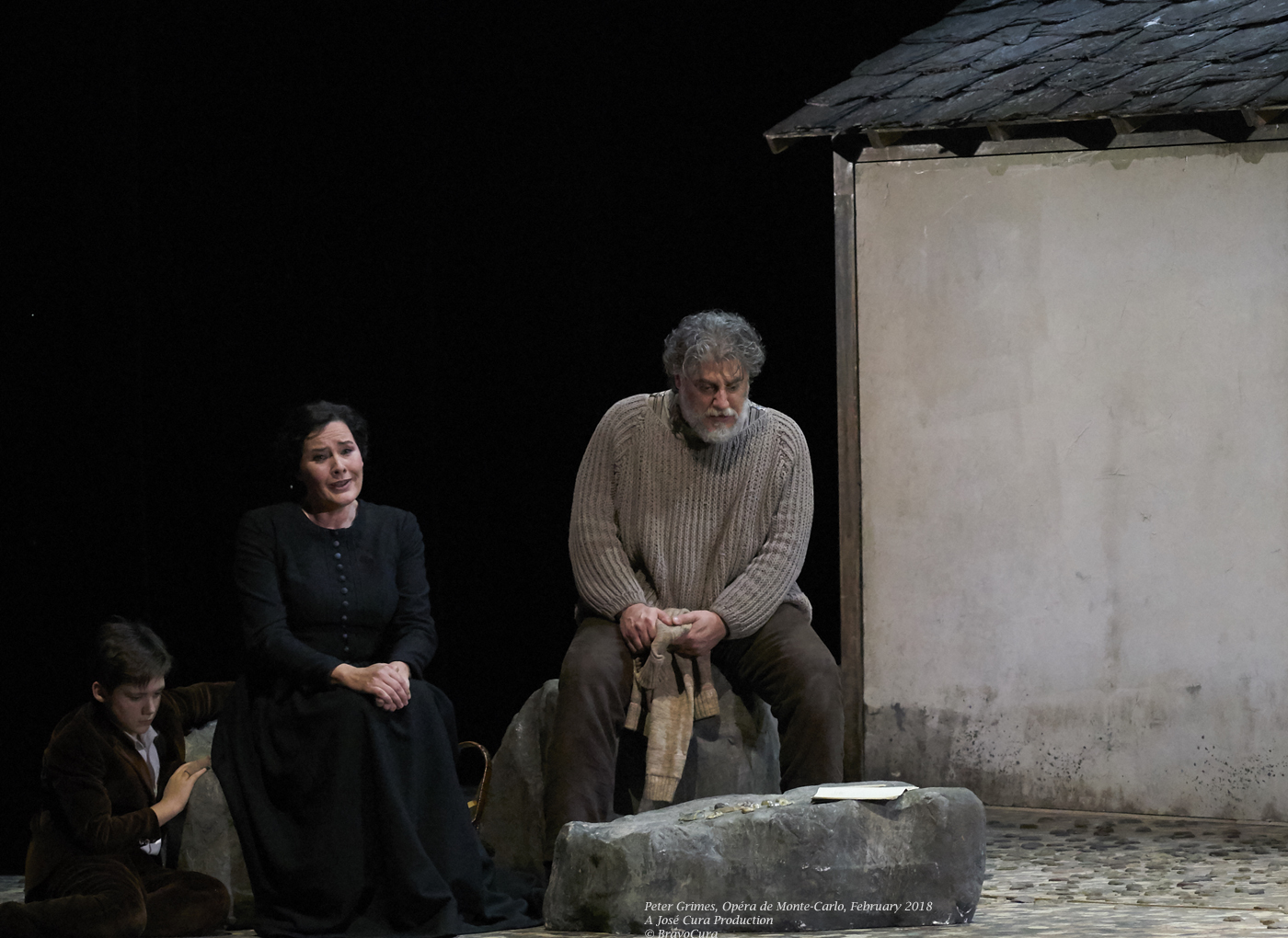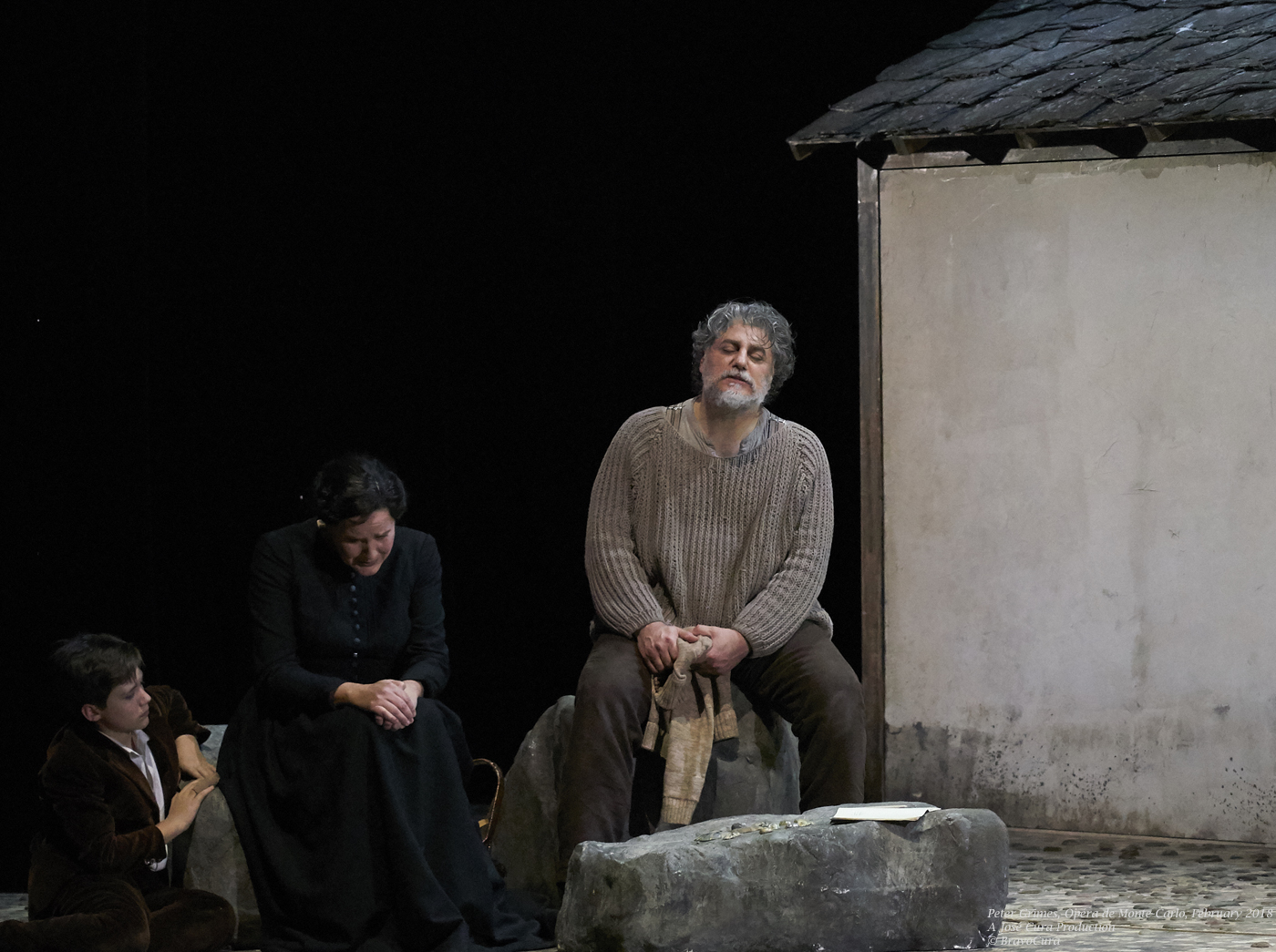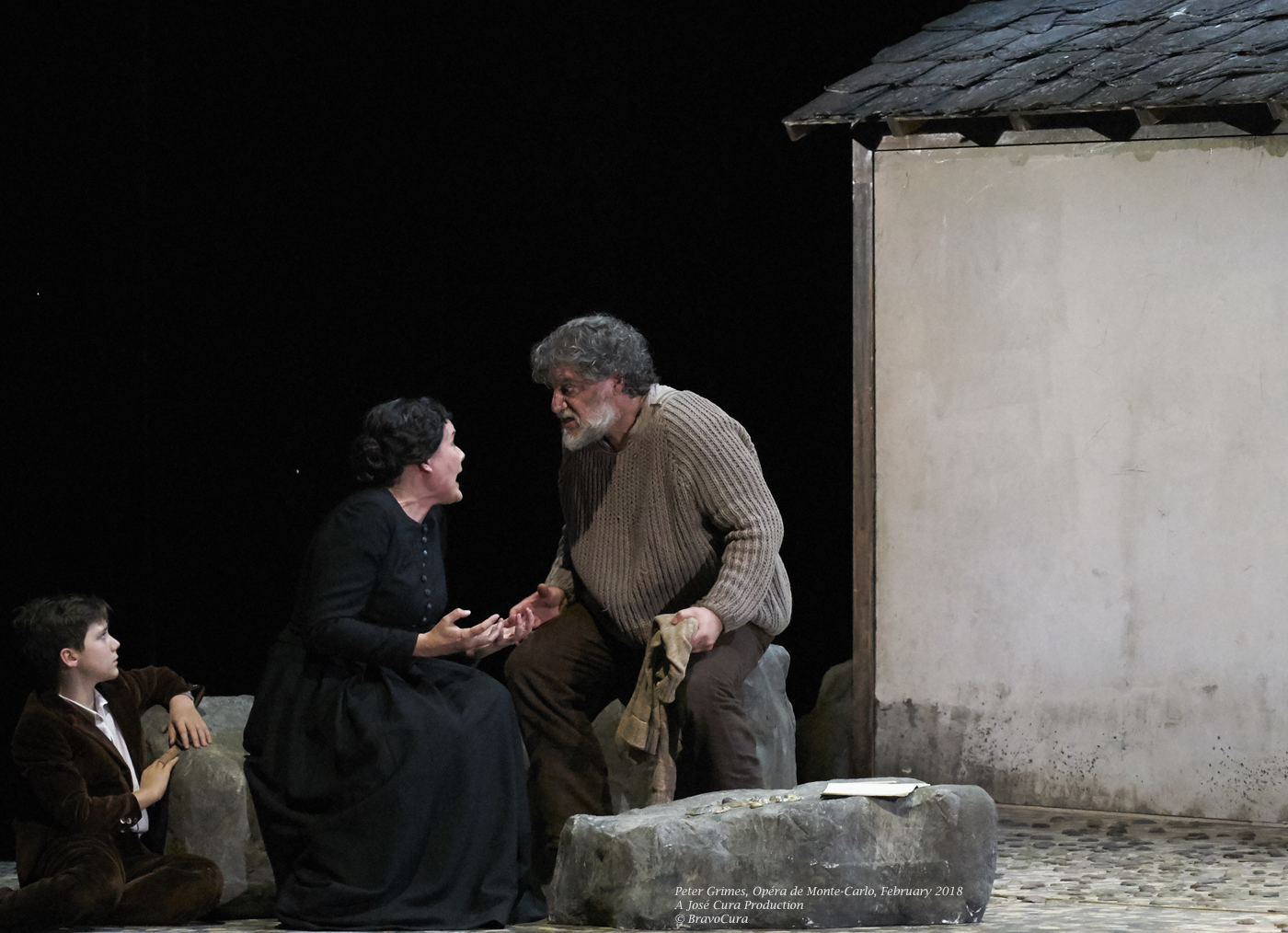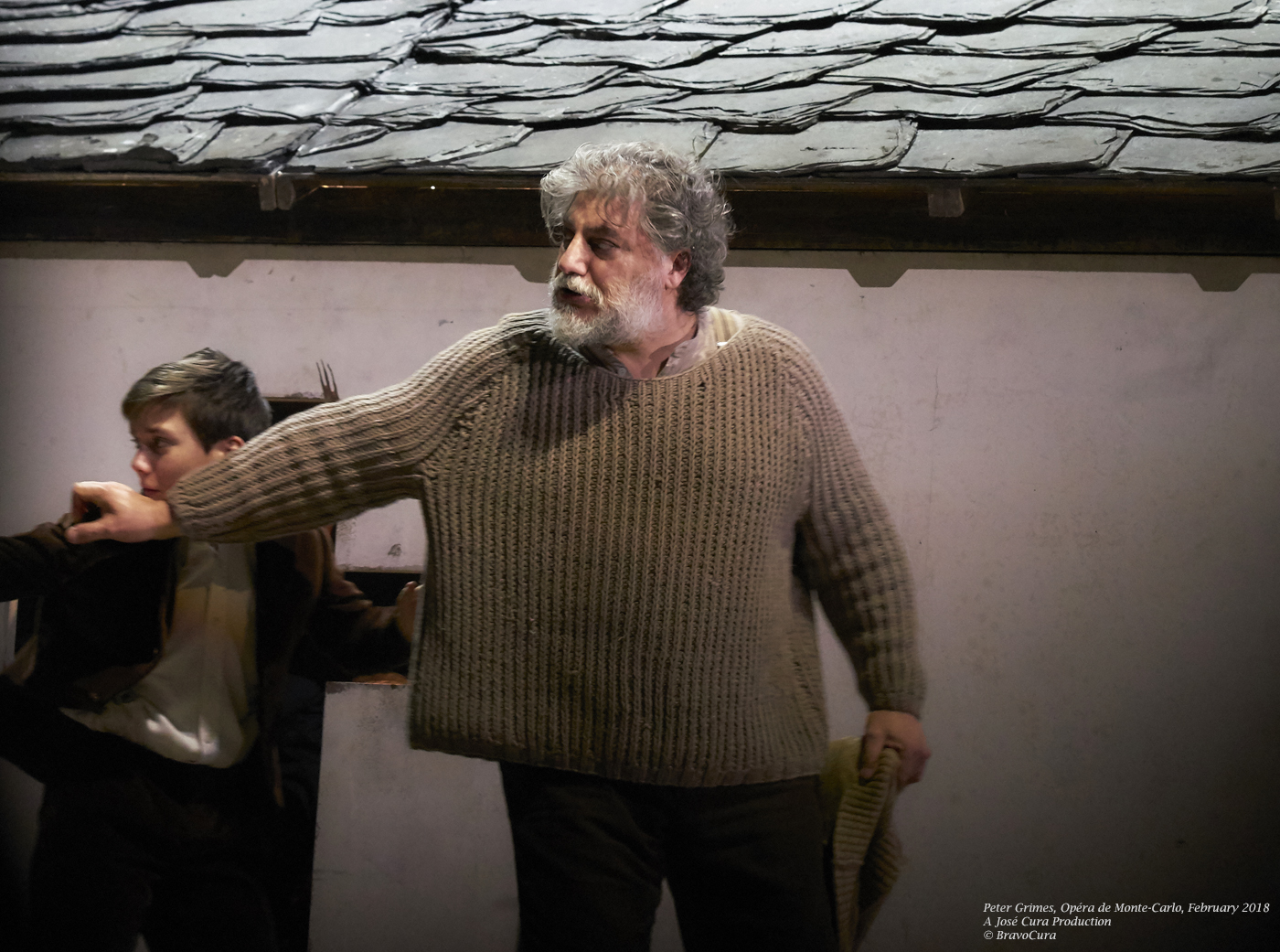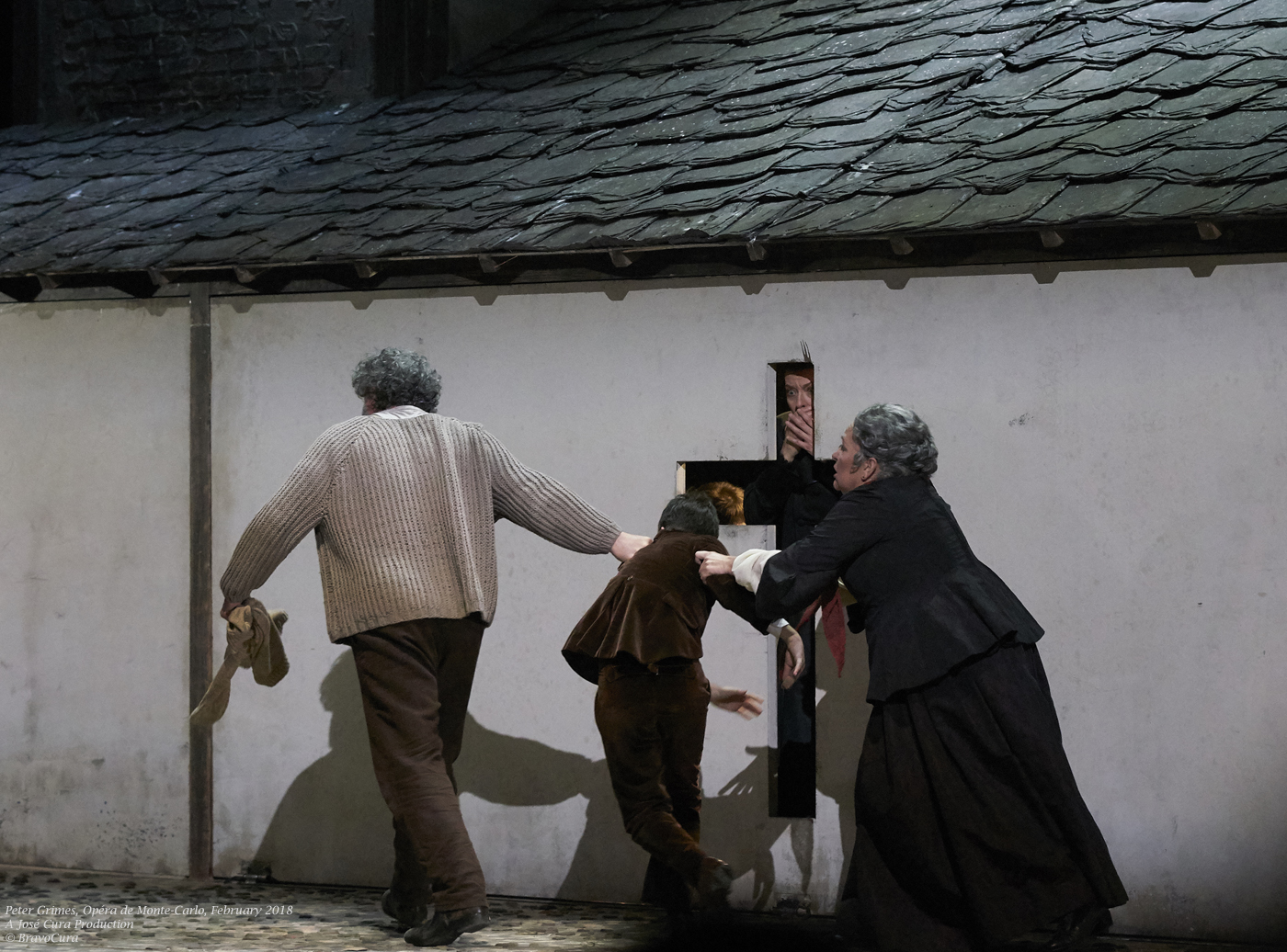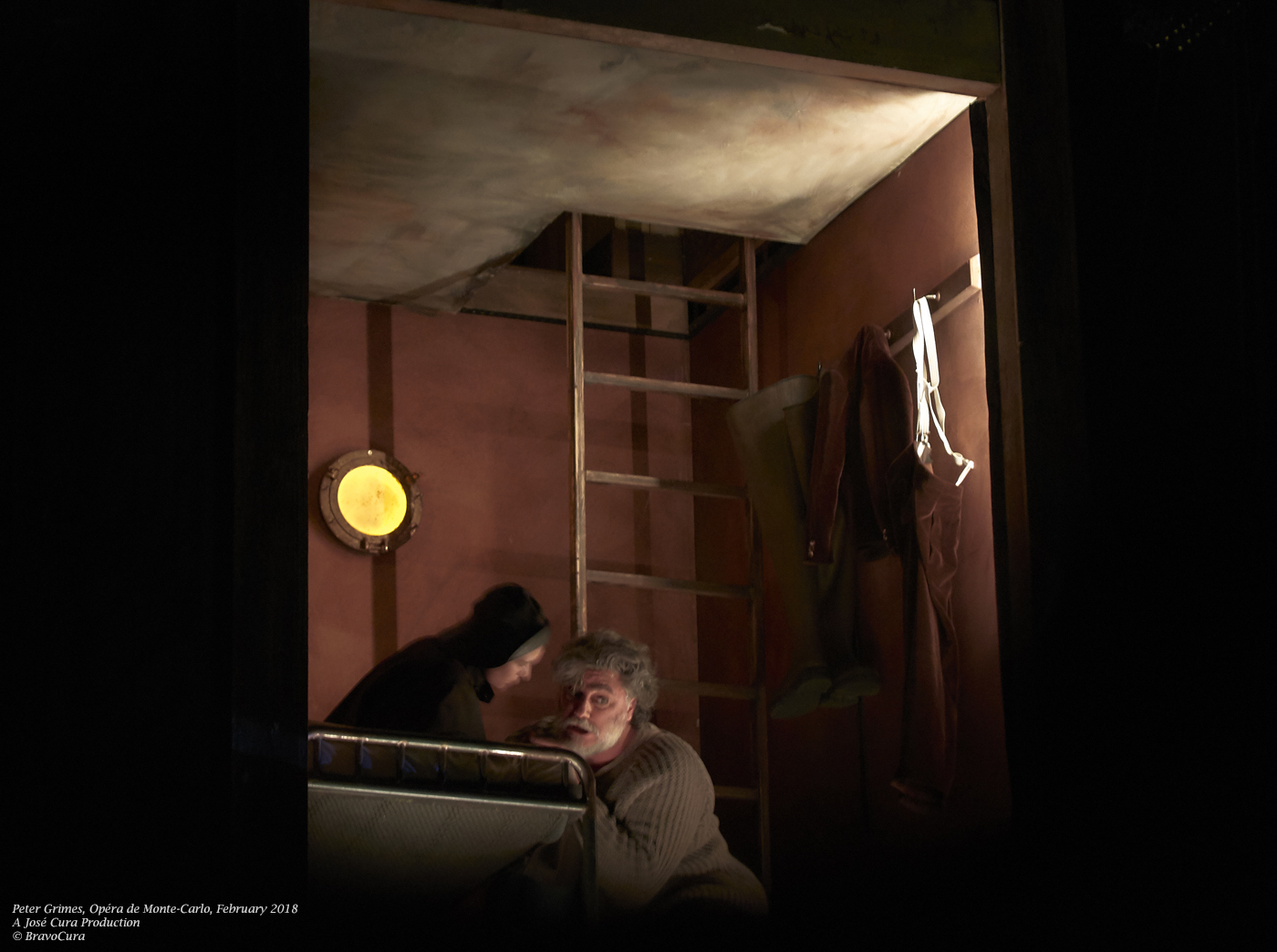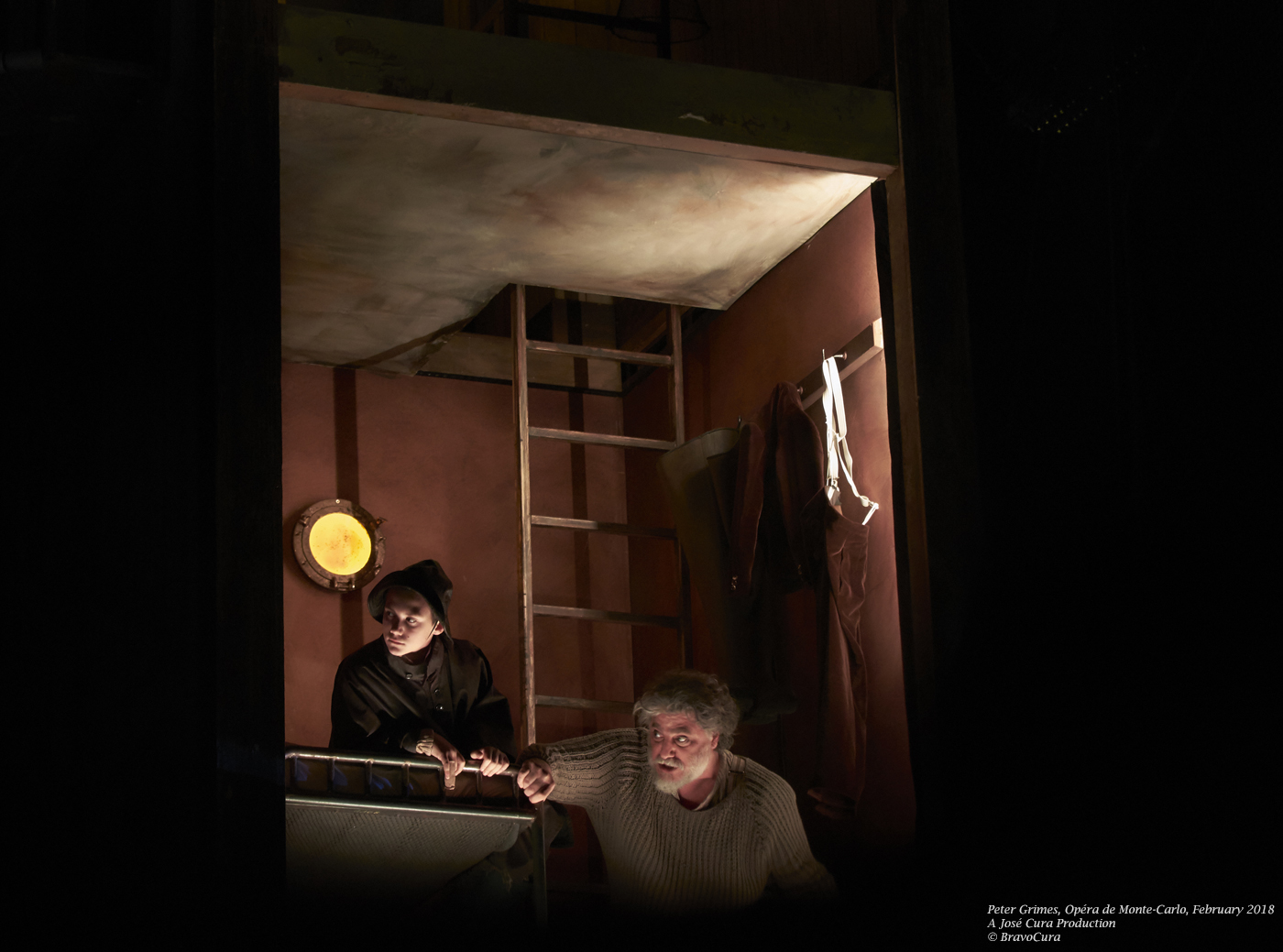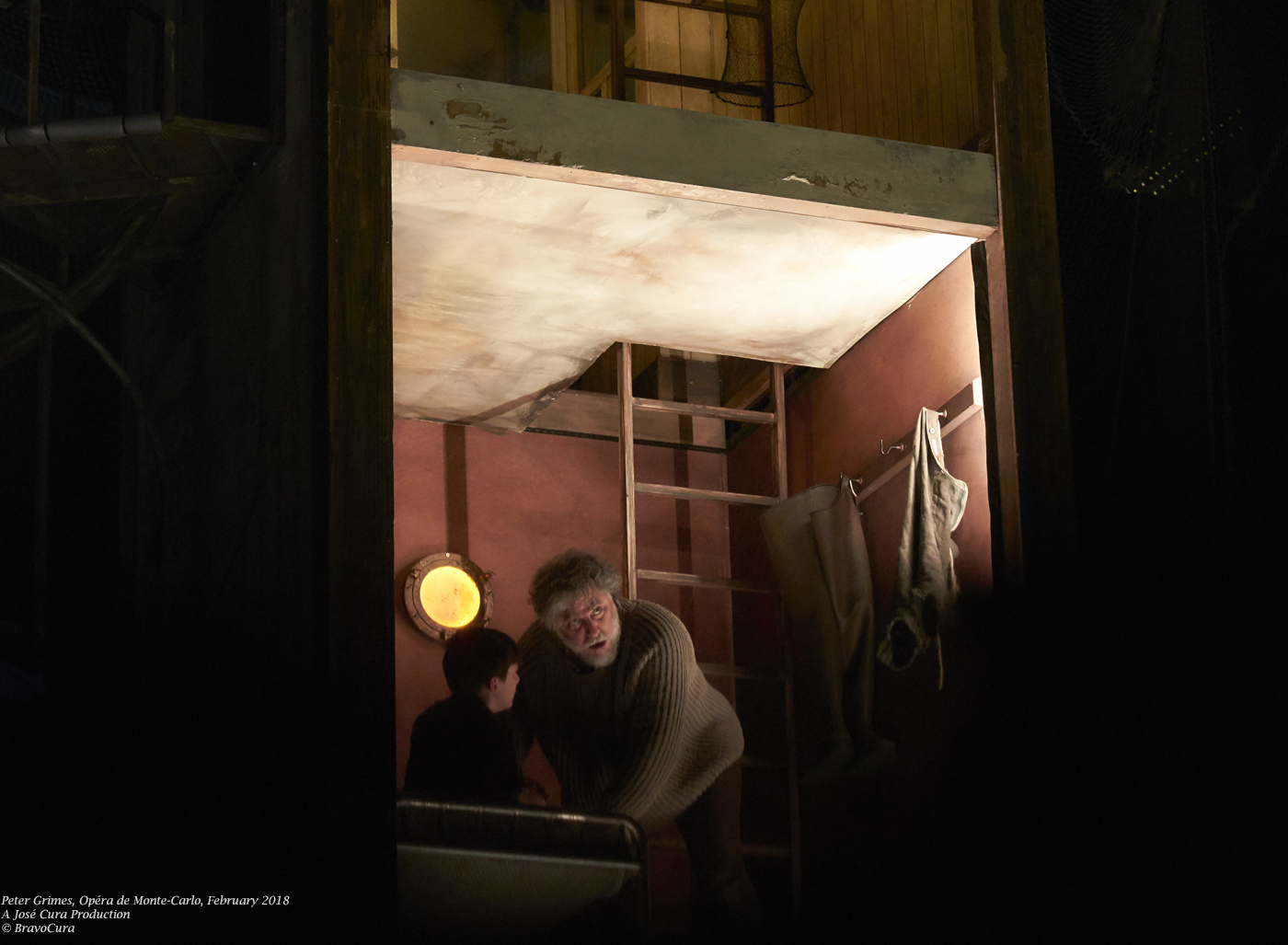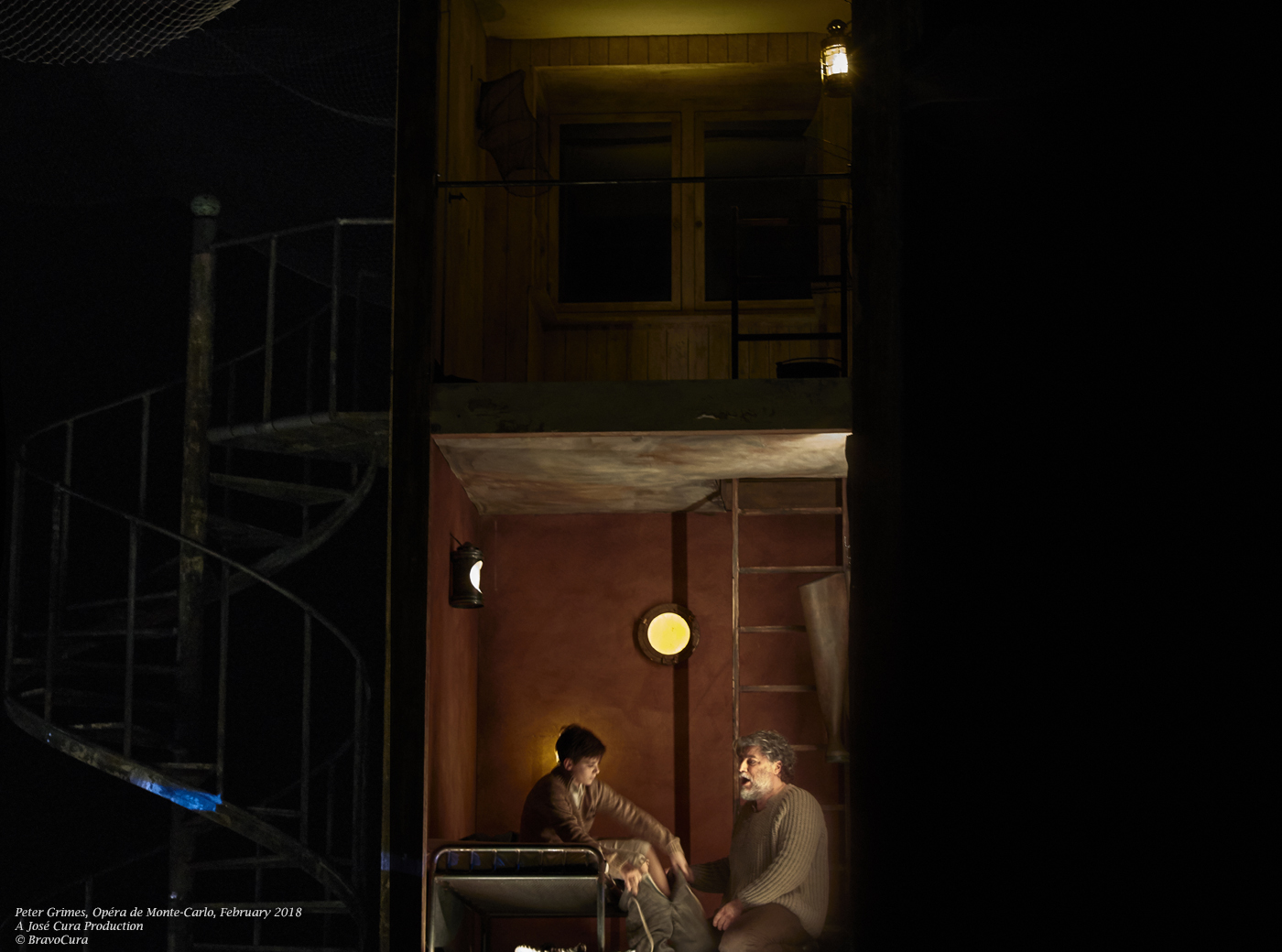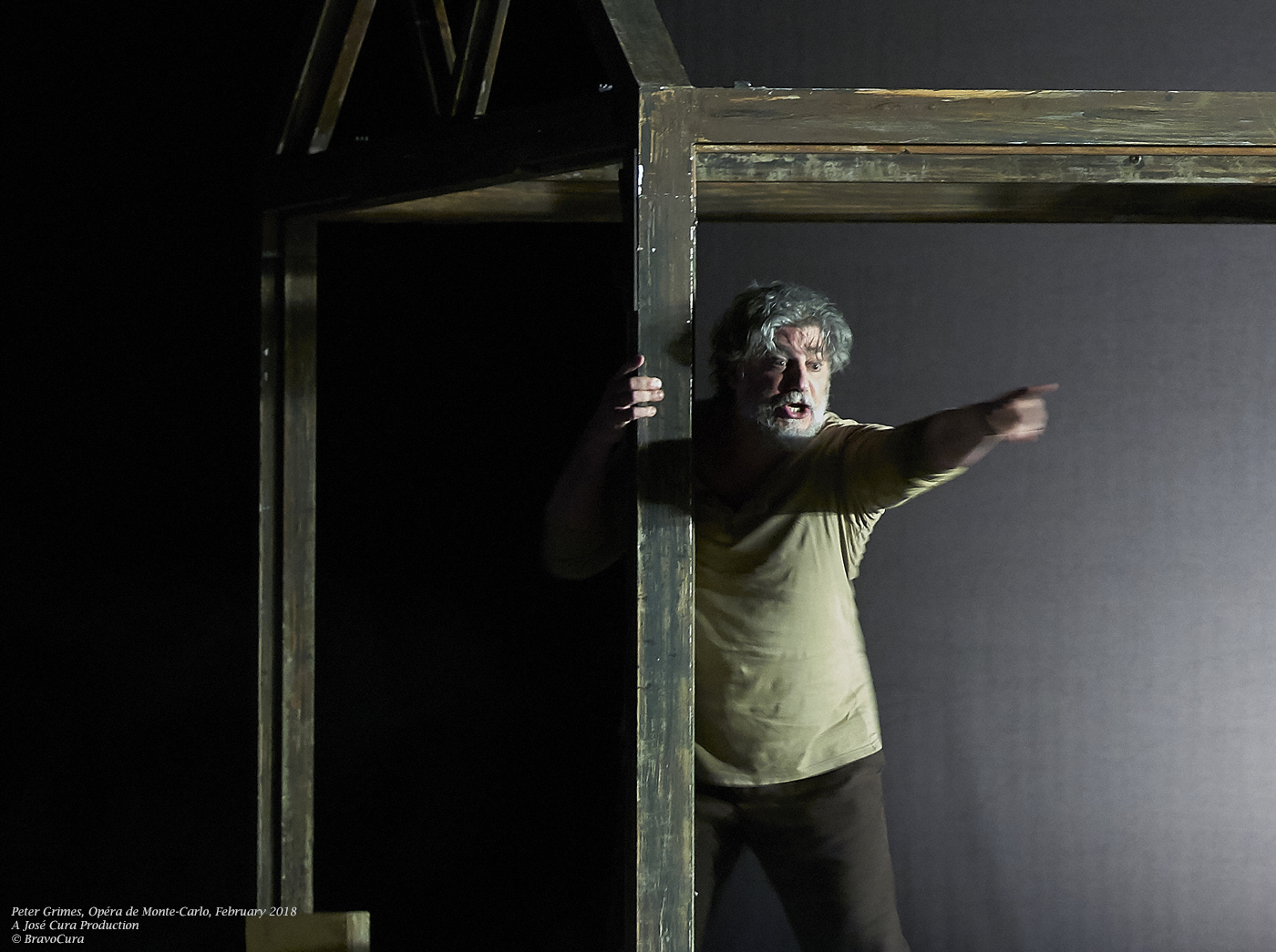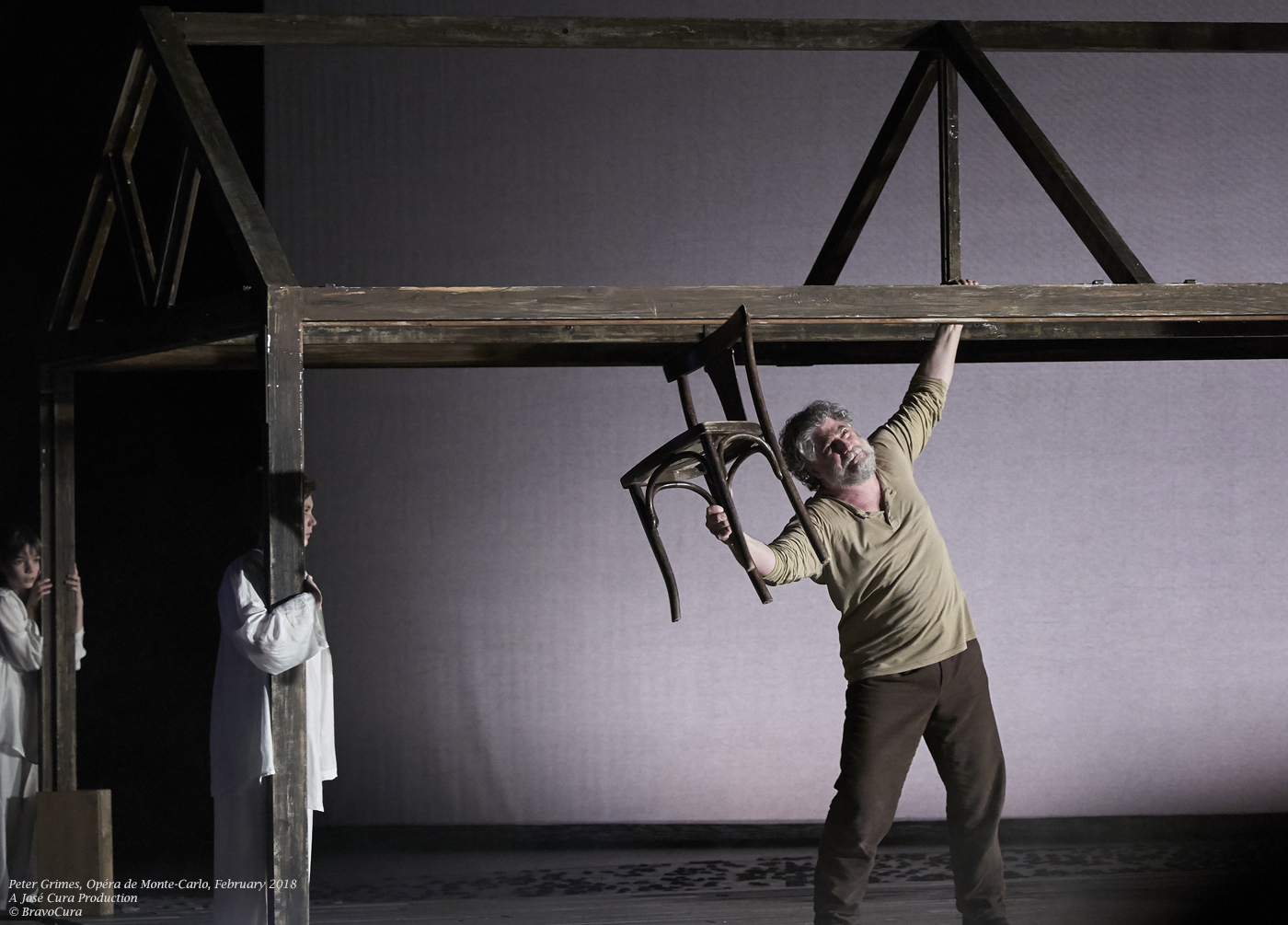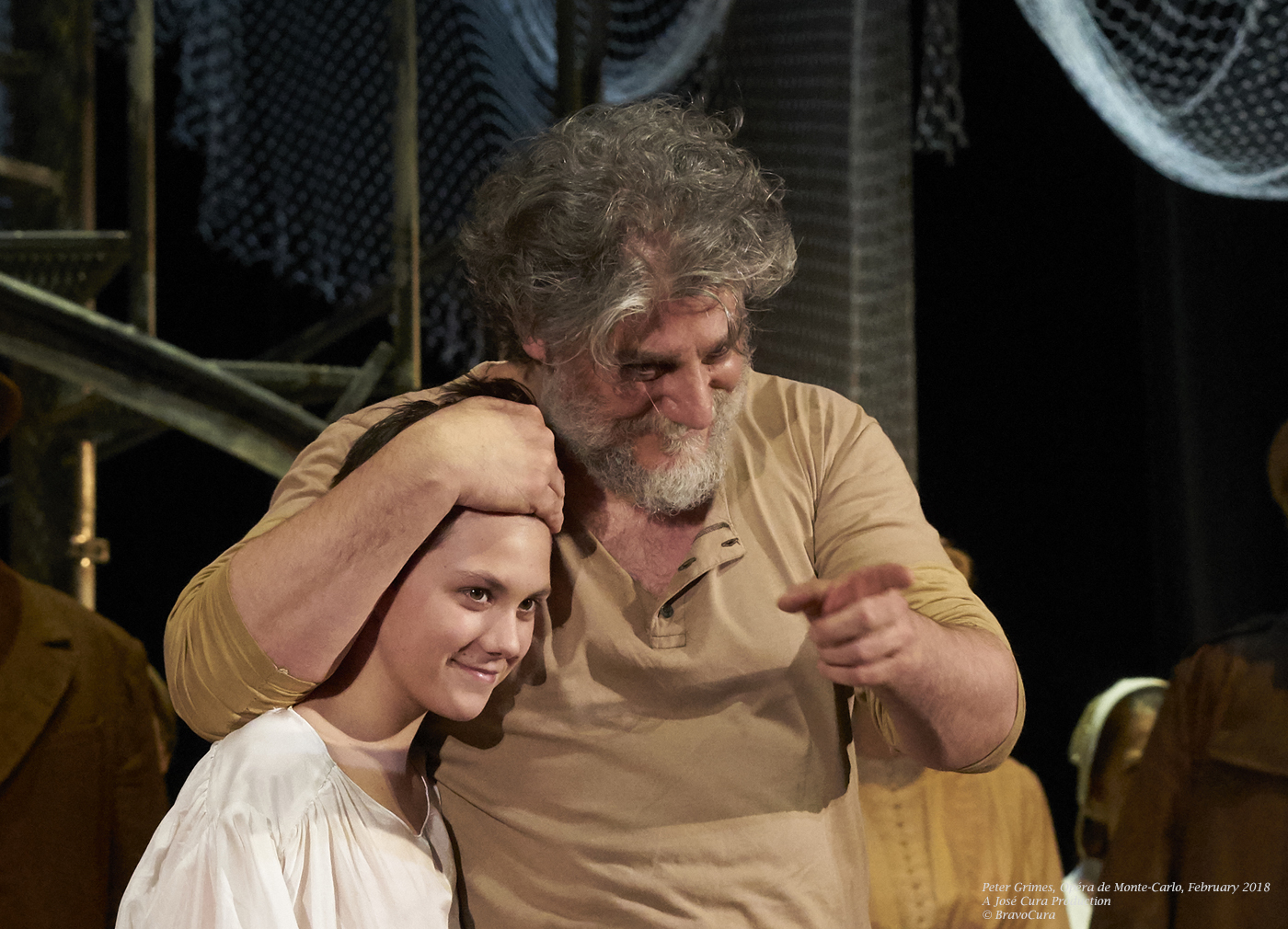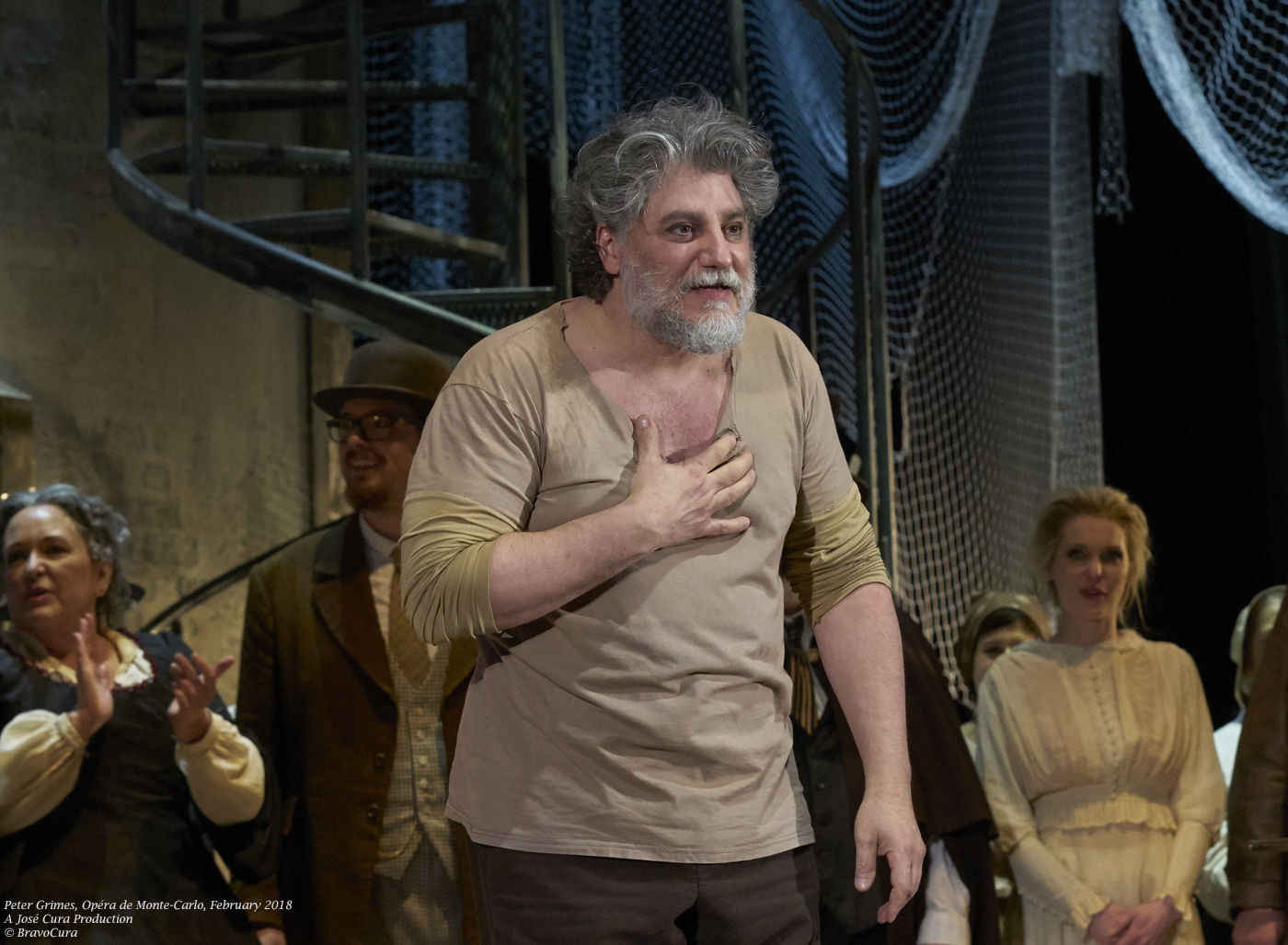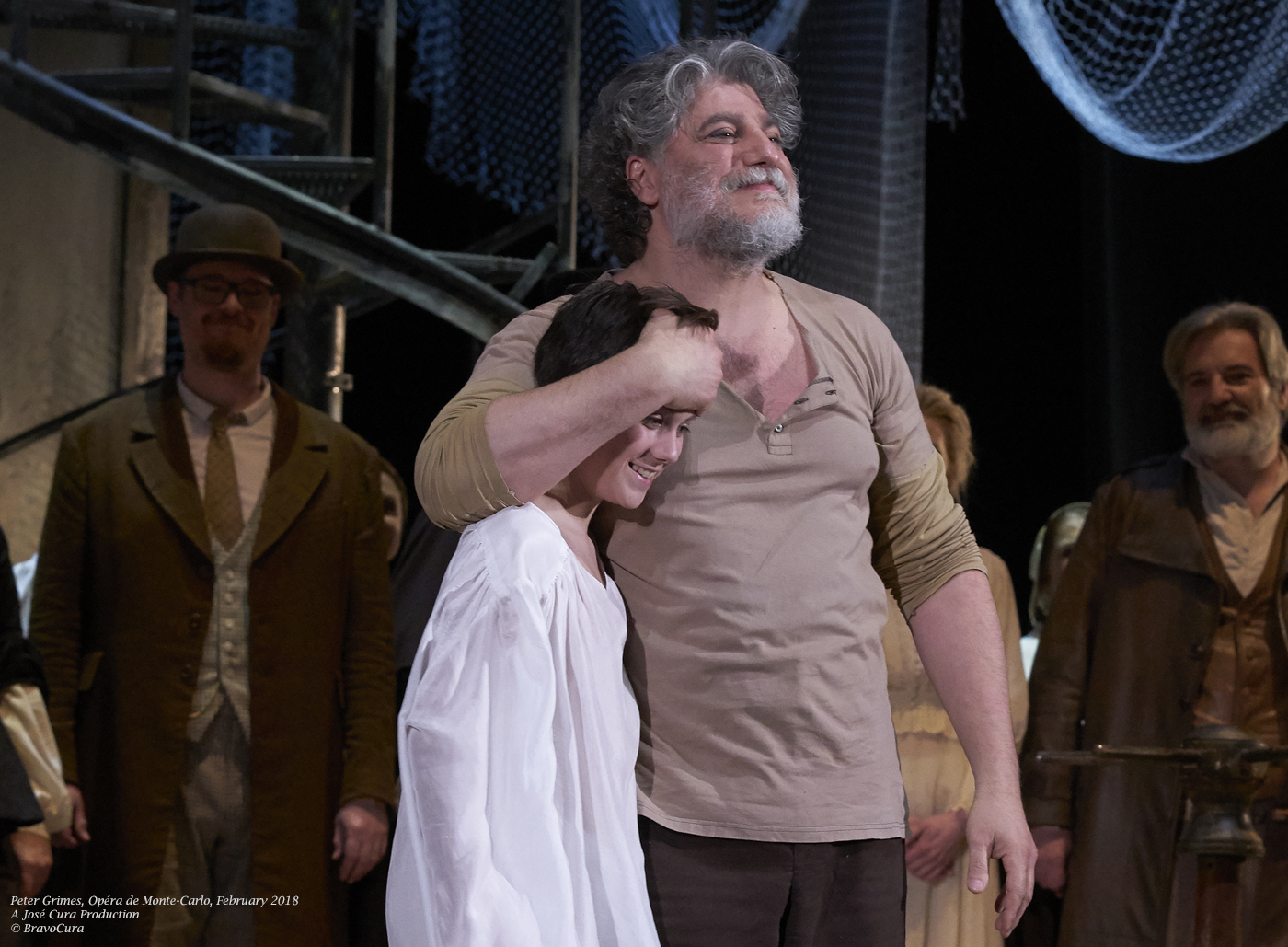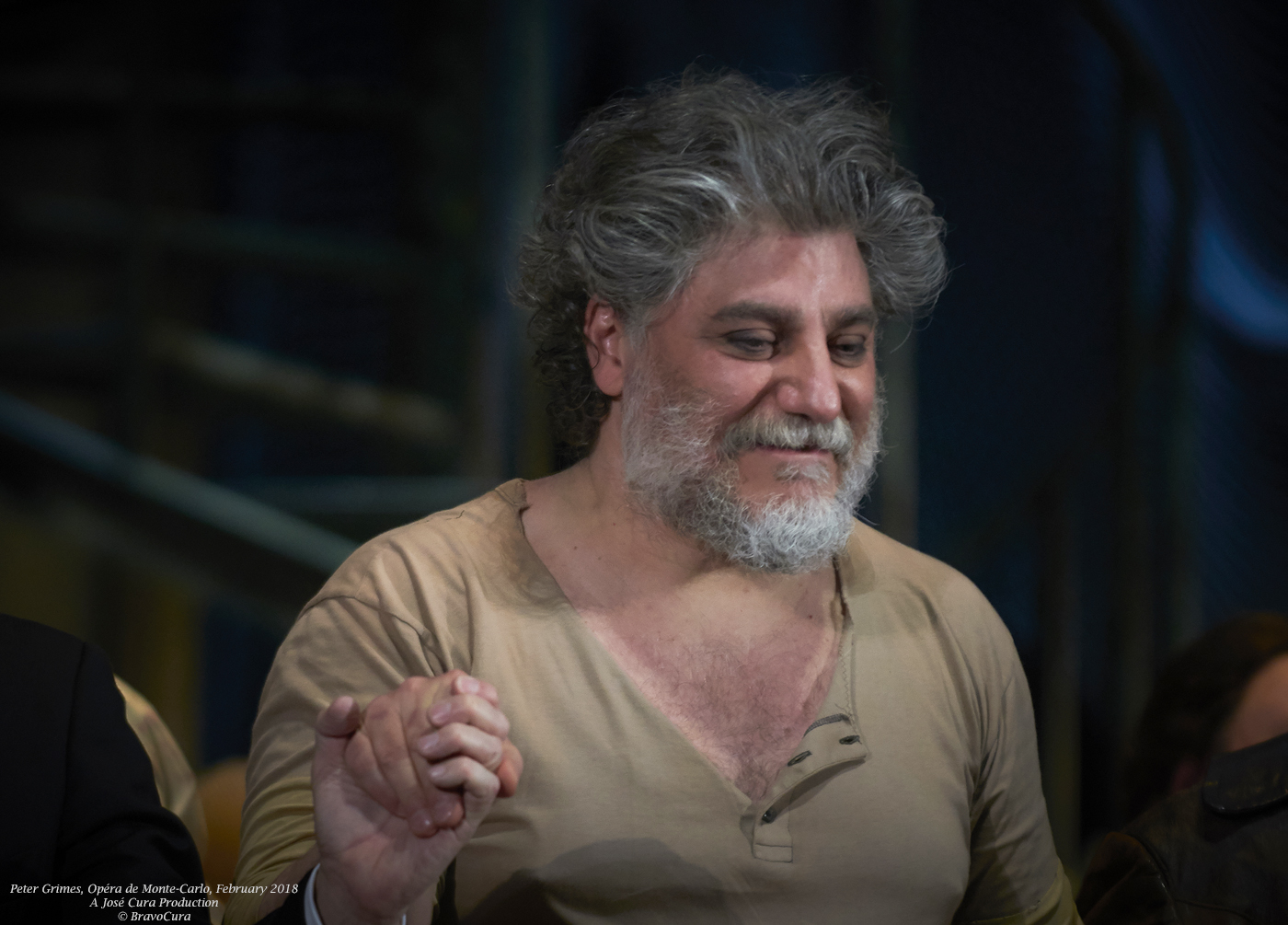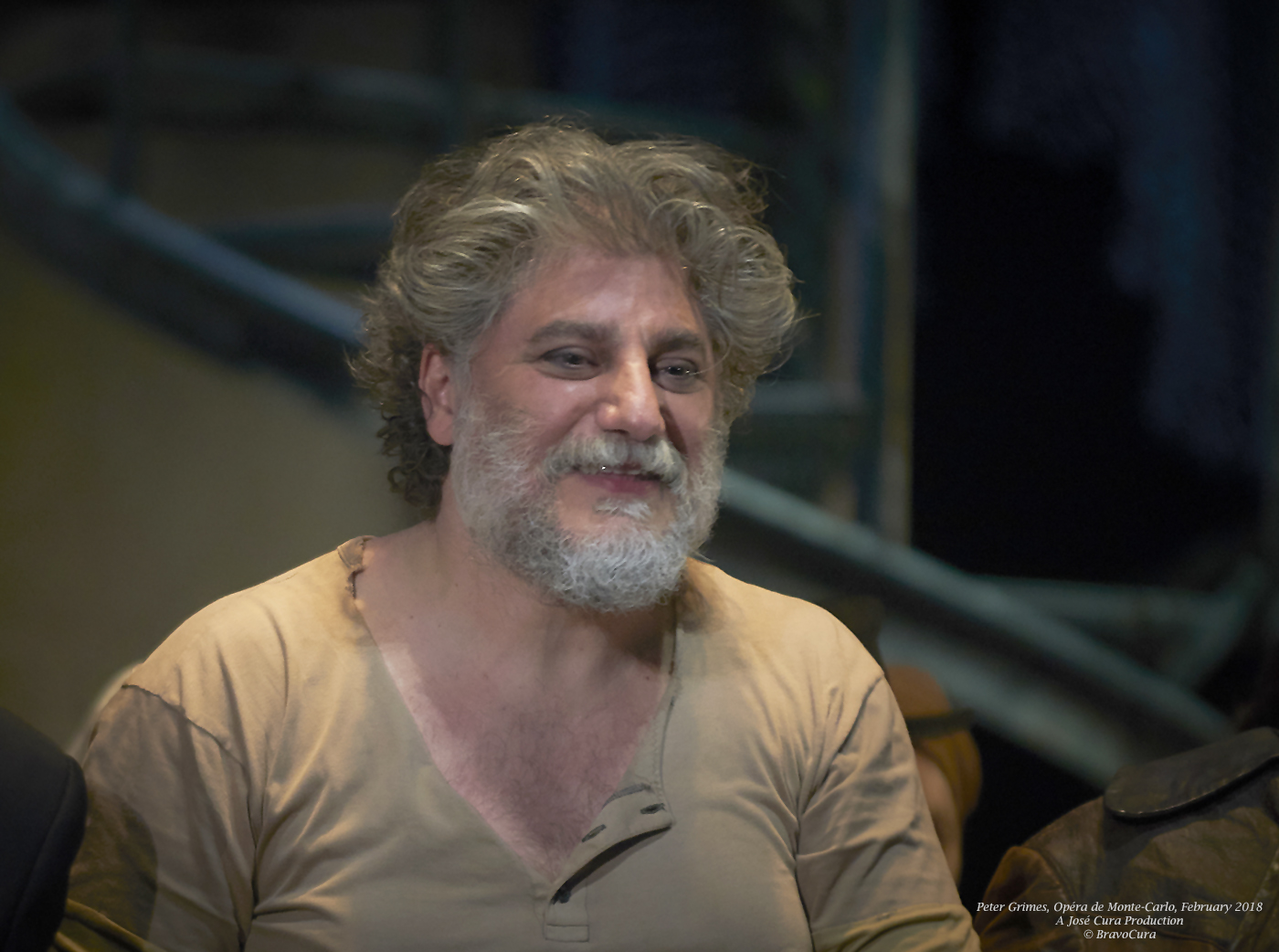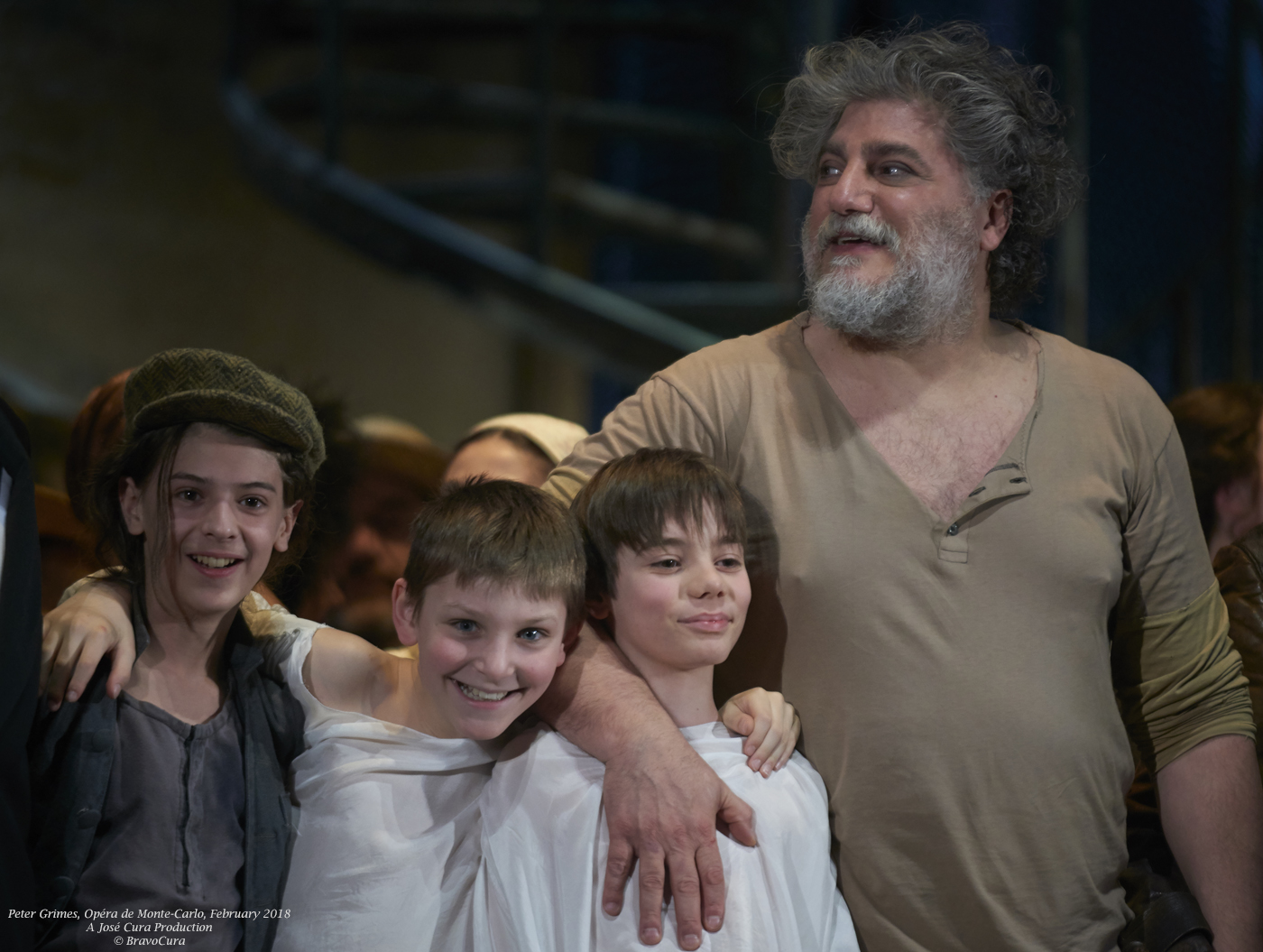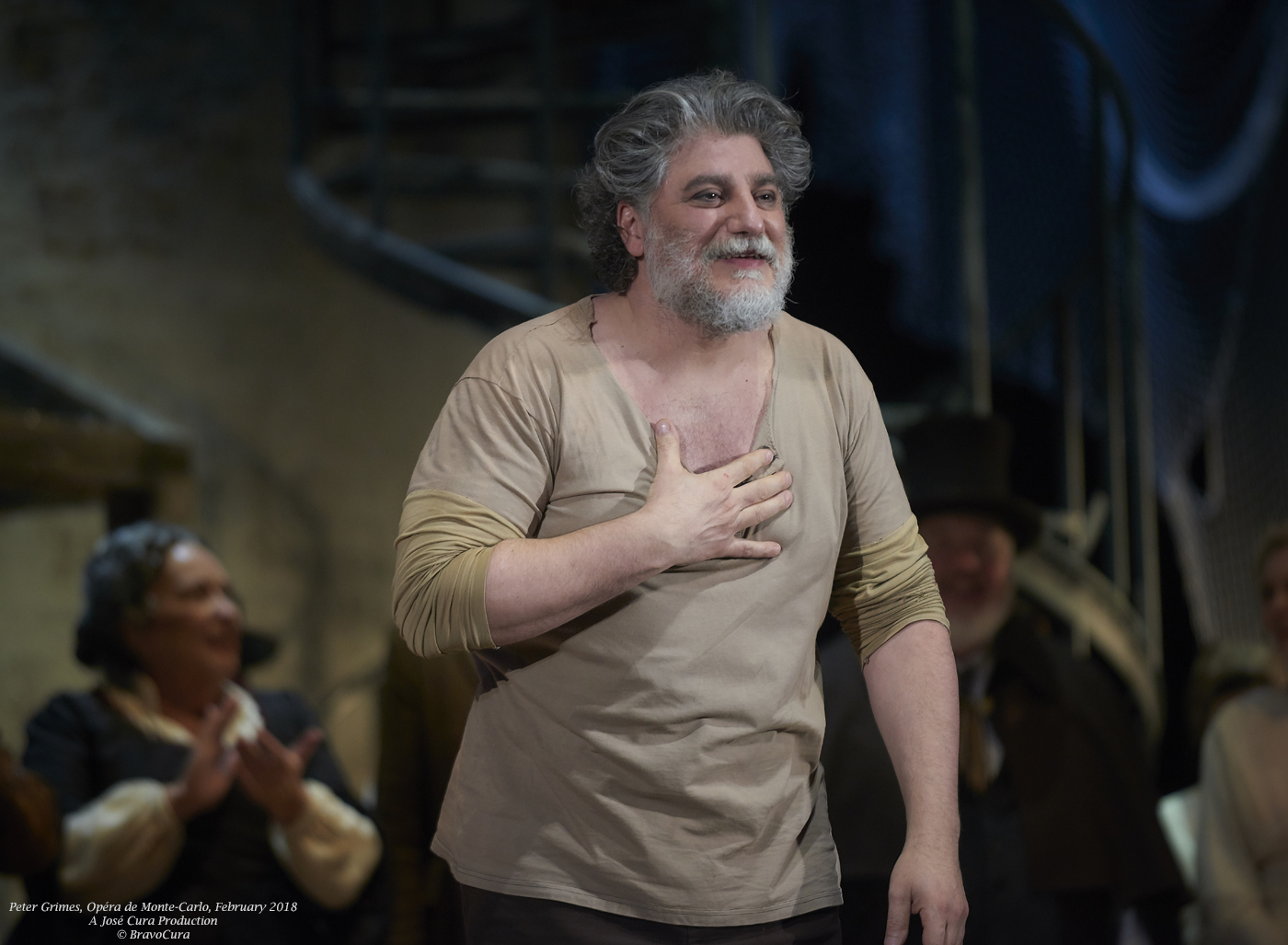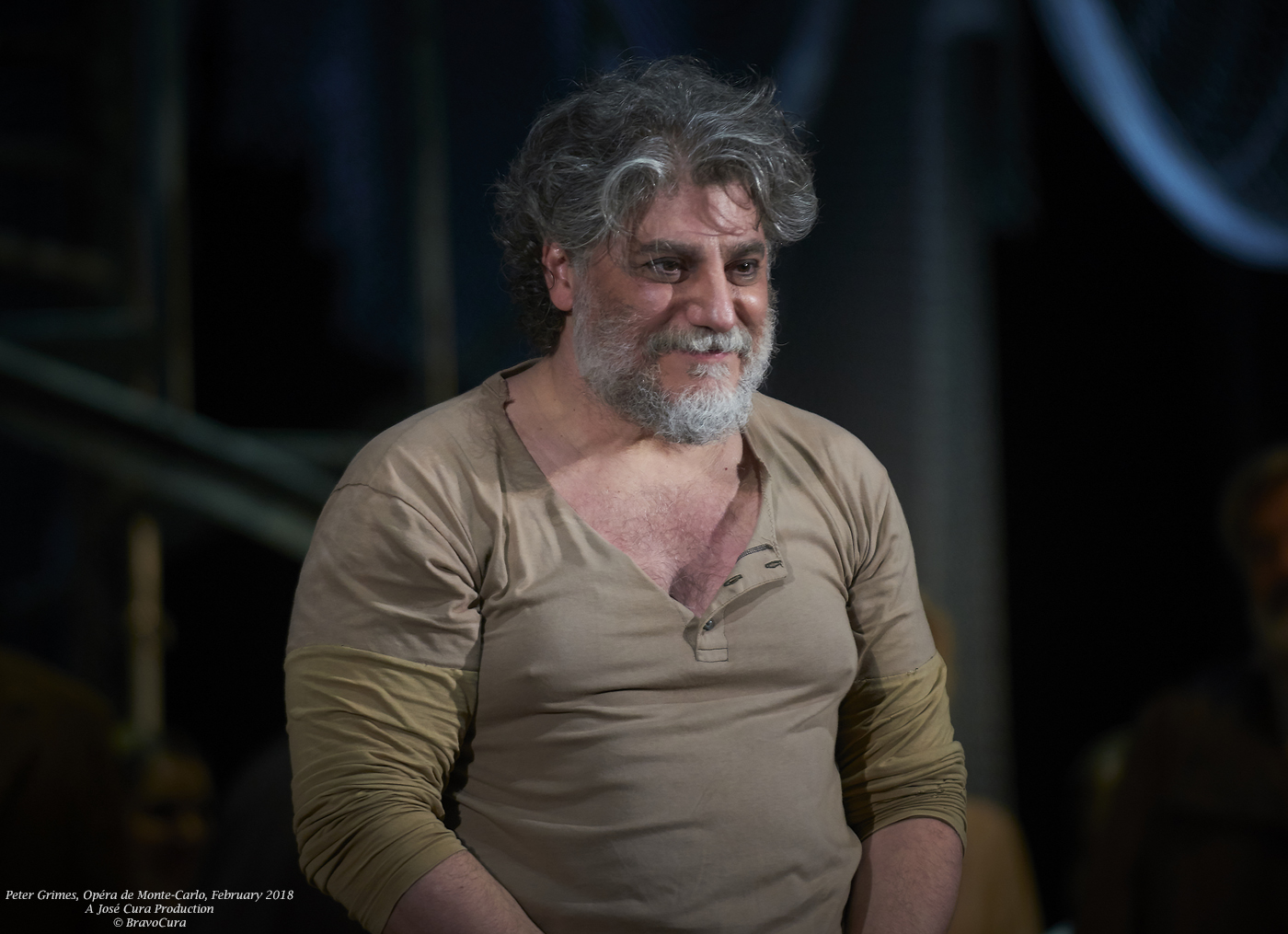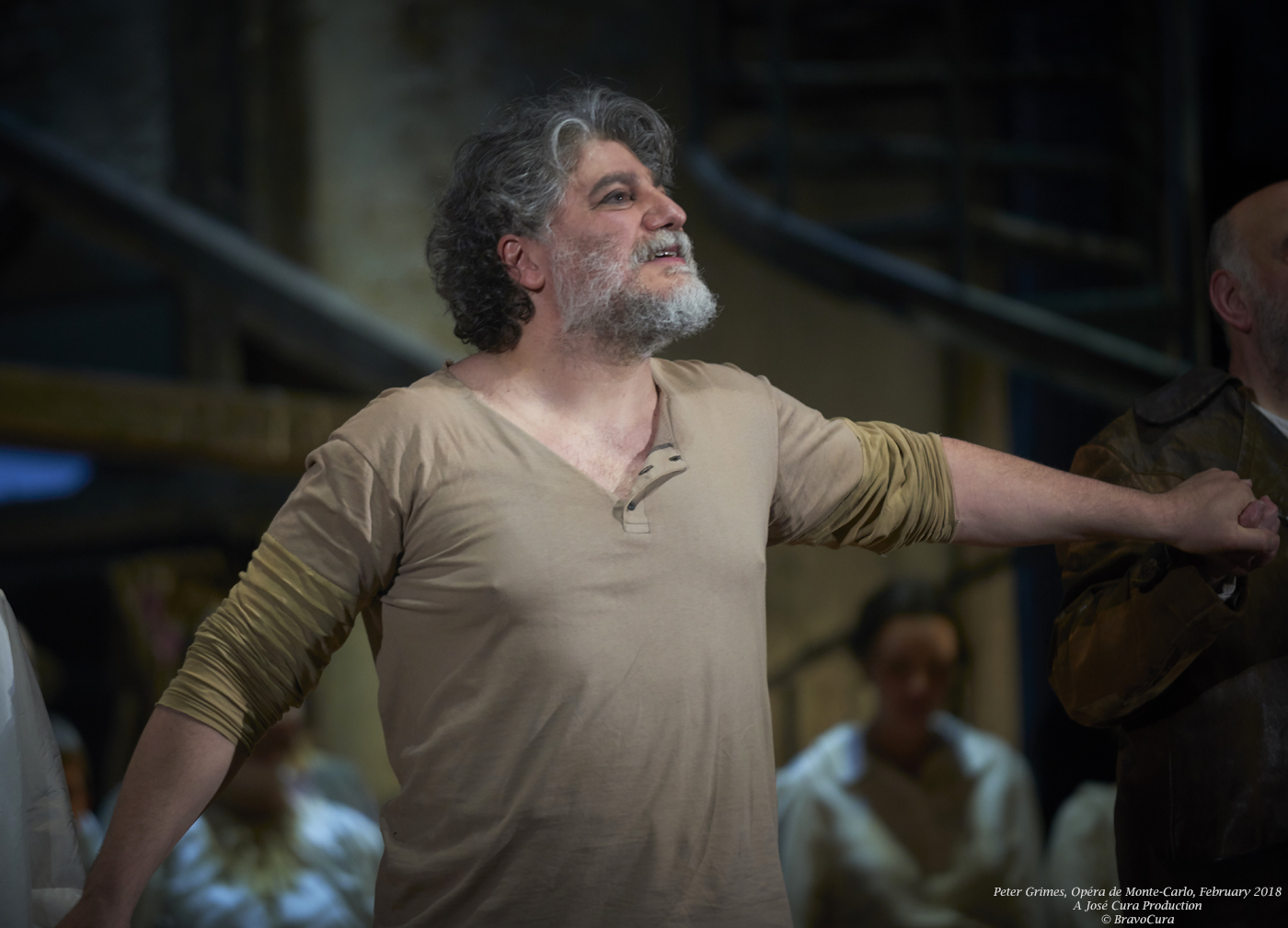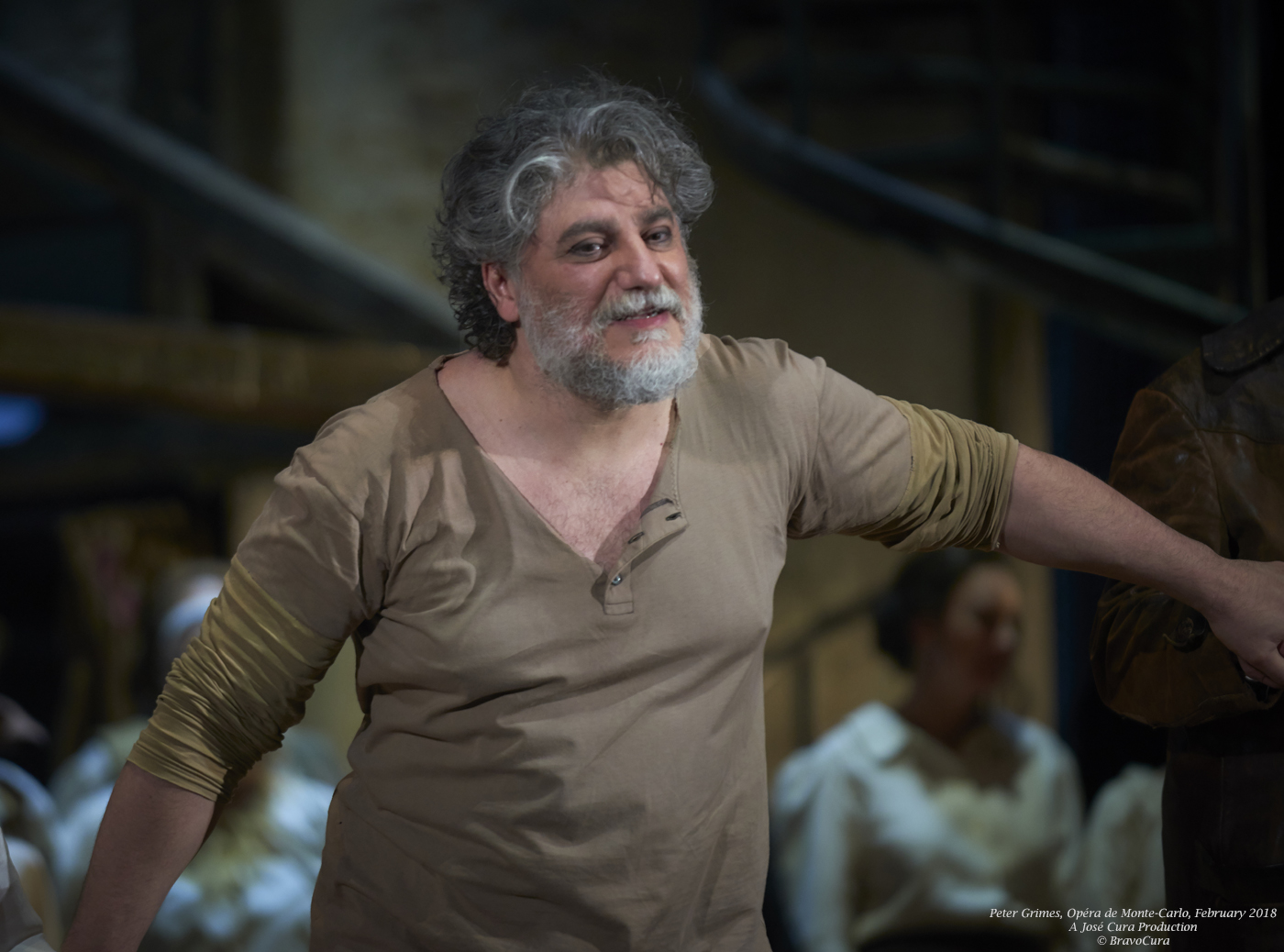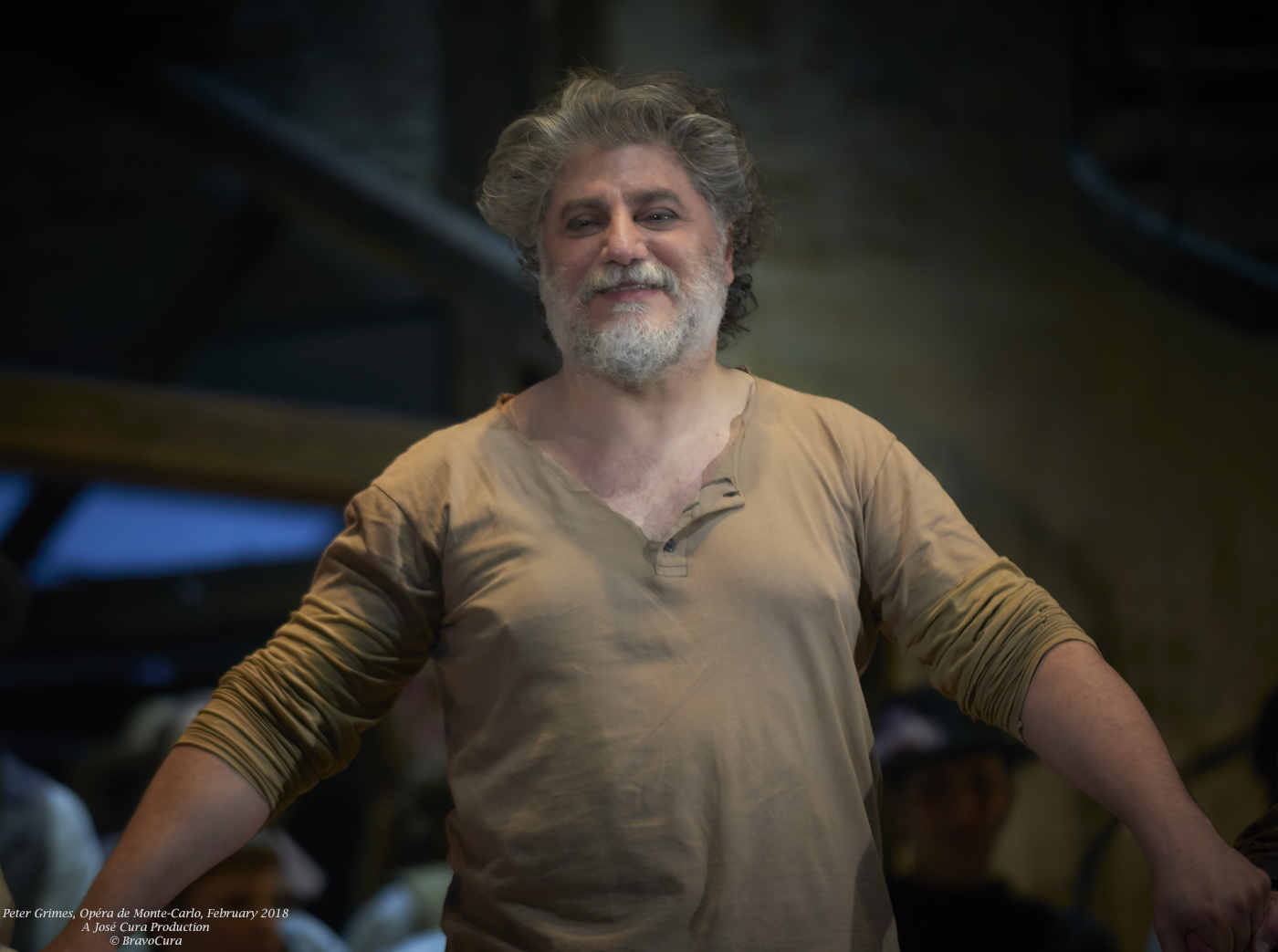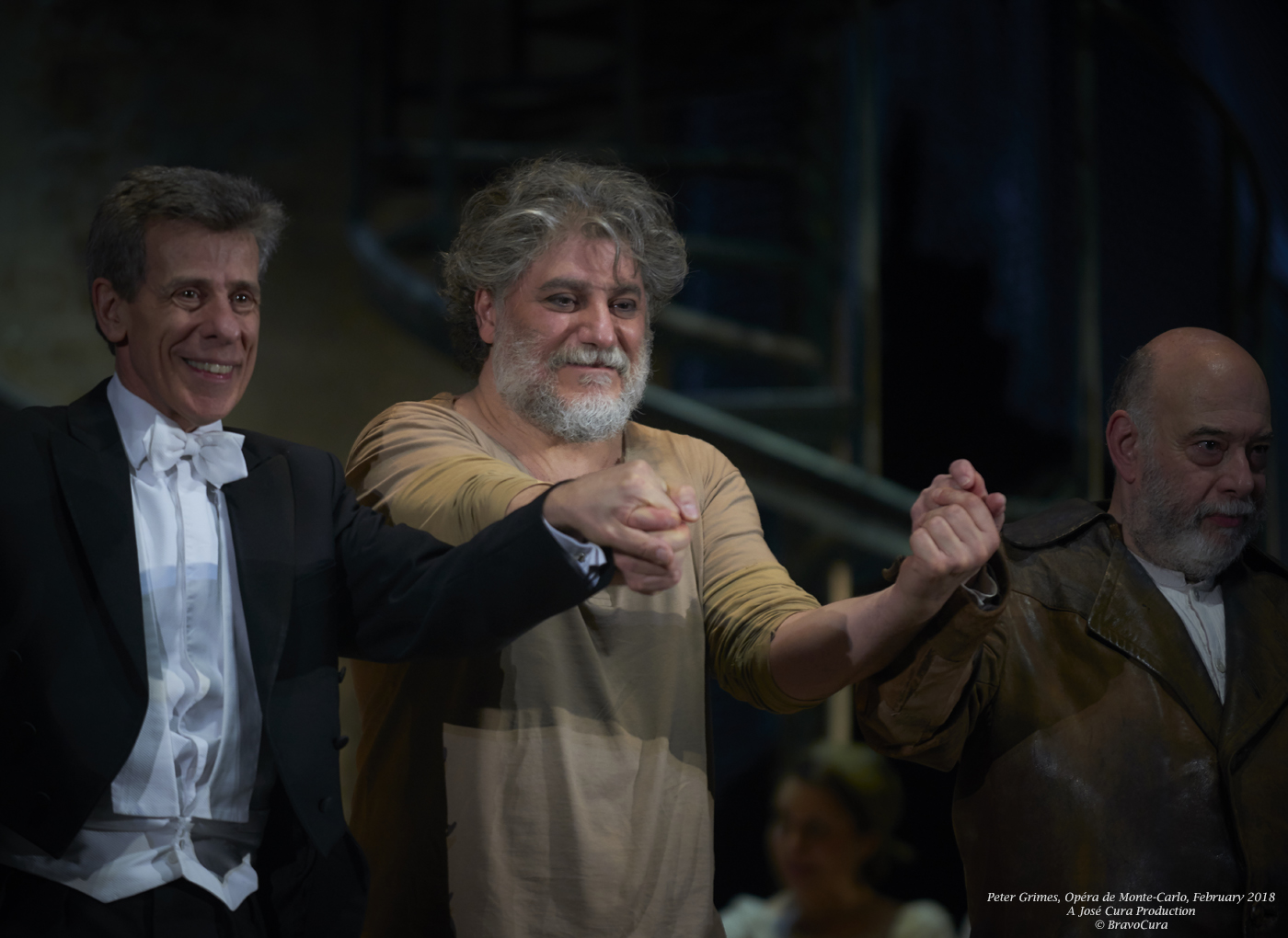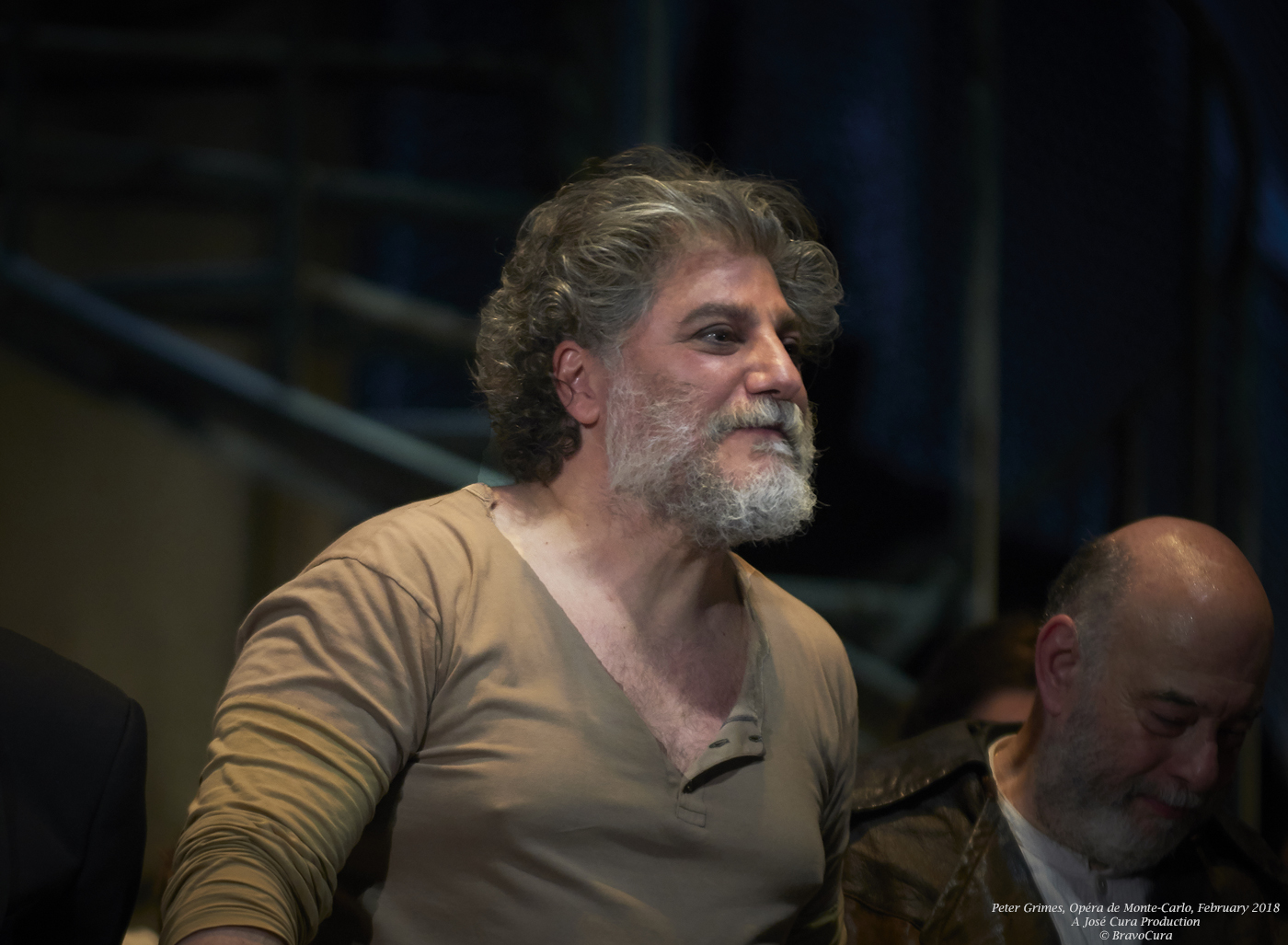|
Peter
Grimes,
Monte
Carlo,
February
2018:
Co-produced
with
Bonn
Opera,
where it
was
presented
in the
spring
of 2017
before
moving
to the
Salle
Garnier
in Monte
Carlo,
José
Cura’s
reading
of
Britten’s
Peter
Grimes
(Cura
also
sings
the
title
role) is
not
limited
to the
salt
spray
and
accursed
solitude
of the
sailor.
The
setting
he
designed
does not
deny the
certain
realistic
pragmatism,
enhanced
by the
dim
lighting,
[but
doesn’t
allow]
this
illustration
to
become
overwhelming.
The
rotation
of the
stage
reveals
different
facets
of the
unique
setting
where
the
promontory
of the
lighthouse
and the
hut of
the
fisherman
abut a
low
structure,
serving
in turn
as a
tavern
or
church,
according
to the
scene,
the
sanctuaries
for the
borough,
irritants
for the
harshness
of Peter
Grimes.
But the
effectiveness
of the
staging
serves
as
social
illumination
more so
than the
poetic
abstraction
to which
some
would be
tempted
to
reduce
the
Britten
work
because
of the
evocation
of the
mystery
of the
seas.
Even the
restraint
of the
Prologue,
during
which
Grimes
appears
alone in
front of
a
blue-gray
canvas
like the
sea
under
the moon
and on
which
the
shadows
of the
court
are
projected,
the
magistrates
and
townsfolk
reduced
to
voices
as in
mental
ruminations,
shapes
the
premises
of an
interpretation;
[the
direction]
is
sensitive
to the
psychological
complexity
of the
character
and the
situations
that
restores
the
dialectic
between
nature
and
society,
at
evidenced
in both
the
score
and the
libretto.
It is
not
necessary
to
dispense
with the
letter
to allow
the
spirit
live.
No
transposition,
no alibi
of
modernity:
Cura’s
work
focuses
first on
highlighting
the
incarnations.
In the
title
role,
[Cura]
defies
any
putative
stylistic
archetype,
perhaps
because
of the
non-concealable
Latin
characteristics
of his
vocality
in which
an
emotionally
physical
engagement
emerges.
His
sincerity
in the
role
exposes
the
ambivalence
of this
marginal
man,
brutal
and
skin-deep,
rejected
by the
community,
without
yielding
to some
simplistic
aggressive
male
pride.
José
Cura
undoubtedly
constitutes
the
pivot
around
which
the
drama is
articulated...
Anaclase,
28
February
2018, GC

Peter
Grimes,
Monte
Carlo,
February
2018:
After a series of sold-out
performances
at the
Bonn
opera
(co-production),
Peter
Grimes
premiered
at the
Salle
Garnier
on
Friday,
23
February.
A
“fascinating
human
adventure,”
a
director
of the
Monte
Carlo
Opera
told us,
as tenor
José
Cura,
adored
by the
Monegasque
opera
scene,
interpreted
the
title
role
while
taking
care of
the
staging,
the
sets,
and the
costumes:
the
result
was a
pessimistic
vision
of a
fishing
village
on the
east
coast of
England
that
Dickens
would
not have
rejected.
Within
the
prologue,
the
three
acts and
five
luxurious
musical
interludes,
it is
necessary
to
retain
an image
of a
triptych
for this
dark
history:
in the
first
part,
the dull
omnipresence
of the
sea is
always
threating,
literally
a
tempestuous,
uninterrupted
flow of
notes—the
winds
and bass
instruments
placed
to the
right of
the
maestro—and
superbly
personified
by the
Monte
Carlo
Philharmonic
Orchestra.
Then,
the
pre-eminence
in the
score,
the
polyphonies
representing
the
devastating
disaster
of
public
opinion
with
striking
interventions
of the
chorus
of the
Monte
Carlo
opera:
"Merciless
tide,
spare
our
shores,"
"The old
Joe left
with
young
Joe" or
still
more
"Arrogant
and
proud,
we will
destroy"
in Act
III.
And
finally,
the
subtle
feminine
character
of Ellen
Orford,
a
mixture
of
determination
and
empathy.
In the
middle
of this
triangle:
a dark,
irrepressibly
reactive
Peter
Grimes.
[…]
What to
say
about
José
Cura?
Audience
members
commented
that
they
were
incredibly
amazed
by the
new
performance
of the
Argentinian
already
basking
in the
glow of
his
previous
appearances
on the
Monegasque
stage:
the now
legendary
Stiffelio
in April
2013 and
more
recently
but
equally
astonishing
Tannhäuser.
When the
talent
of an
operatic
artist
is able
to
arouse
genuine
emotion,
his
repertoire
can
leave
Giuseppe
Verdi
and
elegantly
rub
shoulders
with
Richard
Wagner
and then
venture
with
unparalleled
charm
into
contemporary
theater.
From his
impressive
"Alone,
Alone,
Alone
with the
Dead
Child"
signifying
his
initial
despair
to his
final
"Here
you are,
nearly
home"
through
his
daydreaming
"In
dreams,
I built
myself
some
kindlier
home" in
the
presence
of his
apprentice,
José
Cura
impresses
us by
the
irreproachable
accuracy
of his
tone and
forces
admiration
by the
successful
vocal
and
dramatic
expression
of this
inner
chaos,
of this
incapacitating
psychological
surge
that
finds
its
anchor
only in
death.
Musicologie,
24
February
2018
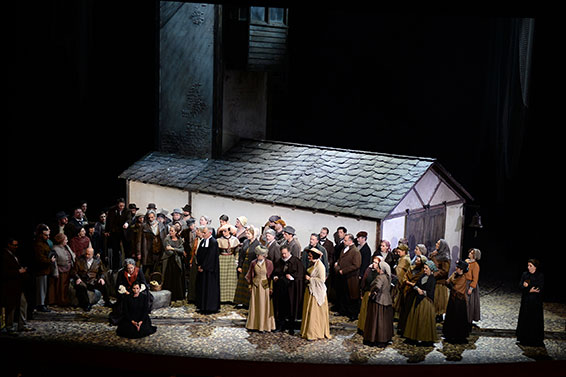
Peter
Grimes,
Monte
Carlo,
February
2018:
The Monte Carlo Opera presented
the
Britten's
opera
Peter
Grimes
whose
insistent
and
oppressive
intensity
is
perfectly
rendered.
Peter
Grimes,
an opera
created
by
Benjamin
Britten
in 1945,
is one
of the
composer’s
most
powerful.
Dramatically,
the
tension
never
fades in
the
adventures
of this
cursed
fisherman
who sees
two of
his
apprentices
die in
accidents:
the more
this
anti-hero
seeks to
silence
the
gossip
about
him, the
more he
gives
them
credence.
Musically,
the
score
remains
hectic
during
two hour
twenty
minutes
of music
and
offers
absolutely
dazzling
ensembles
and
catchy
soloists.
José
Cura,
both
directing
(in
charge
of sets
and
costumes
with
Silvia
Collazuol
, and
lights
with
Benoît
Vigan)
and
starring
in the
title
role in
this
production,
offered
a
classic
and
literal
point of
view on
the
work,
whose
purpose,
still
very
modern,
does not
need
updating
to find
echo
today.
The
Prologue
puts
Grimes
on the
stage in
front of
a white
curtain
on which
are
projected
the
other
characters
in
shadows.
The rest
[of the
action]
takes
place in
a
building
doubling
as the
tavern
and the
church,
above
which
looms a
kind of
lighthouse
that
serves
as
Grimes’
home.
Installed
on a
turntable
to
quickly
vary its
aspects,
the
concept
worked
perfectly.
The work
offers a
gallery
of 12
solo
characters,
all with
vocally
complex
parts,
musically
interesting
and
dramatically
important.
At their
head,
José
Cura
offers
an
interpretation
that
embodied
Peter
Grimes.
His
imposing
and
fluid
voice is
torn in
the
high-pitched
notes
when he
approaches
them
from his
chest
voice,
which
reinforces
the
theatrical
characterization
of the
character’s
pain.
Conversely,
high
notes
emitted
in mixed
voice
are
strong
even
though
they may
be more
fragile,
especially
in the
"Now the
Great
Bear and
Pleiades"
where
the
delicate
beauty
of the
vocal
line is
paramount.
On the
other
hand,
his
voice
gushes
in the
air
during
the
drinking
scene
that
follows,
like a
flash of
lightning.
Ôlyrix,
21
February
2018
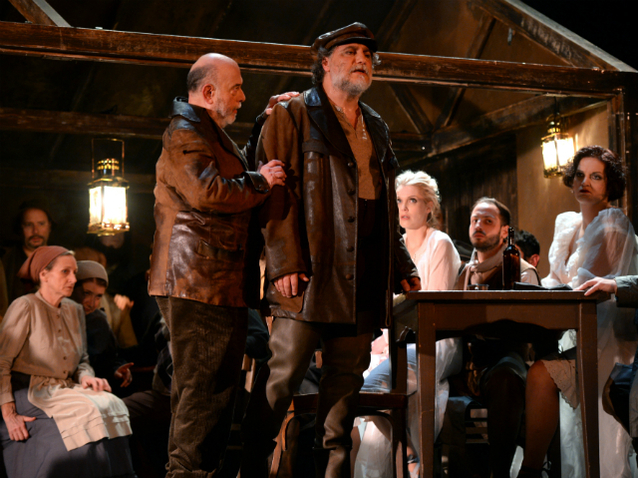
Peter
Grimes,
Monte
Carlo,
February
2018:
To mount
Peter
Grimes
is to
question
the
inner
drama:
is he a
victim,
an
executioner,
or both
at the
same
time? In
this new
production
at the
Opéra de
Monte
Carlo,
directed
by star
tenor
José
Cura,
the
first
option
prevails,
with a
choice
of a
powerful
confrontation
between
the
fisherman
and the
crowd,
clusters
of
humans
moving
in
beautifully
orchestrated
choreography.
Cura
offers a
traditional
and
realistic
vision
of the
village
(with
the inn
and
church
mentioned
in the
libretto)
in the
seaside
town in
Suffolk.
Although
very
present
in the
music,
the sea
is less
so in
the
staging,
although
there is
a boat
and the
many
fishing
nets
that
litter
the
ground
at the
opening
of the
curtain
are then
raised
to be
suspended
in the
flies.
Here
they
will
stay for
the
duration
of the
show,
before
being
reused
for the
last
scene,
when the
nets
come
down
little
by
little
during
the last
chords,
trapping
all the
inhabitants
within
the
village.
Previously
appearing
last
seasons
in the
opera
house
last
year in
Tannhäuser,
the
Argentine
tenor
embodies
a Peter
Grimes
trapped
in his
internal
prison.
With his
massive
body
folded
in on
itself,
his
clumsy
and
brutal
gestures,
Cura’s
Grimes
in a
ball of
nerves
ready to
explode
at any
moment,
evincing
a
physical
impossibility
to
exist,
to
live.
He must
be heard
singing
a
capella,
his eyes
fixed
and
misted,
suddenly
fragile
and
ready to
die.
What’s
more,
Cura
displayed
dazzling
vocal
health,
be in in
the
middle
or high
register,
modulating
his
instrument
with
ease,
alternating
sumptuous
piannissimi
with
heroic
power
with a
naturalness
that
commands
admiration.
This new
role is
a good
one to
add to
Cura’s
incredible
list of
achievements….
Opera
Online,
28
February
2018
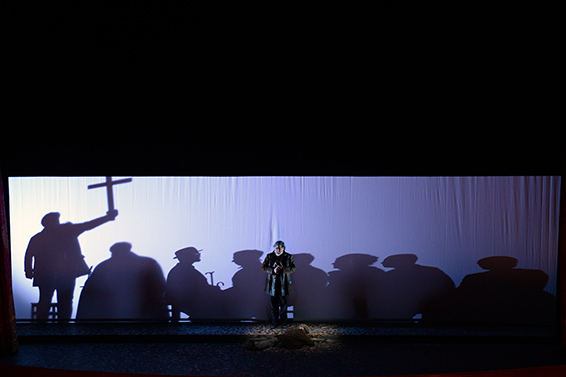
Peter
Grimes,
Monte
Carlo,
February
2018:
Peter Grimes culminates
in the
creation
of the
last
opera
character,
after
Wozzeck
or Lulu,
to touch
our
sensibilities,
to
become a
myth.
Grimes
is
indeed a
man
alone;
arrayed
before
him are
not just
one or
two or
three
characters
but an
entire
village,
the
“borough”
from the
title of
George
Crabbe’s
poem.
Peter
Grimes
is the
story of
this
great
tête-à-tête
between
a man
and
everyone
else,
with the
sea
invading
everything,
both the
stage
and the
music.
Sailors'
songs
and
raging
seas,
storms,
the
cries of
nature
and
elements,
the call
of the
marginal
man whom
a woman
will
betray,
the
woman
who is
the only
one who
had
helped
him and
who,
with her
confession
“O!
Peter!
We have
failed,“
both
abandons
and
murders
him.
A
regular
on the
Monegasque
scene
and last
year’s
formidable
Tannhäuser,
José
Cura
designed,
in
co-production
with the
Opera of
Bonn,
this
Peter
Grimes.
The
artist
assumed
a
protean
role,
singing
the
title
role,
directing,
setting
the
staging
and
designing
the
costumes.
He
created
a
satisfying
production
because
he
understood
the
scope of
the
complex
psychology
inherent
the
role.
The
ensemble
is
encased
in
good-taste
classicism,
the
movement
of the
crowd is
natural
without
awkward
poses,
and the
star
tenor
approaches
the hero
by
giving
him the
nuances
of a
Lord
Byron, a
sort of
an
uncultivated
intellectual
who
seems
animated
by a
poetic
gift.
Of an
unusual
physical
strength,
with a
voice
almost
too
beautiful
for the
role,
between
vulnerability
and
contradictions,
we could
imagine
this
Grimes
wreaking
havoc
in an
English
port
bar…an
image
rejected
by the
Argentine
to
remove
ambiguity
[and
present]
a man
who had
suffered.
With an
imagination
rich
enough
to
inspire
him with
the
desire
to live
in
better
conditions
yet
constantly
facing
frustrations,
José
Cura’s
Grimes
marvelously
expresses
the
torments
that
tear at
this
solitary
fisherman,
favoring
the
figure
of the
hopeless,
the
enlightened
poet (it
is
necessary
to hear
his
hallucination
in the
song in
the
tavern)
and a
surly
but
touched
lover.
Neither
hero nor
villain
but
doubtless
subtlety
disruptive…..

|
